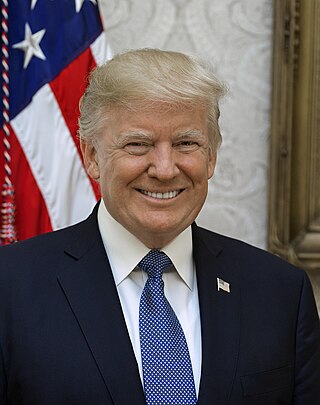
Donald Trump
Donald John Trump is an American politician, media personality, and businessman who served as the 45th president of the United States from 2017 to 2021.
Donald Trump's administration officially announces the recognition of Jerusalem as the capital of Israel.

Donald John Trump is an American politician, media personality, and businessman who served as the 45th president of the United States from 2017 to 2021.

On December 6, 2017, then-U.S. President Donald Trump announced that the U.S. would recognize Jerusalem as the capital of Israel, and ordered the planning of the relocation of Israel's U.S. Embassy from Tel Aviv to Jerusalem. Israeli Prime Minister Benjamin Netanyahu welcomed the decision and praised the announcement. On December 8, U.S. Secretary of State Rex Tillerson clarified that Trump's statement "did not indicate any final status for Jerusalem" and "was very clear that the final status, including the borders, would be left to the two parties to negotiate and decide".
In the Venezuelan parliamentary election, the ruling United Socialist Party lost control of the National Assembly for the first time in 16 years.

Parliamentary elections were held in Venezuela on 6 December 2015 to elect the 164 deputies and three indigenous representatives of the National Assembly. They were the fourth parliamentary elections to take place after the 1999 constitution, which abolished the bicameral system in favour of a unicameral parliament, and the first to take place after the death of President Hugo Chávez. Despite predictions from the opposition of a possible last-minute cancellation, the elections took place as scheduled, with the majority of polls showing the Democratic Unity Roundtable (MUD) holding a wide lead over the ruling United Socialist Party of Venezuela (PSUV) and its wider alliance, the Great Patriotic Pole (GPP).

The United Socialist Party of Venezuela is a left-wing to far-left socialist political party which has been the ruling party of Venezuela since 2010. It was formed from a merger of some of the political and social forces that support the Bolivarian Revolution led by President Hugo Chávez. It is the largest political party in Venezuela and the 11th largest in the world with more than 7 million active members as of 2014.

The National Assembly is the legislature for Venezuela that was first elected in 2000. It is a unicameral body made up of a variable number of members, who were elected by a "universal, direct, personal, and secret" vote partly by direct election in state-based voting districts, and partly on a state-based party-list proportional representation system. The number of seats is constant, each state and the Capital district elected three representatives plus the result of dividing the state population by 1.1% of the total population of the country. Three seats are reserved for representatives of Venezuela's indigenous peoples and elected separately by all citizens, not just those with indigenous backgrounds. For the 2010 to 2015 the number of seats was 165. All deputies serve five-year terms. The National Assembly meets in the Federal Legislative Palace in Venezuela's capital, Caracas.
Venezuelan parliamentary election: For the first time in 17 years, the United Socialist Party of Venezuela loses its majority in parliament.

Parliamentary elections were held in Venezuela on 6 December 2015 to elect the 164 deputies and three indigenous representatives of the National Assembly. They were the fourth parliamentary elections to take place after the 1999 constitution, which abolished the bicameral system in favour of a unicameral parliament, and the first to take place after the death of President Hugo Chávez. Despite predictions from the opposition of a possible last-minute cancellation, the elections took place as scheduled, with the majority of polls showing the Democratic Unity Roundtable (MUD) holding a wide lead over the ruling United Socialist Party of Venezuela (PSUV) and its wider alliance, the Great Patriotic Pole (GPP).

The United Socialist Party of Venezuela is a left-wing to far-left socialist political party which has been the ruling party of Venezuela since 2010. It was formed from a merger of some of the political and social forces that support the Bolivarian Revolution led by President Hugo Chávez. It is the largest political party in Venezuela and the 11th largest in the world with more than 7 million active members as of 2014.
NASA reveals photographs taken by Mars Global Surveyor suggesting the presence of liquid water on Mars.

The National Aeronautics and Space Administration is an independent agency of the US federal government responsible for the civil space program, aeronautics research, and space research.

Mars Global Surveyor (MGS) was an American robotic space probe developed by NASA's Jet Propulsion Laboratory and launched November 1996. MGS was a global mapping mission that examined the entire planet, from the ionosphere down through the atmosphere to the surface. As part of the larger Mars Exploration Program, Mars Global Surveyor performed atmospheric monitoring for sister orbiters during aerobraking, and helped Mars rovers and lander missions by identifying potential landing sites and relaying surface telemetry.

Almost all water on Mars today exists as ice, though it also exists in small quantities as vapor in the atmosphere. What was thought to be low-volume liquid brines in shallow Martian soil, also called recurrent slope lineae, may be grains of flowing sand and dust slipping downhill to make dark streaks. The only place where water ice is visible at the surface is at the north polar ice cap. Abundant water ice is also present beneath the permanent carbon dioxide ice cap at the Martian south pole and in the shallow subsurface at more temperate conditions. More than 5 million km3 of ice have been detected at or near the surface of Mars, enough to cover the whole planet to a depth of 35 meters (115 ft). Even more ice is likely to be locked away in the deep subsurface.
An Iranian Lockheed C-130 transport aircraft crashed into a ten-floor apartment building in a residential area of Tehran, killing over 100 people.
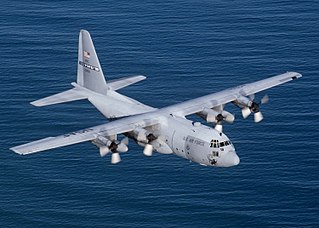
The Lockheed C-130 Hercules is an American four-engine turboprop military transport aircraft designed and built by Lockheed. Capable of using unprepared runways for takeoffs and landings, the C-130 was originally designed as a troop, medevac, and cargo transport aircraft. The versatile airframe has found uses in other roles, including as a gunship (AC-130), for airborne assault, search and rescue, scientific research support, weather reconnaissance, aerial refueling, maritime patrol, and aerial firefighting. It is now the main tactical airlifter for many military forces worldwide. More than 40 variants of the Hercules, including civilian versions marketed as the Lockheed L-100, operate in more than 60 nations.

On 6 December 2005 at 14:10 local time, a Lockheed C-130 Hercules military transport aircraft of the Islamic Republic of Iran Air Force, tail number 5-8519, c/n 4399, crashed into a ten-storey apartment building in a residential area of Tehran, the capital city of Iran.

Tehran is the largest city in Tehran Province and the capital of Iran. With a population of around 9 million in the city and 15 million in the larger metropolitan area of Greater Tehran, Tehran is the most populous city in Iran and Western Asia, and has the second-largest metropolitan area in the Middle East, after Cairo. It is ranked 24th in the world by metropolitan area population.
An Iranian Air Force C-130 military transport aircraft crashes into a ten-floor apartment building in a residential area of Tehran, killing all 94 on board and 12 more on the ground.
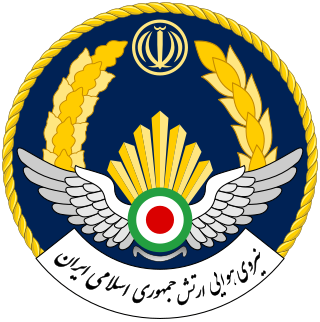
The Islamic Republic of Iran Air Force (IRIAF); Persian: نیروی هوایی ارتش جمهوری اسلامی ایران, Nirvi-ye Hevayi-ye Artesh-e Jimhuri-ye Eslâmi-ye Iran) is the aviation branch of the Islamic Republic of Iran Army. The present air force came into being when the Imperial Iranian Air Force was renamed in 1979 following the Iranian Revolution. The IRIAF was heavily involved in the Iran–Iraq War, carrying out major operations like Operation Kaman 99, Operation Sultan 10, the H-3 airstrike, and the first attack on a nuclear reactor in history, Operation Scorch Sword. As a result of eight years of aerial combat in that conflict, the IRIAF has the second highest claimed number of fighter aces in the region, exceeded only by the Israeli Air Force; as many as seven IRIAF pilots claimed more than six kills, mostly achieved in the F-14 Tomcat. Veterans of the Iran–Iraq War would go on to form the core of the IRIAF command.

The Lockheed C-130 Hercules is an American four-engine turboprop military transport aircraft designed and built by Lockheed. Capable of using unprepared runways for takeoffs and landings, the C-130 was originally designed as a troop, medevac, and cargo transport aircraft. The versatile airframe has found uses in other roles, including as a gunship (AC-130), for airborne assault, search and rescue, scientific research support, weather reconnaissance, aerial refueling, maritime patrol, and aerial firefighting. It is now the main tactical airlifter for many military forces worldwide. More than 40 variants of the Hercules, including civilian versions marketed as the Lockheed L-100, operate in more than 60 nations.

On 6 December 2005 at 14:10 local time, a Lockheed C-130 Hercules military transport aircraft of the Islamic Republic of Iran Air Force, tail number 5-8519, c/n 4399, crashed into a ten-storey apartment building in a residential area of Tehran, the capital city of Iran.

Tehran is the largest city in Tehran Province and the capital of Iran. With a population of around 9 million in the city and 15 million in the larger metropolitan area of Greater Tehran, Tehran is the most populous city in Iran and Western Asia, and has the second-largest metropolitan area in the Middle East, after Cairo. It is ranked 24th in the world by metropolitan area population.
The Recording Industry Association of America filed a lawsuit against the peer-to-peer file sharing network Napster, alleging that the service facilitated widespread copyright infringement.

The Recording Industry Association of America (RIAA) is a trade organization that represents the music recording industry in the United States. Its members consist of record labels and distributors that the RIAA says "create, manufacture, and/or distribute approximately 85% of all legally sold recorded music in the United States". RIAA is headquartered in Washington, D.C.
A&M Records, Inc. v. Napster, Inc., 114 F.Supp.2d 896 (2000), was the district court case which preceded the landmark intellectual property case of A&M Records, Inc. v. Napster, Inc., 239 F.3d 1004 (2001). The case was heard by Judge Marilyn Hall Patel of the United States District Court for the Northern District of California. Napster appealed this case to United States Court of Appeals for the Ninth Circuit.
Peer-to-peer file sharing is the distribution and sharing of digital media using peer-to-peer (P2P) networking technology. P2P file sharing allows users to access media files such as books, music, movies, and games using a P2P software program that searches for other connected computers on a P2P network to locate the desired content. The nodes (peers) of such networks are end-user computers and distribution servers.

Napster was a peer-to-peer file sharing application. It originally launched on June 1, 1999, with an emphasis on digital audio file distribution. Audio songs shared on the service were typically encoded in the MP3 format. It was founded by Shawn Fanning, Sean Parker, and Hugo Sáez Contreras. As the software became popular, the company ran into legal difficulties over copyright infringement. It ceased operations in 2001 after losing a wave of lawsuits and filed for bankruptcy in June 2002.

Copyright infringement is the use of works protected by copyright without permission for a usage where such permission is required, thereby infringing certain exclusive rights granted to the copyright holder, such as the right to reproduce, distribute, display or perform the protected work, or to make derivative works. The copyright holder is typically the work's creator, or a publisher or other business to whom copyright has been assigned. Copyright holders routinely invoke legal and technological measures to prevent and penalize copyright infringement.
A&M Records, Inc. v. Napster, Inc.: The Recording Industry Association of America sues the peer-to-peer file-sharing service Napster, alleging copyright infringement.
A&M Records, Inc. v. Napster, Inc., 114 F.Supp.2d 896 (2000), was the district court case which preceded the landmark intellectual property case of A&M Records, Inc. v. Napster, Inc., 239 F.3d 1004 (2001). The case was heard by Judge Marilyn Hall Patel of the United States District Court for the Northern District of California. Napster appealed this case to United States Court of Appeals for the Ninth Circuit.

The Recording Industry Association of America (RIAA) is a trade organization that represents the music recording industry in the United States. Its members consist of record labels and distributors that the RIAA says "create, manufacture, and/or distribute approximately 85% of all legally sold recorded music in the United States". RIAA is headquartered in Washington, D.C.

Peer-to-peer (P2P) computing or networking is a distributed application architecture that partitions tasks or workloads between peers. Peers are equally privileged, equipotent participants in the network. They are said to form a peer-to-peer network of nodes.
File sharing is the practice of distributing or providing access to digital media, such as computer programs, multimedia, documents or electronic books. Common methods of storage, transmission and dispersion include removable media, centralized servers on computer networks, Internet-based hyperlinked documents, and the use of distributed peer-to-peer networking.

Napster was a peer-to-peer file sharing application. It originally launched on June 1, 1999, with an emphasis on digital audio file distribution. Audio songs shared on the service were typically encoded in the MP3 format. It was founded by Shawn Fanning, Sean Parker, and Hugo Sáez Contreras. As the software became popular, the company ran into legal difficulties over copyright infringement. It ceased operations in 2001 after losing a wave of lawsuits and filed for bankruptcy in June 2002.

Copyright infringement is the use of works protected by copyright without permission for a usage where such permission is required, thereby infringing certain exclusive rights granted to the copyright holder, such as the right to reproduce, distribute, display or perform the protected work, or to make derivative works. The copyright holder is typically the work's creator, or a publisher or other business to whom copyright has been assigned. Copyright holders routinely invoke legal and technological measures to prevent and penalize copyright infringement.
in Venezuela, Hugo Chávez is victorious in presidential elections.
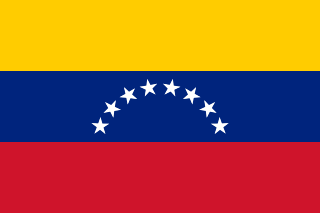
Venezuela, officially the Bolivarian Republic of Venezuela, is a country on the northern coast of South America, consisting of a continental landmass and many islands and islets in the Caribbean Sea. It has a territorial extension of 916,445 km2 (353,841 sq mi), and its population was estimated at 29 million in 2022. The capital and largest urban agglomeration is the city of Caracas.
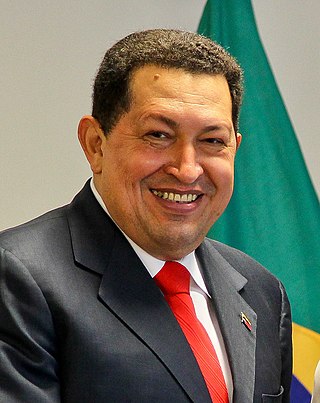
Hugo Rafael Chávez Frías was a Venezuelan politician who was president of Venezuela from 1999 until his death in 2013, except for a brief period in 2002. Chávez was also leader of the Fifth Republic Movement political party from its foundation in 1997 until 2007, when it merged with several other parties to form the United Socialist Party of Venezuela (PSUV), which he led until 2012.
A Russian Antonov An-124 Ruslan cargo plane crashes into an apartment complex near Irkutsk, Siberia, killing 67.

The Antonov An-124 Ruslan is a large, strategic airlift, four-engined aircraft that was designed in the 1980s by the Antonov design bureau in the Ukrainian SSR, then part of the Soviet Union (USSR). The An-124 is the world's 2nd heaviest gross weight production cargo airplane and heaviest operating cargo aircraft, behind the destroyed one-off Antonov An-225 Mriya and the Boeing 747-8. The An-124 remains the largest military transport aircraft in service.

On 6 December 1997 a Russian Air Force Antonov An-124-100, en route from Irkutsk Northwest Airport to Cam Ranh Air Base in Vietnam, crashed in a residential area after take-off from Irkutsk-2 airport.

Irkutsk is the largest city and administrative center of Irkutsk Oblast, Russia. With a population of 617,473 as of the 2010 Census, Irkutsk is the 25th-largest city in Russia by population, the fifth-largest in the Siberian Federal District, and one of the largest cities in Siberia.

Siberia is an extensive geographical region, constituting all of North Asia, from the Ural Mountains in the west to the Pacific Ocean in the east. It has been a part of Russia since the latter half of the 16th century, after the Russians conquered lands east of the Ural Mountains. Siberia is vast and sparsely populated, covering an area of over 13.1 million square kilometres (5,100,000 sq mi), but home to merely one-fifth of Russia's population. Novosibirsk, Krasnoyarsk and Omsk are the largest cities in the region.
The Babri Masjid in Ayodhya, India, was demolished by Hindu Kar Sevaks, who believed that it was built on the birthplace of Rama.
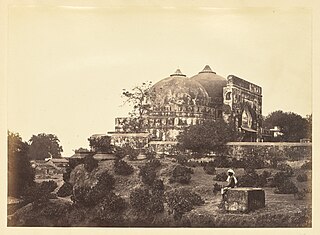
Babri Masjid was a mosque in Ayodhya, India, at a site believed by many Hindus to be the birthplace of Hindu deity Rama. It has been a focus of dispute between the Hindu and Muslim communities since the 18th century. According to the mosque's inscriptions, it was built in 1528–29 by Mir Baqi, a general of the Mughal emperor Babur. The mosque was attacked and demolished by a Hindu nationalist mob in 1992, which ignited communal violence across the Indian subcontinent.

Ayodhya is a city situated on the banks of holy river Saryu in the Indian state of Uttar Pradesh. It is the administrative headquarters of the Faizabad district as well as the Faizabad division of Uttar Pradesh, India. Ayodhya city is administered by the Ayodhya Municipal Corporation, the governing civic body of the city.

The demolition of the Babri Masjid was illegally carried out on 6 December 1992 by a large group of activists of the Vishva Hindu Parishad and allied organisations. The 16th-century Babri Masjid in the city of Ayodhya, in Uttar Pradesh, had been the subject of a lengthy socio-political dispute, and was targeted after a political rally organised by Hindu nationalist organisations turned violent.

Sevā, in Hinduism and Sikhism, is the concept of selfless service that is performed without any expectation of result or award for performing it. Such services can be performed to benefit other human beings or society. Seva means "service". A more recent interpretation of the word is "dedication to others". In Hinduism, it is also known as karma yoga, as described in the Bhagavata Gita.
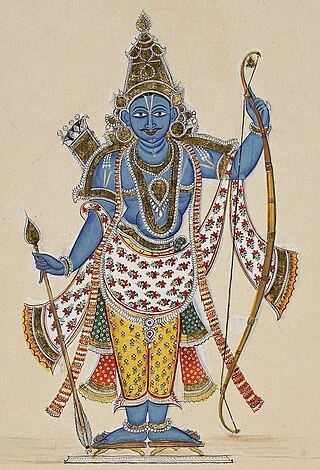
Rama, Ram, Raman or Ramar, also known as Ramachandra, is a major deity in Hinduism. He is the seventh and one of the most popular avatars of Vishnu. In Rama-centric traditions of Hinduism, he is considered the Supreme Being.
The Babri Masjid in Ayodhya, India, is demolished, leading to widespread riots causing the death of over 1,500 people.

Babri Masjid was a mosque in Ayodhya, India, at a site believed by many Hindus to be the birthplace of Hindu deity Rama. It has been a focus of dispute between the Hindu and Muslim communities since the 18th century. According to the mosque's inscriptions, it was built in 1528–29 by Mir Baqi, a general of the Mughal emperor Babur. The mosque was attacked and demolished by a Hindu nationalist mob in 1992, which ignited communal violence across the Indian subcontinent.

Ayodhya is a city situated on the banks of holy river Saryu in the Indian state of Uttar Pradesh. It is the administrative headquarters of the Faizabad district as well as the Faizabad division of Uttar Pradesh, India. Ayodhya city is administered by the Ayodhya Municipal Corporation, the governing civic body of the city.

The demolition of the Babri Masjid was illegally carried out on 6 December 1992 by a large group of activists of the Vishva Hindu Parishad and allied organisations. The 16th-century Babri Masjid in the city of Ayodhya, in Uttar Pradesh, had been the subject of a lengthy socio-political dispute, and was targeted after a political rally organised by Hindu nationalist organisations turned violent.
Yugoslav Wars: In Croatia, forces of the Serb-dominated Yugoslav People's Army (JNA) heaviest bombardment of Dubrovnik during a siege of seven months.

The Yugoslav Wars were a series of separate but related ethnic conflicts, wars of independence, and insurgencies that took place in the SFR Yugoslavia from 1991 to 2001. The conflicts both led up to and resulted from the breakup of Yugoslavia, which began in mid-1991, into six independent countries matching the six entities known as republics which previously composed Yugoslavia: Slovenia, Croatia, Bosnia and Herzegovina, Montenegro, Serbia, and North Macedonia. Yugoslavia's constituent republics declared independence due to unresolved tensions between ethnic minorities in the new countries, which fuelled the wars. While most of the conflicts ended through peace accords that involved full international recognition of new states, they resulted in a massive number of deaths as well as severe economic damage to the region.

Croatia, officially the Republic of Croatia, is a country at the crossroads of Central and Southeast Europe. It shares a coastline along the Adriatic Sea. It borders Slovenia to the northwest, Hungary to the northeast, Serbia to the east, Bosnia and Herzegovina and Montenegro to the southeast, and shares a maritime border with Italy to the west and southwest. Croatia's capital and largest city, Zagreb, forms one of the country's primary subdivisions, with twenty counties. The country spans an area of 56,594 square kilometres, hosting a population of nearly 3.9 million.

The Yugoslav People's Army, also called the Yugoslav National Army, was the military of the Socialist Federal Republic of Yugoslavia and its antecedents from 1945 to 1992.

Dubrovnik, historically known as Ragusa, is a city on the Adriatic Sea in the region of Dalmatia, in the southeastern semi-exclave of Croatia. It is one of the most prominent tourist destinations in the Mediterranean, a seaport and the centre of the Dubrovnik-Neretva County. Its total population is 42,615. In 1979, the city of Dubrovnik was added to the UNESCO list of World Heritage Sites in recognition of its outstanding medieval architecture and fortified old town.
An Italian Air Force military jet, abandoned by its pilot after an on-board fire, crashed into a high school near Bologna, killing 12 students and injuring 88 other people.

The Italian Air Force is the air force of the Italian Republic. The Italian Air Force was founded as an independent service arm on 28 March 1923 by King Victor Emmanuel III as the Regia Aeronautica. After World War II, when Italy became a republic following a referendum, the Regia Aeronautica was given its current name. Since its formation, the service has held a prominent role in modern Italian military history. The acrobatic display team is the Frecce Tricolori.

On 6 December 1990, an MB-326 military jet of the Italian Air Force crashed into a school building at Casalecchio di Reno, near Bologna, Italy, killing twelve students and injuring 88 other students and staff. The aircraft had been abandoned minutes earlier by its pilot, who ejected following an on-board fire and loss of control.

Bologna is the capital and largest city of the Emilia-Romagna region in Northern Italy. It is the seventh most populous city in Italy with about 400,000 inhabitants and 150 different nationalities. Its metropolitan area is home to more than 1,000,000 people. It is known as the Fat City for its rich cuisine, and the Red City for its Spanish-style red tiled rooftops and, more recently, its leftist politics. It is also called the Learned City because it is home to the oldest university in the world.
A military jet of the Italian Air Force, abandoned by its pilot after an on-board fire, crashed into a high school near Bologna, Italy, killing 12 students and injuring 88 other people.

The Italian Air Force is the air force of the Italian Republic. The Italian Air Force was founded as an independent service arm on 28 March 1923 by King Victor Emmanuel III as the Regia Aeronautica. After World War II, when Italy became a republic following a referendum, the Regia Aeronautica was given its current name. Since its formation, the service has held a prominent role in modern Italian military history. The acrobatic display team is the Frecce Tricolori.

On 6 December 1990, an MB-326 military jet of the Italian Air Force crashed into a school building at Casalecchio di Reno, near Bologna, Italy, killing twelve students and injuring 88 other students and staff. The aircraft had been abandoned minutes earlier by its pilot, who ejected following an on-board fire and loss of control.

Bologna is the capital and largest city of the Emilia-Romagna region in Northern Italy. It is the seventh most populous city in Italy with about 400,000 inhabitants and 150 different nationalities. Its metropolitan area is home to more than 1,000,000 people. It is known as the Fat City for its rich cuisine, and the Red City for its Spanish-style red tiled rooftops and, more recently, its leftist politics. It is also called the Learned City because it is home to the oldest university in the world.
Claiming to be "fighting feminism", 25-year-old Marc Lépine killed fourteen women before committing suicide at the École Polytechnique in Montreal, Canada.
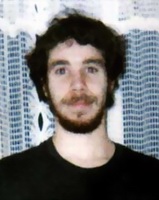
Marc Lépine was a Canadian antifeminist mass murderer from Montreal, Quebec, who, in 1989, murdered fourteen women, and wounded ten women and four men at the École Polytechnique de Montréal, an engineering school affiliated with the Université de Montréal, in the École Polytechnique massacre.

The École Polytechnique massacre, also known as the Montreal massacre, was an antifeminist mass shooting that occurred on December 6, 1989 at the École Polytechnique de Montréal in Montreal, Quebec. Fourteen women were murdered; another ten women and four men were injured.

Polytechnique Montréal is an engineering school affiliated with the Université de Montréal in Montreal, Quebec, Canada. In English it may occasionally be referred to as "Montreal Polytechnic", but is more often called to by its French name. The school offers graduate and postgraduate training, and is very active in research. Following tradition, new Bachelors of Engineering (B.Eng) graduating from Polytechnique Montréal receive an Iron Ring, during the Canadian Ritual of the Calling of an Engineer ceremony.

Montreal is the second-most populous city in Canada and most populous city in the Canadian province of Quebec. Founded in 1642 as Ville-Marie, or "City of Mary", it is named after Mount Royal, the triple-peaked hill around which the early city of Ville-Marie is built. The city is centred on the Island of Montreal, which obtained its name from the same origin as the city, and a few much smaller peripheral islands, the largest of which is Île Bizard. The city is 196 km (122 mi) east of the national capital Ottawa, and 258 km (160 mi) southwest of the provincial capital, Quebec City.
The École Polytechnique massacre (or Montreal Massacre): Marc Lépine, an anti-feminist gunman, murders 14 young women at the École Polytechnique in Montreal.

The École Polytechnique massacre, also known as the Montreal massacre, was an antifeminist mass shooting that occurred on December 6, 1989 at the École Polytechnique de Montréal in Montreal, Quebec. Fourteen women were murdered; another ten women and four men were injured.

Marc Lépine was a Canadian antifeminist mass murderer from Montreal, Quebec, who, in 1989, murdered fourteen women, and wounded ten women and four men at the École Polytechnique de Montréal, an engineering school affiliated with the Université de Montréal, in the École Polytechnique massacre.

Polytechnique Montréal is an engineering school affiliated with the Université de Montréal in Montreal, Quebec, Canada. In English it may occasionally be referred to as "Montreal Polytechnic", but is more often called to by its French name. The school offers graduate and postgraduate training, and is very active in research. Following tradition, new Bachelors of Engineering (B.Eng) graduating from Polytechnique Montréal receive an Iron Ring, during the Canadian Ritual of the Calling of an Engineer ceremony.

Montreal is the second-most populous city in Canada and most populous city in the Canadian province of Quebec. Founded in 1642 as Ville-Marie, or "City of Mary", it is named after Mount Royal, the triple-peaked hill around which the early city of Ville-Marie is built. The city is centred on the Island of Montreal, which obtained its name from the same origin as the city, and a few much smaller peripheral islands, the largest of which is Île Bizard. The city is 196 km (122 mi) east of the national capital Ottawa, and 258 km (160 mi) southwest of the provincial capital, Quebec City.
The Australian Capital Territory was granted self-government.

The Australian Capital Territory, known as the Federal Capital Territory (FCT) until 1938, is a landlocked federal territory of Australia containing the national capital Canberra and some surrounding townships. It is located in southeastern Australian mainland as an enclave completely within the state of New South Wales. Founded after Federation as the seat of government for the new nation, the territory hosts the headquarters of all important institutions of the Australian Government.
The history of the Australian Capital Territory (ACT) as a separate administrative division began in 1911, when it was transferred from New South Wales to the Australian federal government. The territory contains Australia's capital city Canberra and various smaller settlements. Until 1989, it also administered the Jervis Bay Territory, a small coastal region.
The Irish National Liberation Army exploded a time bomb in Ballykelly, Northern Ireland, killing eleven British Army soldiers and six civilians.
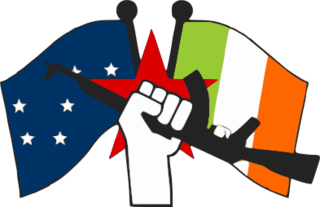
The Irish National Liberation Army is an Irish republican socialist paramilitary group formed on 10 December 1974, during the 30-year period of conflict known as "the Troubles". The group seeks to remove Northern Ireland from the United Kingdom and create a socialist republic encompassing all of Ireland. With membership estimated at 80–100 at their peak, it is the paramilitary wing of the Irish Republican Socialist Party (IRSP).
The Droppin Well bombing or Ballykelly bombing occurred on 6 December 1982, when the Irish National Liberation Army (INLA) detonated a time bomb at a disco in Ballykelly, County Londonderry, Northern Ireland. The disco, known as the Droppin Well, was targeted because it was frequented by British Army soldiers from nearby Shackleton Barracks. The bomb killed 17 people: eleven soldiers and six civilians, while dozens more were wounded. It was the deadliest attack during the INLA's paramilitary campaign and one of the deadliest bombings of The Troubles.

Ballykelly is a village and townland in County Londonderry, Northern Ireland. It lies 3 miles (4.8 km) west of Limavady on the main Derry to Limavady A2 road and is 15 miles (24 km) east of Derry. It is designated as a Large Village and in 2011 the population of Ballykelly was 2,107. It lies within Causeway Coast and Glens district.
The Troubles: The Irish National Liberation Army bombs a pub frequented by British soldiers in Ballykelly, Northern Ireland, killing eleven soldiers and six civilians.

The Irish National Liberation Army is an Irish republican socialist paramilitary group formed on 10 December 1974, during the 30-year period of conflict known as "the Troubles". The group seeks to remove Northern Ireland from the United Kingdom and create a socialist republic encompassing all of Ireland. With membership estimated at 80–100 at their peak, it is the paramilitary wing of the Irish Republican Socialist Party (IRSP).
The Droppin Well bombing or Ballykelly bombing occurred on 6 December 1982, when the Irish National Liberation Army (INLA) detonated a time bomb at a disco in Ballykelly, County Londonderry, Northern Ireland. The disco, known as the Droppin Well, was targeted because it was frequented by British Army soldiers from nearby Shackleton Barracks. The bomb killed 17 people: eleven soldiers and six civilians, while dozens more were wounded. It was the deadliest attack during the INLA's paramilitary campaign and one of the deadliest bombings of The Troubles.

Ballykelly is a village and townland in County Londonderry, Northern Ireland. It lies 3 miles (4.8 km) west of Limavady on the main Derry to Limavady A2 road and is 15 miles (24 km) east of Derry. It is designated as a Large Village and in 2011 the population of Ballykelly was 2,107. It lies within Causeway Coast and Glens district.
Spain ratifies the Spanish Constitution of 1978 in a referendum.

The Spanish Constitution is the democratic law that is supreme in the Kingdom of Spain. It was enacted after its approval in a constitutional referendum, and it is the culmination of the Spanish transition to democracy. The Constitution of 1978 is one of about a dozen of other historical Spanish constitutions and constitution-like documents; however, it is one of two fully democratic constitutions. It was sanctioned by King Juan Carlos I on 27 December, and published in the Boletín Oficial del Estado on 29 December, the date on which it became effective. The promulgation of the constitution marked the culmination of the Spanish transition to democracy after the death of general Francisco Franco, on 20 November 1975, who ruled over Spain as a military dictator for nearly 40 years. This led to the country undergoing a series of political, social and historical changes that transformed the Francoist regime into a democratic state.
South Africa grants independence to Bophuthatswana, although it is not recognized by any other country.

Bophuthatswana, officially the Republic of Bophuthatswana, was a Bantustan that was declared (nominally) independent by the apartheid regime of South Africa in 1977. However, its independence, like the other Bantustans was not recognized by any country other than South Africa.
Four members of the Provisional Irish Republican Army took two people hostage in a house on Balcombe Street in London, surrendering six days later.
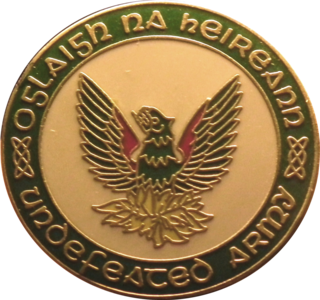
The Irish Republican Army, also known as the Provisional Irish Republican Army, and informally as the Provos, was an Irish republican paramilitary organisation that sought to end British rule in Northern Ireland, facilitate Irish reunification and bring about an independent, socialist republic encompassing all of Ireland. It was the most active republican paramilitary group during the Troubles. It saw itself as the army of the all-island Irish Republic and as the sole legitimate successor to the original IRA from the Irish War of Independence. It was designated a terrorist organisation in the United Kingdom and an unlawful organisation in the Republic of Ireland, both of whose authority it rejected.

The Balcombe Street siege was an incident involving members of the Provisional Irish Republican Army (IRA) and London's Metropolitan Police lasting from 6 to 12 December 1975. The siege ended with the surrender of the four IRA members and the release of their two hostages. The events were televised and watched by millions.
The Troubles: Fleeing from the police, a Provisional IRA unit takes a British couple hostage in their flat on Balcombe Street, London, beginning a six-day siege.

The Troubles were an ethno-nationalist conflict in Northern Ireland that lasted about 30 years from the late 1960s to 1998. Also known internationally as the Northern Ireland conflict, it is sometimes described as an "irregular war" or "low-level war". The conflict began in the late 1960s and is usually deemed to have ended with the Good Friday Agreement of 1998. Although the Troubles mostly took place in Northern Ireland, at times violence spilled over into parts of the Republic of Ireland, England and mainland Europe.

The Irish Republican Army, also known as the Provisional Irish Republican Army, and informally as the Provos, was an Irish republican paramilitary organisation that sought to end British rule in Northern Ireland, facilitate Irish reunification and bring about an independent, socialist republic encompassing all of Ireland. It was the most active republican paramilitary group during the Troubles. It saw itself as the army of the all-island Irish Republic and as the sole legitimate successor to the original IRA from the Irish War of Independence. It was designated a terrorist organisation in the United Kingdom and an unlawful organisation in the Republic of Ireland, both of whose authority it rejected.

The Balcombe Street siege was an incident involving members of the Provisional Irish Republican Army (IRA) and London's Metropolitan Police lasting from 6 to 12 December 1975. The siege ended with the surrender of the four IRA members and the release of their two hostages. The events were televised and watched by millions.
The Twenty-fifth Amendment: The United States House of Representatives votes 387–35 to confirm Gerald Ford as Vice President of the United States. (On November 27, the Senate confirmed him 92–3.)

The Twenty-fifth Amendment to the United States Constitution deals with presidential succession and disability.

The United States House of Representatives, often referred to as the House of Representatives, the U.S. House, or simply the House, is the lower chamber of the United States Congress, with the Senate being the upper chamber. Together they comprise the national bicameral legislature of the United States.

Gerald Rudolph Ford Jr. was an American politician who served as the 38th president of the United States from 1974 to 1977. He was the only president never to have been elected to the office of president or vice president. He previously served as the leader of the Republican Party in the House of Representatives, and was appointed to be the 40th vice president in 1973. When President Richard Nixon resigned in 1974, Ford succeeded to the presidency, but was defeated for election to a full term in 1976.

The vice president of the United States (VPOTUS) is the second-highest officer in the executive branch of the U.S. federal government, after the president of the United States, and ranks first in the presidential line of succession. The vice president is also an officer in the legislative branch, as the president of the Senate. In this capacity, the vice president is empowered to preside over Senate deliberations at any time, but may not vote except to cast a tie-breaking vote. The vice president is indirectly elected together with the president to a four-year term of office by the people of the United States through the Electoral College.

The United States Senate is the upper chamber of the United States Congress, with the House of Representatives being the lower chamber. Together they compose the national bicameral legislature of the United States.
Pakistan severs diplomatic relations with India, initiating the Indo-Pakistani War of 1971.

The Indo-Pakistani War of 1971 was a military confrontation between India and Pakistan that occurred during the Bangladesh Liberation War in East Pakistan from 3 December 1971 until the Pakistani capitulation in Dhaka on 16 December 1971. The war began with Pakistan's Operation Chengiz Khan which was preemptive aerial strikes on 11 Indian air stations, which led to the commencement of hostilities with Pakistan and Indian entry into the war for independence in East Pakistan on the side of Bengali nationalist forces, expanding the existing conflict with Indian and Pakistani forces engaging on both eastern and western fronts. Thirteen days after the war started, India achieved a clear upper hand, the Eastern Command of the Pakistan military signed the instrument of surrender on 16 December 1971 in Dhaka, marking the formation of East Pakistan as the new nation of Bangladesh. Approximately 93,000 Pakistani servicemen were taken prisoner by the Indian Army, which included 79,676 to 81,000 uniformed personnel of the Pakistan Armed Forces, including some Bengali soldiers who had remained loyal to Pakistan. The remaining 10,324 to 12,500 prisoners were civilians, either family members of the military personnel or collaborators (Razakars).
Altamont Free Concert: At a free concert performed by the Rolling Stones, eighteen-year old Meredith Hunter is stabbed to death by Hells Angels security guards.

The Altamont Speedway Free Festival was a counterculture rock concert in the United States, held on Saturday, December 6, 1969, at the Altamont Speedway outside of Livermore, California. Approximately 300,000 attended the concert, and some anticipated that it would be a "Woodstock West". The Woodstock festival was held in Bethel, New York, in mid-August, less than four months earlier.

The Rolling Stones are an English rock band formed in London in 1962. Active for six decades, they are one of the most popular and enduring bands of the rock era. In the early 1960s, the Rolling Stones pioneered the gritty, rhythmically driven sound that came to define hard rock. Their first stable line-up consisted of vocalist Mick Jagger, multi-instrumentalist Brian Jones, guitarist Keith Richards, bassist Bill Wyman, and drummer Charlie Watts. During their formative years, Jones was the primary leader: he assembled the band, named it, and drove their sound and image. After Andrew Loog Oldham became the group's manager in 1963, he encouraged them to write their own songs. Jagger and Richards became the primary creative force behind the band, alienating Jones, who had developed a drug addiction that interfered with his ability to contribute meaningfully.

The Hells Angels Motorcycle Club (HAMC) is a worldwide outlaw motorcycle club whose members typically ride Harley-Davidson motorcycles. In the United States and Canada, the Hells Angels are incorporated as the Hells Angels Motorcycle Corporation. Common nicknames for the club are the "H.A.", "Red & White", "HAMC", and "81". With a membership between 3,000 and 3,600 and 467 chapters in 59 countries, the HAMC is one of the largest motorcycle clubs in the world.
American physician Adrian Kantrowitz and his team performed the world's first pediatric heart transplant at Maimonides Medical Center in New York City.
Adrian Kantrowitz was an American cardiac surgeon whose team performed the world's second heart transplant attempt at Maimonides Medical Center in Brooklyn, New York on December 6, 1967. The infant lived for only six hours. At a press conference afterwards, Kantrowitz emphasized that he considered the operation to have been a failure.

A heart transplant, or a cardiac transplant, is a surgical transplant procedure performed on patients with end-stage heart failure or severe coronary artery disease when other medical or surgical treatments have failed. As of 2018, the most common procedure is to take a functioning heart, with or without both lungs, from a recently deceased organ donor and implant it into the patient. The patient's own heart is either removed and replaced with the donor heart or, much less commonly, the recipient's diseased heart is left in place to support the donor heart.

Maimonides Medical Center is a non-profit, non-sectarian hospital located in Borough Park, in the New York City borough of Brooklyn, in the U.S. state of New York. Maimonides is both a treatment facility and academic medical center with 711 beds, and more than 70 primary care and sub-specialty programs. As of August 1, 2016, Maimonides Medical Center was an adult and pediatric trauma center, and Brooklyn's only pediatric trauma center.
Adrian Kantrowitz performs the first human heart transplant in the United States.
Adrian Kantrowitz was an American cardiac surgeon whose team performed the world's second heart transplant attempt at Maimonides Medical Center in Brooklyn, New York on December 6, 1967. The infant lived for only six hours. At a press conference afterwards, Kantrowitz emphasized that he considered the operation to have been a failure.
The first U.S. attempt to launch a satellite failed with an explosion on the launch pad at Cape Canaveral.

Vanguard TV-3, was the first attempt of the United States to launch a satellite into orbit around the Earth, after the successful Soviet launches of Sputnik 1 and Sputnik 2. Vanguard TV-3 was a small satellite designed to test the launch capabilities of the three-stage Vanguard and study the effects of the environment on a satellite and its systems in Earth orbit. It was also to be used to obtain geodetic measurements through orbit analysis. Solar cells on Vanguard TV-3 were manufactured by Bell Laboratories.

A launch pad is an above-ground facility from which a rocket-powered missile or space vehicle is vertically launched. The term launch pad can be used to describe just the central launch platform, or the entire complex. The entire complex will include a launch mount or launch platform to physically support the vehicle, a service structure with umbilicals, and the infrastructure required to provide propellants, cryogenic fluids, electrical power, communications, telemetry, rocket assembly, payload processing, storage facilities for propellants and gases, equipment, access roads, and drainage.

Cape Canaveral Space Force Station (CCSFS) is an installation of the United States Space Force's Space Launch Delta 45, located on Cape Canaveral in Brevard County, Florida.
Project Vanguard: A launchpad explosion of Vanguard TV3 thwarts the first United States attempt to launch a satellite into Earth orbit.
Project Vanguard was a program managed by the United States Navy Naval Research Laboratory (NRL), which intended to launch the first artificial satellite into low Earth orbit using a Vanguard rocket. as the launch vehicle from Cape Canaveral Missile Annex, Florida.

A launch pad is an above-ground facility from which a rocket-powered missile or space vehicle is vertically launched. The term launch pad can be used to describe just the central launch platform, or the entire complex. The entire complex will include a launch mount or launch platform to physically support the vehicle, a service structure with umbilicals, and the infrastructure required to provide propellants, cryogenic fluids, electrical power, communications, telemetry, rocket assembly, payload processing, storage facilities for propellants and gases, equipment, access roads, and drainage.

Vanguard TV-3, was the first attempt of the United States to launch a satellite into orbit around the Earth, after the successful Soviet launches of Sputnik 1 and Sputnik 2. Vanguard TV-3 was a small satellite designed to test the launch capabilities of the three-stage Vanguard and study the effects of the environment on a satellite and its systems in Earth orbit. It was also to be used to obtain geodetic measurements through orbit analysis. Solar cells on Vanguard TV-3 were manufactured by Bell Laboratories.

A satellite or artificial satellite is an object intentionally placed into orbit in outer space. Except for passive satellites, most satellites have an electricity generation system for equipment on board, such as solar panels or radioisotope thermoelectric generators (RTGs). Most satellites also have a method of communication to ground stations, called transponders. Many satellites use a standardized bus to save cost and work, the most popular of which is small CubeSats. Similar satellites can work together as a group, forming constellations. Because of the high launch cost to space, satellites are designed to be as lightweight and robust as possible. Most communication satellites are radio relay stations in orbit and carry dozens of transponders, each with a bandwidth of tens of megahertz.
At the Melbourne Olympics, 14-year-old swimmer Sandra Morgan became the youngest Australian to win an Olympic gold medal.
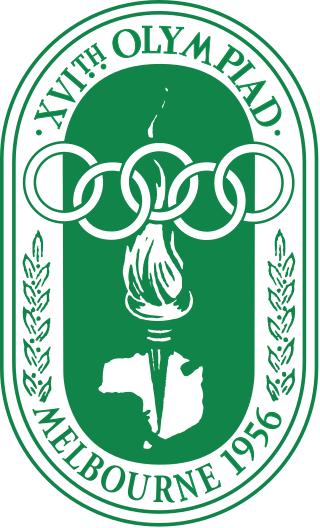
The 1956 Summer Olympics, officially known as the Games of the XVI Olympiad, were an international multi-sport event held in Melbourne, Victoria, Australia, from 22 November to 8 December 1956, with the exception of the equestrian events, which were held in Stockholm, Sweden, in June 1956.
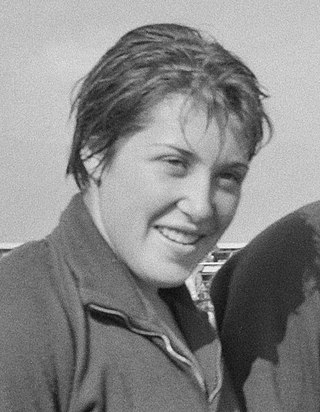
Sandra Anne Morgan, also known by her married name Sandra Beavis, or as Sandra Morgan-Beavis, is an Australian former freestyle swimmer who was part of the gold medal-winning team in the 4×100-metre freestyle relay at the 1956 Summer Olympics in Melbourne. At the age of 14 years and 6 months, she became the youngest Australian to win an Olympic gold medal, a record that still stands.
In what became known as the "Blood in the Water" match at the Melbourne Olympics, the Hungarian water polo team defeated the USSR 4–0 against the background of the Hungarian Revolution.
The "Blood in the Water" match was a water polo match between Hungary and the USSR at the 1956 Melbourne Olympics. The match took place on 6 December 1956 against the background of the 1956 Hungarian Revolution, and saw Hungary defeat the USSR 4–0. The name was coined after Hungarian player Ervin Zádor emerged during the last two minutes with blood pouring from above his eye after being punched by Soviet player Valentin Prokopov.
Ten nations competed in water polo at the 1956 Summer Olympics in Melbourne.

The Hungary men's national water polo team represents Hungary in international men's water polo competitions and is controlled by the Hungarian Water Polo Association. It is considered the world's top power in the history of water polo, having won 16 Olympic, 11 World Championship, 10 FINA World Cup, eight FINA World League, 24 European Championship and 16 Summer Universiade medals for a total of 88.

The Soviet Union men's national water polo team represented the Soviet Union in international water polo competitions. After the dissolution of the Soviet Union, the Russian national water polo team became the successor of Soviet team.
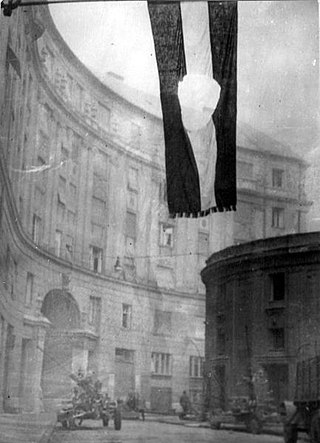
The Hungarian Revolution of 1956, also known as the Hungarian Uprising, was a countrywide revolution against the government of the Hungarian People's Republic (1949–1989) and the Hungarian domestic policies imposed by the Soviet Union (USSR).
A violent water polo match between Hungary and the USSR takes place during the 1956 Summer Olympics in Melbourne, against the backdrop of the Hungarian Revolution of 1956.
The "Blood in the Water" match was a water polo match between Hungary and the USSR at the 1956 Melbourne Olympics. The match took place on 6 December 1956 against the background of the 1956 Hungarian Revolution, and saw Hungary defeat the USSR 4–0. The name was coined after Hungarian player Ervin Zádor emerged during the last two minutes with blood pouring from above his eye after being punched by Soviet player Valentin Prokopov.

The 1956 Summer Olympics, officially known as the Games of the XVI Olympiad, were an international multi-sport event held in Melbourne, Victoria, Australia, from 22 November to 8 December 1956, with the exception of the equestrian events, which were held in Stockholm, Sweden, in June 1956.

Melbourne is the capital and most populous city of the Australian state of Victoria, and the second-most populous city in both Australia and Oceania. Its name generally refers to a 9,993 km2 (3,858 sq mi) metropolitan area known as Greater Melbourne, comprising an urban agglomeration of 31 local municipalities, although the name is also used specifically for the local municipality of City of Melbourne based around its central business area. The metropolis occupies much of the northern and eastern coastlines of Port Phillip Bay and spreads into the Mornington Peninsula, part of West Gippsland, as well as the hinterlands towards the Yarra Valley, the Dandenong and Macedon Ranges. It has a population over 5 million, mostly residing to the east side of the city centre, and its inhabitants are commonly referred to as "Melburnians".

The Hungarian Revolution of 1956, also known as the Hungarian Uprising, was a countrywide revolution against the government of the Hungarian People's Republic (1949–1989) and the Hungarian domestic policies imposed by the Soviet Union (USSR).
The Holocaust: Members of German Ordnungspolizei massacred 31 people in occupied Poland for helping Jews.

The Holocaust, also known as the Shoah, was the genocide of European Jews during World War II. Between 1941 and 1945, Nazi Germany and its collaborators systematically murdered some six million Jews across German-occupied Europe; around two-thirds of Europe's Jewish population. The murders were carried out in pogroms and mass shootings; by a policy of extermination through labor in concentration camps; and in gas chambers and gas vans in German extermination camps, chiefly Auschwitz-Birkenau, Bełżec, Chełmno, Majdanek, Sobibór, and Treblinka in occupied Poland.

The Ordnungspolizei, abbreviated Orpo, meaning "Order Police", were the uniformed police force in Nazi Germany from 1936 to 1945. The Orpo organisation was absorbed into the Nazi monopoly on power after regional police jurisdiction was removed in favour of the central Nazi government. The Orpo was controlled nominally by the Interior Ministry, but its executive functions rested with the leadership of the SS until the end of World War II. Owing to their green uniforms, Orpo were also referred to as Grüne Polizei. The force was first established as a centralised organisation uniting the municipal, city, and rural uniformed police that had been organised on a state-by-state basis.
Stary Ciepielów and Rekówka massacre was a Nazi war crime perpetrated by the German Gendarmerie in the villages of Stary Ciepielów and Rekówka within occupied Poland. On December 6, 1942, thirty-one Poles, including women and children, from the families of Kowalski, Kosior, Obuchiewicz and Skoczylas, were murdered for helping Jews. Among the victims were two Jewish refugees. The Stary Ciepielów and Rekówka massacre was one of the most severe crimes inflicted by Nazi-German occupants towards Poles who had helped Jews.

The occupation of Poland by Nazi Germany and the Soviet Union during World War II (1939–1945) began with the German-Soviet invasion of Poland in September 1939, and it was formally concluded with the defeat of Germany by the Allies in May 1945. Throughout the entire course of the occupation, the territory of Poland was divided between Nazi Germany and the Soviet Union (USSR) both of which intended to eradicate Poland's culture and subjugate its people. In the summer-autumn of 1941, the lands which were annexed by the Soviets were overrun by Germany in the course of the initially successful German attack on the USSR. After a few years of fighting, the Red Army drove the German forces out of the USSR and crossed into Poland from the rest of Central and Eastern Europe.
The British Secret Intelligence Service established a facility known as Camp X (pictured) in Ontario, Canada, to train covert agents in clandestine operations.
The Secret Intelligence Service (SIS), commonly known as MI6, is the foreign intelligence service of the United Kingdom, tasked mainly with the covert overseas collection and analysis of human intelligence in support of the UK's national security. SIS is one of the British intelligence agencies and the Chief of the Secret Intelligence Service ("C") is directly accountable to the Foreign Secretary.

Camp X was the unofficial name of the secret Special Training School No. 103, a Second World War British paramilitary installation for training covert agents in the methods required for success in clandestine operations. It was located on the northwestern shore of Lake Ontario between Whitby and Oshawa in Ontario, Canada. The area is known today as Intrepid Park, after the code name for Sir William Stephenson, Director of British Security Co-ordination (BSC), who established the program to create the training facility.
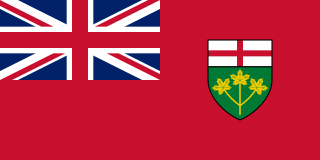
Ontario is one of the thirteen provinces and territories of Canada. Located in Central Canada, it is Canada's most populous province, with 38.3 percent of the country's population, and is the second-largest province by total area. Ontario is Canada's fourth-largest jurisdiction in total area when the territories of the Northwest Territories and Nunavut are included. It is home to the nation's capital city, Ottawa, and the nation's most populous city, Toronto, which is Ontario's provincial capital.
Espionage, spying, or intelligence gathering is the act of obtaining secret or confidential information (intelligence) from non-disclosed sources or divulging of the same without the permission of the holder of the information for a tangible benefit. A person who commits espionage is called an espionage agent or spy. Any individual or spy ring, in the service of a government, company, criminal organization, or independent operation, can commit espionage. The practice is clandestine, as it is by definition unwelcome. In some circumstances, it may be a legal tool of law enforcement and in others, it may be illegal and punishable by law.
World War II: Camp X opens in Canada to begin training Allied secret agents for the war.

World War II or the Second World War, often abbreviated as WWII or WW2, was a world war that lasted from 1939 to 1945. It involved the vast majority of the world's countries—including all of the great powers—forming two opposing military alliances: the Allies and the Axis powers. World War II was a total war that directly involved more than 100 million personnel from more than 30 countries.

Camp X was the unofficial name of the secret Special Training School No. 103, a Second World War British paramilitary installation for training covert agents in the methods required for success in clandestine operations. It was located on the northwestern shore of Lake Ontario between Whitby and Oshawa in Ontario, Canada. The area is known today as Intrepid Park, after the code name for Sir William Stephenson, Director of British Security Co-ordination (BSC), who established the program to create the training facility.
U.S. federal judge John M. Woolsey rules that James Joyce's novel Ulysses is not obscene.
John Munro Woolsey was a United States district judge of the United States District Court for the Southern District of New York. He was known "for his brilliant and poignantly phrased decisions", including several important precedents in First Amendment jurisprudence.
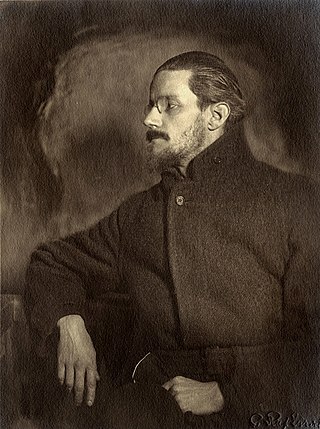
James Augustine Aloysius Joyce was an Irish novelist, poet, and literary critic. He contributed to the modernist avant-garde movement and is regarded as one of the most influential and important writers of the 20th century. Joyce's novel Ulysses (1922) is a landmark in which the episodes of Homer's Odyssey are paralleled in a variety of literary styles, particularly stream of consciousness. Other well-known works are the short-story collection Dubliners (1914), and the novels A Portrait of the Artist as a Young Man (1916) and Finnegans Wake (1939). His other writings include three books of poetry, a play, letters, and occasional journalism.

Ulysses is a modernist novel by Irish writer James Joyce. Parts of it were first serialized in the American journal The Little Review from March 1918 to December 1920, and the entire work was published in Paris by Sylvia Beach on 2 February 1922, Joyce's 40th birthday. It is considered one of the most important works of modernist literature and has been called "a demonstration and summation of the entire movement." According to Declan Kiberd, "Before Joyce, no writer of fiction had so foregrounded the process of thinking".
At the behest of the United States, the Colombian Army violently suppressed a month-long strike by United Fruit Company workers.
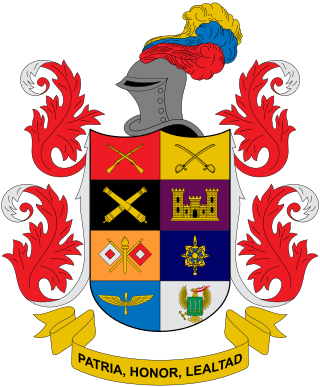
The National Army of Colombia is the land warfare service branch of the Military Forces of Colombia. With over 361,420 active personnel as of 2020, it is the largest and oldest service branch in Colombia, and the third largest army in the Americas after Brazil and the United States.

The Banana Massacre was a massacre of United Fruit Company workers that occurred between December 5 and 6, 1928 in the town of Ciénaga near Santa Marta, Colombia. A strike began on November 12, 1928, when the workers ceased to work until the company would reach an agreement with them to grant them dignified working conditions. After several weeks with no agreement, in which the United Fruit Company refused to negotiate with the workers, the conservative government of Miguel Abadía Méndez sent the Colombian Army in against the strikers, resulting in the massacre of 47 to 2,000 people.
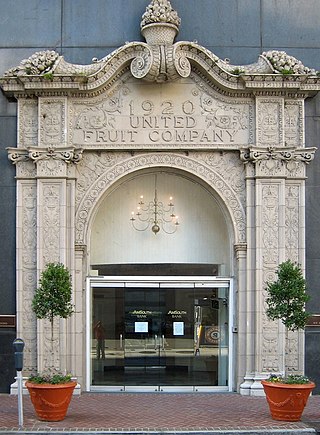
The United Fruit Company was an American multinational corporation that traded in tropical fruit grown on Latin American plantations and sold in the United States and Europe. The company was formed in 1899 from the merger of the Boston Fruit Company with Minor C. Keith's banana-trading enterprises. It flourished in the early and mid-20th century, and it came to control vast territories and transportation networks in Central America, the Caribbean coast of Colombia and the West Indies. Although it competed with the Standard Fruit Company for dominance in the international banana trade, it maintained a virtual monopoly in certain regions, some of which came to be called banana republics – such as Costa Rica, Honduras, and Guatemala.
The government of Colombia sends military forces to suppress a month-long strike by United Fruit Company workers, resulting in an unknown number of deaths.

The Banana Massacre was a massacre of United Fruit Company workers that occurred between December 5 and 6, 1928 in the town of Ciénaga near Santa Marta, Colombia. A strike began on November 12, 1928, when the workers ceased to work until the company would reach an agreement with them to grant them dignified working conditions. After several weeks with no agreement, in which the United Fruit Company refused to negotiate with the workers, the conservative government of Miguel Abadía Méndez sent the Colombian Army in against the strikers, resulting in the massacre of 47 to 2,000 people.
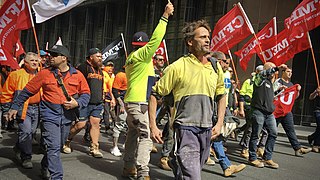
Strike action, also called labor strike, labour strike, or simply strike, is a work stoppage caused by the mass refusal of employees to work. A strike usually takes place in response to employee grievances. Strikes became common during the Industrial Revolution, when mass labor became important in factories and mines. As striking became a more common practice, governments were often pushed to act. When government intervention occurred, it was rarely neutral or amicable. Early strikes were often deemed unlawful conspiracies or anti-competitive cartel action and many were subject to massive legal repression by state police, federal military power, and federal courts. Many Western nations legalized striking under certain conditions in the late 19th and early 20th centuries.

The United Fruit Company was an American multinational corporation that traded in tropical fruit grown on Latin American plantations and sold in the United States and Europe. The company was formed in 1899 from the merger of the Boston Fruit Company with Minor C. Keith's banana-trading enterprises. It flourished in the early and mid-20th century, and it came to control vast territories and transportation networks in Central America, the Caribbean coast of Colombia and the West Indies. Although it competed with the Standard Fruit Company for dominance in the international banana trade, it maintained a virtual monopoly in certain regions, some of which came to be called banana republics – such as Costa Rica, Honduras, and Guatemala.
One year to the day after the signing of the Anglo-Irish Treaty, the Irish Free State comes into existence.

The Irish Free State was a state established in December 1922 under the Anglo-Irish Treaty of December 1921. The treaty ended the three-year Irish War of Independence between the forces of the Irish Republic – the Irish Republican Army (IRA) – and British Crown forces.
The Anglo-Irish Treaty is signed in London by British and Irish representatives.

The 1921 Anglo-Irish Treaty, commonly known in Ireland as The Treaty and officially the Articles of Agreement for a Treaty Between Great Britain and Ireland, was an agreement between the government of the United Kingdom of Great Britain and Ireland and representatives of the Irish Republic that concluded the Irish War of Independence. It provided for the establishment of the Irish Free State within a year as a self-governing dominion within the "community of nations known as the British Empire", a status "the same as that of the Dominion of Canada". It also provided Northern Ireland, which had been created by the Government of Ireland Act 1920, an option to opt out of the Irish Free State, which the Parliament of Northern Ireland exercised.

London is the capital and largest city of England and the United Kingdom, with a population of just under 9 million. It stands on the River Thames in south-east England at the head of a 50-mile (80 km) estuary down to the North Sea, and has been a major settlement for two millennia. The City of London, its ancient core and financial centre, was founded by the Romans as Londinium and retains its medieval boundaries. The City of Westminster, to the west of the City of London, has for centuries hosted the national government and parliament. Since the 19th century, the name "London" has also referred to the metropolis around this core, historically split between the counties of Middlesex, Essex, Surrey, Kent, and Hertfordshire, which largely comprises Greater London, governed by the Greater London Authority.
A ship in Halifax Harbour, Nova Scotia, Canada, carrying TNT and picric acid caught fire after a collision with another ship and caused the second-largest man-made accidental explosion in history.

Halifax Harbour is a large natural harbour on the Atlantic coast of Nova Scotia, Canada, located in the Halifax Regional Municipality. Halifax largely owes its existence to the harbour, being one of the largest and deepest ice-free natural harbours in the world. Before Confederation it was one of the most important commercial ports on the Atlantic seaboard. In 1917, it was the site of the world's largest man-made accidental explosion, when the SS Mont-Blanc blew up in the Halifax Explosion of December 6.

Nova Scotia is one of the thirteen provinces and territories of Canada. It is one of the three Maritime provinces and one of the four Atlantic provinces. Nova Scotia is Latin for "New Scotland".

Trinitrotoluene, more commonly known as TNT, more specifically 2,4,6-trinitrotoluene, and by its preferred IUPAC name 2-methyl-1,3,5-trinitrobenzene, is a chemical compound with the formula C6H2(NO2)3CH3. TNT is occasionally used as a reagent in chemical synthesis, but it is best known as an explosive material with convenient handling properties. The explosive yield of TNT is considered to be the standard comparative convention of bombs and asteroid impacts. In chemistry, TNT is used to generate charge transfer salts.

Picric acid is an organic compound with the formula (O2N)3C6H2OH. Its IUPAC name is 2,4,6-trinitrophenol (TNP). The name "picric" comes from Greek: πικρός (pikros), meaning "bitter", due to its bitter taste. It is one of the most acidic phenols. Like other strongly nitrated organic compounds, picric acid is an explosive, which is its primary use. It has also been used as medicine (antiseptic, burn treatments) and as a dye.

On the morning of 6 December 1917, the French cargo ship SS Mont-Blanc collided with the Norwegian vessel SS Imo in the waters of Halifax, Nova Scotia, Canada. The Mont-Blanc, laden with high explosives, caught fire and exploded, devastating the Richmond district of Halifax. 1,782 people were killed, largely in Halifax and Dartmouth, by the blast, debris, fires, or collapsed buildings, and an estimated 9,000 others were injured. The blast was the largest human-made explosion at the time, releasing the equivalent energy of roughly 2.9 kilotons of TNT (12 TJ).
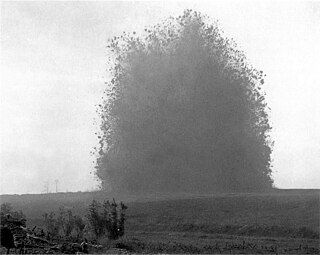
There have been many extremely large explosions, accidental and intentional, caused by modern high explosives, boiling liquid expanding vapour explosions (BLEVEs), older explosives such as gunpowder, volatile petroleum-based fuels such as gasoline, and other chemical reactions. This list contains the largest known examples, sorted by date. An unambiguous ranking in order of severity is not possible; a 1994 study by historian Jay White of 130 large explosions suggested that they need to be ranked by an overall effect of power, quantity, radius, loss of life and property destruction, but concluded that such rankings are difficult to assess.
World War I: USS Jacob Jones became the first American destroyer to be sunk by enemy action when it was torpedoed by German submarine SM U-53.

World War I or the First World War, often abbreviated as WWI or WW1, and referred to by some Anglophone authors as the "Great War" or the "War to End All Wars", was a global conflict which lasted from 1914 to 1918, and is considered one of the deadliest conflicts in history. Belligerents included much of Europe, the Russian Empire, the United States, and the Ottoman Empire, with fighting occurring throughout Europe, the Middle East, Africa, the Pacific, and parts of Asia. An estimated 9 million soldiers were killed in combat, plus another 23 million wounded, while 5 million civilians died as a result of military action, hunger, and disease. Millions more died in genocides within the Ottoman Empire and in the 1918 influenza pandemic, which was exacerbated by the movement of combatants during the war.

USS Jacob Jones was a Tucker-class destroyer built for the United States Navy prior to the American entry into World War I. The ship was the first U.S. Navy vessel named in honor of Jacob Jones.
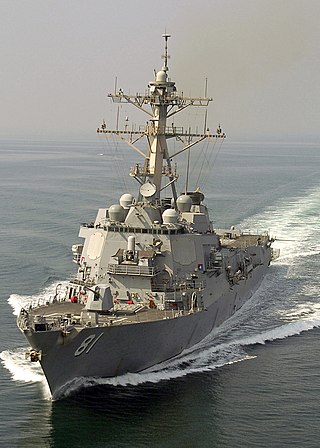
In naval terminology, a destroyer is a fast, manoeuvrable, long-endurance warship intended to escort larger vessels in a fleet, convoy or battle group and defend them against powerful short range attackers. They were originally developed in 1885 by Fernando Villaamil for the Spanish Navy as a defense against torpedo boats, and by the time of the Russo-Japanese War in 1904, these "torpedo boat destroyers" (TBDs) were "large, swift, and powerfully armed torpedo boats designed to destroy other torpedo boats". Although the term "destroyer" had been used interchangeably with "TBD" and "torpedo boat destroyer" by navies since 1892, the term "torpedo boat destroyer" had been generally shortened to simply "destroyer" by nearly all navies by the First World War.

A modern torpedo is an underwater ranged weapon launched above or below the water surface, self-propelled towards a target, and with an explosive warhead designed to detonate either on contact with or in proximity to the target. Historically, such a device was called an automotive, automobile, locomotive, or fish torpedo; colloquially a fish. The term torpedo originally applied to a variety of devices, most of which would today be called mines. From about 1900, torpedo has been used strictly to designate a self-propelled underwater explosive device.
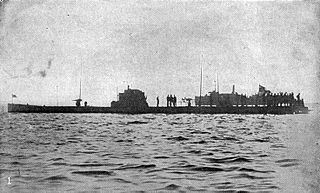
SM U-53 was one of the six Type U 51 U-boats of the Imperial German Navy during the First World War.
Finland declares independence from the Russian Empire.

The Finnish Declaration of Independence was adopted by the Parliament of Finland on 6 December 1917. It declared Finland an independent nation, ending its autonomy within Russia as the Grand Principality of Finland, with reference to a bill simultaneously delivered to the Parliament to make Finland an independent republic instead.

The Russian Empire was the final period of the Russian monarchy from 1721 to 1917, ruling across large parts of Eurasia. It succeeded the Tsardom of Russia following the Treaty of Nystad, which ended the Great Northern War. The rise of the Russian Empire coincided with the decline of neighbouring rival powers: the Swedish Empire, the Polish–Lithuanian Commonwealth, Qajar Iran, the Ottoman Empire, and Qing China. It also held colonies in North America between 1799 and 1867. Covering an area of approximately 22,800,000 square kilometres (8,800,000 sq mi), it remains the third-largest empire in history, surpassed only by the British Empire and the Mongol Empire; it ruled over a population of 125.6 million people per the 1897 Russian census, which was the only census carried out during the entire imperial period. Owing to its geographic extent across three continents at its peak, it featured great ethnic, linguistic, religious, and economic diversity.
Halifax Explosion: A munitions explosion near Halifax, Nova Scotia kills more than 1,900 people in the largest artificial explosion up to that time.

On the morning of 6 December 1917, the French cargo ship SS Mont-Blanc collided with the Norwegian vessel SS Imo in the waters of Halifax, Nova Scotia, Canada. The Mont-Blanc, laden with high explosives, caught fire and exploded, devastating the Richmond district of Halifax. 1,782 people were killed, largely in Halifax and Dartmouth, by the blast, debris, fires, or collapsed buildings, and an estimated 9,000 others were injured. The blast was the largest human-made explosion at the time, releasing the equivalent energy of roughly 2.9 kilotons of TNT (12 TJ).

Halifax is the capital and largest municipality of the Canadian province of Nova Scotia, and the largest municipality in Atlantic Canada. As of the 2021 Census, the municipal population was 439,819, with 348,634 people in its urban area. The regional municipality consists of four former municipalities that were amalgamated in 1996: Halifax, Dartmouth, Bedford, and Halifax County.

There have been many extremely large explosions, accidental and intentional, caused by modern high explosives, boiling liquid expanding vapour explosions (BLEVEs), older explosives such as gunpowder, volatile petroleum-based fuels such as gasoline, and other chemical reactions. This list contains the largest known examples, sorted by date. An unambiguous ranking in order of severity is not possible; a 1994 study by historian Jay White of 130 large explosions suggested that they need to be ranked by an overall effect of power, quantity, radius, loss of life and property destruction, but concluded that such rankings are difficult to assess.
World War I: USS Jacob Jones is the first American destroyer to be sunk by enemy action when it is torpedoed by German submarine SM U-53.

USS Jacob Jones was a Tucker-class destroyer built for the United States Navy prior to the American entry into World War I. The ship was the first U.S. Navy vessel named in honor of Jacob Jones.

In naval terminology, a destroyer is a fast, manoeuvrable, long-endurance warship intended to escort larger vessels in a fleet, convoy or battle group and defend them against powerful short range attackers. They were originally developed in 1885 by Fernando Villaamil for the Spanish Navy as a defense against torpedo boats, and by the time of the Russo-Japanese War in 1904, these "torpedo boat destroyers" (TBDs) were "large, swift, and powerfully armed torpedo boats designed to destroy other torpedo boats". Although the term "destroyer" had been used interchangeably with "TBD" and "torpedo boat destroyer" by navies since 1892, the term "torpedo boat destroyer" had been generally shortened to simply "destroyer" by nearly all navies by the First World War.

A modern torpedo is an underwater ranged weapon launched above or below the water surface, self-propelled towards a target, and with an explosive warhead designed to detonate either on contact with or in proximity to the target. Historically, such a device was called an automotive, automobile, locomotive, or fish torpedo; colloquially a fish. The term torpedo originally applied to a variety of devices, most of which would today be called mines. From about 1900, torpedo has been used strictly to designate a self-propelled underwater explosive device.

SM U-53 was one of the six Type U 51 U-boats of the Imperial German Navy during the First World War.
World War I: The Central Powers capture Bucharest.

World War I or the First World War, often abbreviated as WWI or WW1, and referred to by some Anglophone authors as the "Great War" or the "War to End All Wars", was a global conflict which lasted from 1914 to 1918, and is considered one of the deadliest conflicts in history. Belligerents included much of Europe, the Russian Empire, the United States, and the Ottoman Empire, with fighting occurring throughout Europe, the Middle East, Africa, the Pacific, and parts of Asia. An estimated 9 million soldiers were killed in combat, plus another 23 million wounded, while 5 million civilians died as a result of military action, hunger, and disease. Millions more died in genocides within the Ottoman Empire and in the 1918 influenza pandemic, which was exacerbated by the movement of combatants during the war.

The Central Powers, also known as the Central Empires, was one of the two main coalitions that fought in World War I (1914–1919). It consisted of the German Empire, Austria-Hungary, the Ottoman Empire, and the Kingdom of Bulgaria and was also known as the Quadruple Alliance. Colonies of these countries also fought on the Central Powers' side such as German New Guinea and German East Africa, until almost all of their colonies were occupied by the Allies.

Bucharest is the capital and largest city of Romania, as well as its cultural, industrial, and financial centre. It is located in the southeast of the country, on the banks of the Dâmbovița River, less than 60 km (37.3 mi) north of the Danube River and the Bulgarian border.
The Nefertiti Bust, listed among the "Top 10 Plundered Artifacts" by Time magazine, was found in Amarna, Egypt, before being taken to Germany.

The Nefertiti Bust is a painted stucco-coated limestone bust of Nefertiti, the Great Royal Wife of Egyptian pharaoh Akhenaten. The work is believed to have been crafted in 1345 BCE by Thutmose because it was found in his workshop in Amarna, Egypt. It is one of the most-copied works of ancient Egypt. Nefertiti has become one of the most famous women of the ancient world and an icon of feminine beauty.

Time is an American news magazine based in New York City. For nearly a century, it was published weekly, but starting in March 2020 it transitioned to every other week. It was first published in New York City on March 3, 1923, and for many years it was run by its influential co-founder, Henry Luce. A European edition is published in London and also covers the Middle East, Africa, and, since 2003, Latin America. An Asian edition is based in Hong Kong. The South Pacific edition, which covers Australia, New Zealand, and the Pacific Islands, is based in Sydney.

Amarna is an extensive Egyptian archaeological site containing the remains of what was the capital city of the late Eighteenth Dynasty. The city was established in 1346 BC, built at the direction of the Pharaoh Akhenaten, and abandoned shortly after his death in 1332 BC. The name that the ancient Egyptians used for the city is transliterated in English as Akhetaten or Akhetaton, meaning "the horizon of the Aten".
The Nefertiti Bust is discovered.

The Nefertiti Bust is a painted stucco-coated limestone bust of Nefertiti, the Great Royal Wife of Egyptian pharaoh Akhenaten. The work is believed to have been crafted in 1345 BCE by Thutmose because it was found in his workshop in Amarna, Egypt. It is one of the most-copied works of ancient Egypt. Nefertiti has become one of the most famous women of the ancient world and an icon of feminine beauty.
A mine explosion in Monongah, West Virginia, killed 362 people and led to the establishment of the United States Bureau of Mines.

The Monongah mining disaster of Monongah, West Virginia occurred on December 6, 1907, and has been described as "the worst mining disaster in American history." 362 miners were killed. The explosion occurred in Fairmont Coal Company’s No. 6 and No. 8 mines, and was one of the contributing events leading to the creation of the United States Bureau of Mines.

Monongah is a town in Marion County, West Virginia, United States, situated where Booths Creek flows into the West Fork River. The population was 972 at the 2020 census. Monongah was chartered in 1891, based on Chapter 47 of West Virginia code. Its name is derived from the nearby Monongahela River.
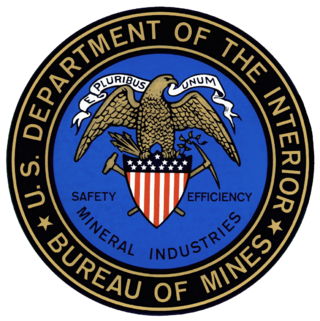
For most of the 20th century, the United States Bureau of Mines (USBM) was the primary United States government agency conducting scientific research and disseminating information on the extraction, processing, use, and conservation of mineral resources. The Bureau was abolished in 1996.
A coal mine explosion at Monongah, West Virginia, kills 362 workers.

The Monongah mining disaster of Monongah, West Virginia occurred on December 6, 1907, and has been described as "the worst mining disaster in American history." 362 miners were killed. The explosion occurred in Fairmont Coal Company’s No. 6 and No. 8 mines, and was one of the contributing events leading to the creation of the United States Bureau of Mines.

Monongah is a town in Marion County, West Virginia, United States, situated where Booths Creek flows into the West Fork River. The population was 972 at the 2020 census. Monongah was chartered in 1891, based on Chapter 47 of West Virginia code. Its name is derived from the nearby Monongahela River.
President Theodore Roosevelt announced the Roosevelt Corollary to the Monroe Doctrine, justifying the exercise of "international police power" by the U.S. in the Western Hemisphere.

Theodore Roosevelt Jr., often referred to as Teddy or by his initials, T. R., was an American politician, statesman, soldier, conservationist, naturalist, historian, and writer who served as the 26th president of the United States from 1901 to 1909. He previously served as the 25th vice president under President William McKinley from March to September 1901 and as the 33rd governor of New York from 1899 to 1900. Assuming the presidency after McKinley's assassination, Roosevelt emerged as a leader of the Republican Party and became a driving force for anti-trust and Progressive policies.

In the history of United States foreign policy, the Roosevelt Corollary was an addition to the Monroe Doctrine articulated by President Theodore Roosevelt in his State of the Union address in 1904 after the Venezuelan crisis of 1902–1903. The corollary states that the United States could intervene in the internal affairs of Latin American countries if they committed flagrant and chronic wrongdoings.

The Monroe Doctrine was a United States foreign policy position that opposed European colonialism in the Western Hemisphere. It held that any intervention in the political affairs of the Americas by foreign powers was a potentially hostile act against the United States. The doctrine was central to American foreign policy for much of the 19th and early 20th centuries.
Theodore Roosevelt articulated his "Corollary" to the Monroe Doctrine, stating that the U.S. would intervene in the Western Hemisphere should Latin American governments prove incapable or unstable.

Theodore Roosevelt Jr., often referred to as Teddy or by his initials, T. R., was an American politician, statesman, soldier, conservationist, naturalist, historian, and writer who served as the 26th president of the United States from 1901 to 1909. He previously served as the 25th vice president under President William McKinley from March to September 1901 and as the 33rd governor of New York from 1899 to 1900. Assuming the presidency after McKinley's assassination, Roosevelt emerged as a leader of the Republican Party and became a driving force for anti-trust and Progressive policies.

In the history of United States foreign policy, the Roosevelt Corollary was an addition to the Monroe Doctrine articulated by President Theodore Roosevelt in his State of the Union address in 1904 after the Venezuelan crisis of 1902–1903. The corollary states that the United States could intervene in the internal affairs of Latin American countries if they committed flagrant and chronic wrongdoings.
London becomes the world's first city to host licensed taxicabs.

A taxi, also known as a taxicab or simply a cab, is a type of vehicle for hire with a driver, used by a single passenger or small group of passengers, often for a non-shared ride. A taxicab conveys passengers between locations of their choice. This differs from public transport where the pick-up and drop-off locations are decided by the service provider, not by the customers, although demand responsive transport and share taxis provide a hybrid bus/taxi mode.
The Washington Monument in Washington, D.C., is completed.

The Washington Monument is an obelisk shaped building within the National Mall in Washington, D.C., built to commemorate George Washington, once commander-in-chief of the Continental Army (1775–1784) in the American Revolutionary War and the first President of the United States (1789–1797). Located almost due east of the Reflecting Pool and the Lincoln Memorial, the monument, made of marble, granite, and bluestone gneiss, is both the world's tallest predominantly stone structure and the world's tallest obelisk, standing 554 feet 7+11⁄32 inches (169.046 m) tall according to the U.S. National Geodetic Survey or 555 feet 5+1⁄8 inches (169.294 m) tall, according to the National Park Service. It is the tallest monumental column in the world if all are measured above their pedestrian entrances. It was the tallest structure in the world between 1884 and 1889, after which it was overtaken by the Eiffel Tower in Paris. Previously, the tallest structure was the Cologne Cathedral.
Transit of Venus, second and last of the 19th century.

The 1882 transit of Venus, which took place on 6 December 1882, was the second and last transit of Venus of the 19th century, the first having taken place eight years earlier in 1874. Many an expedition was sent by European powers to describe both episodes, eight of them alone were approved and financed in 1882 by the United States Congress.

The 19th (nineteenth) century began on 1 January 1801 (MDCCCI), and ended on 31 December 1900 (MCM). The 19th century was the ninth century of the 2nd millennium.
Slavery in the United States was officially abolished when the Thirteenth Amendment to the U.S. Constitution was ratified.

The legal institution of human chattel slavery, comprising the enslavement primarily of Africans and African Americans, was prevalent in the United States of America from its founding in 1776 until 1865, predominantly in the South. Slavery was established throughout European colonization in the Americas. From 1526, during early colonial days, it was practiced in what became Britain's colonies, including the Thirteen Colonies that formed the United States. Under the law, an enslaved person was treated as property that could be bought, sold, or given away. Slavery lasted in about half of U.S. states until abolition. In the decades after the end of Reconstruction, many of slavery's economic and social functions were continued through segregation, sharecropping, and convict leasing.

The Thirteenth Amendment to the United States Constitution abolished slavery and involuntary servitude, except as punishment for a crime. The amendment was passed by the Senate on April 8, 1864, by the House of Representatives on January 31, 1865, and ratified by the required 27 of the then 36 states on December 6, 1865, and proclaimed on December 18. It was the first of the three Reconstruction Amendments adopted following the American Civil War.
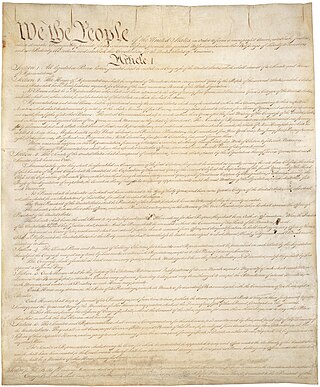
The Constitution of the United States is the supreme law of the United States of America. It superseded the Articles of Confederation, the nation's first constitution, in 1789. Originally comprising seven articles, it delineates the national frame of government. Its first three articles embody the doctrine of the separation of powers, whereby the federal government is divided into three branches: the legislative, consisting of the bicameral Congress ; the executive, consisting of the president and subordinate officers ; and the judicial, consisting of the Supreme Court and other federal courts. Article IV, Article V, and Article VI embody concepts of federalism, describing the rights and responsibilities of state governments, the states in relationship to the federal government, and the shared process of constitutional amendment. Article VII establishes the procedure subsequently used by the 13 states to ratify it. It is regarded as the oldest written and codified national constitution in force.
Georgia ratifies the 13th Amendment to the U.S. Constitution.

Georgia is a state in the Southeastern region of the United States, bordered to the north by Tennessee and North Carolina; to the northeast by South Carolina; to the southeast by the Atlantic Ocean; to the south by Florida; and to the west by Alabama. Georgia is the 24th-largest state in area and 8th most populous of the 50 United States. Its 2020 population was 10,711,908, according to the U.S. Census Bureau. Atlanta, a "beta(+)" global city, is both the state's capital and its largest city. The Atlanta metropolitan area, with a population of more than 6 million people in 2020, is the 9th most populous metropolitan area in the United States and contains about 57% of Georgia's entire population.

The Thirteenth Amendment to the United States Constitution abolished slavery and involuntary servitude, except as punishment for a crime. The amendment was passed by the Senate on April 8, 1864, by the House of Representatives on January 31, 1865, and ratified by the required 27 of the then 36 states on December 6, 1865, and proclaimed on December 18. It was the first of the three Reconstruction Amendments adopted following the American Civil War.
Mexican–American War: American and Mexican forces clashed at the Battle of San Pasqual, a series of skirmishes near San Diego, California.

The Mexican–American War, also known in the United States as the Mexican War and in Mexico as the Intervención estadounidense en México, was an armed conflict between the United States and Mexico from 1846 to 1848. It followed the 1845 American annexation of Texas, which Mexico still considered its territory. Mexico refused to recognize the Velasco treaty, because it was signed by President Antonio López de Santa Anna while he was captured by the Texan Army during the 1836 Texas Revolution. The Republic of Texas was de facto an independent country, but most of its Anglo-American citizens wanted to be annexed by the United States.

The Battle of San Pasqual, also spelled San Pascual, was a military encounter that occurred during the Mexican–American War in what is now the San Pasqual Valley community of the city of San Diego, California. The series of military skirmishes ended with both sides claiming victory, and the victor of the battle is still debated. On December 6 and December 7, 1846, General Stephen W. Kearny's US Army of the West, along with a small detachment of the California Battalion led by a Marine Lieutenant, engaged a small contingent of Californios and their Presidial Lancers Los Galgos, led by Major Andrés Pico. After U.S. reinforcements arrived, Kearny's troops were able to reach San Diego.

San Diego is a city on the Pacific Ocean coast of Southern California located immediately adjacent to the Mexico–United States border. With a 2020 population of 1,386,932, it is also the eighth most populous city in the United States and the seat of San Diego County, the fifth most populous county in the United States, with 3,338,330 estimated residents as of 2019. The city is known for its mild year-round climate, natural deep-water harbor, extensive beaches and parks, long association with the U.S. armed forces, and recent emergence as a healthcare and biotechnology development center. San Diego is the second largest city in the state of California after Los Angeles.
Haitian Revolution: Nearly all the final French ships in Haiti were captured by the Royal Navy when they attempted to evade the blockade of Saint-Domingue.
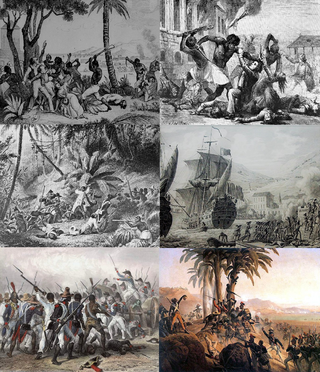
The Haitian Revolution was a successful insurrection by self-liberated slaves against French colonial rule in Saint-Domingue, now the sovereign state of Haiti. The revolt began on 22 August 1791, and ended in 1804 with the former colony's independence. It involved black, biracial, French, Spanish, British, and Polish participants—with the ex-slave Toussaint Louverture emerging as Haiti's most prominent general. The revolution was the only slave uprising that led to the founding of a state which was both free from slavery and ruled by non-whites and former captives. It is now widely seen as a defining moment in the history of the Atlantic World.

The Royal Navy (RN) is the United Kingdom's naval warfare force. Although warships were used by English and Scottish kings from the early medieval period, the first major maritime engagements were fought in the Hundred Years' War against France. The modern Royal Navy traces its origins to the early 16th century; the oldest of the UK's armed services, it is consequently known as the Senior Service.

The Blockade of Saint-Domingue was a naval campaign fought during the first months of the Napoleonic Wars in which a series of British Royal Navy squadrons blockaded the French-held ports of Cap Français and Môle-Saint-Nicolas on the northern coast of the French colony of Saint-Domingue, soon to become Haiti, after the conclusion of the Haitian Revolution on 1 January 1804. In the summer of 1803, when war broke out between the United Kingdom and the French Consulate, Saint-Domingue had been almost completely overrun by Haitian forces commanded by Jean-Jacques Dessalines. In the north of the country, the French forces were isolated in the two large ports of Cap Français and Môle-Saint-Nicolas and a few smaller settlements, all supplied by a French naval force based primarily at Cap Français.
Five French warships attempting to escape the Royal Naval blockade of Saint-Domingue are all seized by British warships, signifying the end of the Haitian Revolution.

The French Navy, informally La Royale, is the maritime arm of the French Armed Forces and one of the five military service branches of France. It is among the largest and most powerful naval forces in the world, ranking seventh in combined fleet tonnage and fifth in number of naval vessels. The French Navy is one of eight naval forces currently operating fixed-wing aircraft carriers, with its flagship Charles de Gaulle being the only nuclear-powered aircraft carrier outside the United States Navy, and one of two non-American vessels to use catapults to launch aircraft.

The Blockade of Saint-Domingue was a naval campaign fought during the first months of the Napoleonic Wars in which a series of British Royal Navy squadrons blockaded the French-held ports of Cap Français and Môle-Saint-Nicolas on the northern coast of the French colony of Saint-Domingue, soon to become Haiti, after the conclusion of the Haitian Revolution on 1 January 1804. In the summer of 1803, when war broke out between the United Kingdom and the French Consulate, Saint-Domingue had been almost completely overrun by Haitian forces commanded by Jean-Jacques Dessalines. In the north of the country, the French forces were isolated in the two large ports of Cap Français and Môle-Saint-Nicolas and a few smaller settlements, all supplied by a French naval force based primarily at Cap Français.

The Haitian Revolution was a successful insurrection by self-liberated slaves against French colonial rule in Saint-Domingue, now the sovereign state of Haiti. The revolt began on 22 August 1791, and ended in 1804 with the former colony's independence. It involved black, biracial, French, Spanish, British, and Polish participants—with the ex-slave Toussaint Louverture emerging as Haiti's most prominent general. The revolution was the only slave uprising that led to the founding of a state which was both free from slavery and ruled by non-whites and former captives. It is now widely seen as a defining moment in the history of the Atlantic World.
The U.S. Congress moves from New York City to Philadelphia.

The United States Congress is the legislature of the federal government of the United States. It is bicameral, composed of a lower body, the House of Representatives, and an upper body, the Senate. It meets in the United States Capitol in Washington, D.C. Senators and representatives are chosen through direct election, though vacancies in the Senate may be filled by a governor's appointment. Congress has 535 voting members: 100 senators and 435 representatives. The vice president of the United States has a vote in the Senate only when senators are evenly divided. The House of Representatives has six non-voting members.
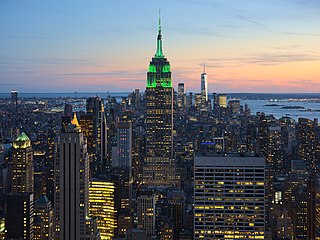
New York, often called New York City or NYC, is the most populous city in the United States. With a 2020 population of 8,804,190 distributed over 300.46 square miles (778.2 km2), New York City is also the most densely populated major city in the United States, and is more than twice as populous as second-place Los Angeles. New York City lies at the southern tip of New York State, and constitutes the geographical and demographic center of both the Northeast megalopolis and the New York metropolitan area, the largest metropolitan area in the world by urban landmass. With over 20.1 million people in its metropolitan statistical area and 23.5 million in its combined statistical area as of 2020, New York is one of the world's most populous megacities, and over 58 million people live within 250 mi (400 km) of the city. New York City is a global cultural, financial, and media center with a significant influence on commerce, health care and life sciences, entertainment, research, technology, education, politics, tourism, dining, art, fashion, and sports. Home to the headquarters of the United Nations, New York is an important center for international diplomacy, an established safe haven for global investors, and is sometimes described as the capital of the world.
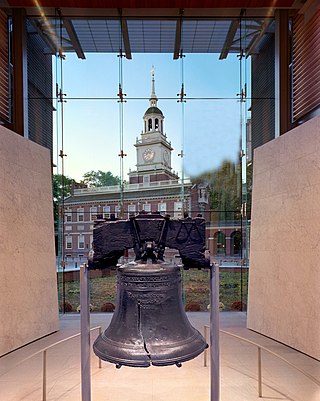
Philadelphia, often called Philly, is the largest city in the Commonwealth of Pennsylvania, the sixth-largest city in the U.S., the second-largest city in both the Northeast megalopolis and Mid-Atlantic regions after New York City. Since 1854, the city has been coextensive with Philadelphia County, the most populous county in Pennsylvania and the urban core of the Delaware Valley, the nation's seventh-largest and one of world's largest metropolitan regions, with 6.245 million residents as of 2020. The city's population as of the 2020 census was 1,603,797, and over 56 million people live within 250 mi (400 km) of Philadelphia.
Charles Edward Stuart's army begins retreat during the second Jacobite Rising.

Charles Edward Louis John Sylvester Maria Casimir Stuart was the elder son of James Francis Edward Stuart, grandson of James II and VII, and the Stuart claimant to the thrones of England, Scotland and Ireland from 1766 as Charles III. During his lifetime, he was also known as "the Young Pretender" and "the Young Chevalier"; in popular memory, he is known as Bonnie Prince Charlie.

The Jacobite rising of 1745, also known as the Forty-five Rebellion or simply the '45, was an attempt by Charles Edward Stuart to regain the British throne for his father, James Francis Edward Stuart. It took place during the War of the Austrian Succession, when the bulk of the British Army was fighting in mainland Europe, and proved to be the last in a series of revolts that began in 1689, with major outbreaks in 1708, 1715 and 1719.
Battle of Chamkaur: During the Mughal-Sikh Wars, an outnumbered Sikh Khalsa defeats a Mughal army.

The Battle of Chamkaur, also known as Battle of Chamkaur Sahib, was a battle fought between the Khalsa, led by Guru Gobind Singh, and the coalition forces of the Mughals led by Wazir Khan and of Hindu hill chief. Guru Gobind Singh makes a reference to this battle in his letter Zafarnama.

Khalsa refers to both a community that considers Sikhism as its faith, as well as a special group of initiated Sikhs. The Khalsa tradition was initiated in 1699 by the Tenth Guru of Sikhism, Guru Gobind Singh. Its formation was a key event in the history of Sikhism. The founding of Khalsa is celebrated by Sikhs during the festival of Vaisakhi.

The Mughal Empire was an early-modern empire that controlled much of South Asia between the 16th and 19th centuries. For some two hundred years, the empire stretched from the outer fringes of the Indus river basin in the west, northern Afghanistan in the northwest, and Kashmir in the north, to the highlands of present-day Assam and Bangladesh in the east, and the uplands of the Deccan Plateau in South India.
Colonel Thomas Pride of the New Model Army purges the Long Parliament of MPs sympathetic to King Charles I of England, in order for the King's trial to go ahead; came to be known as "Pride's Purge".
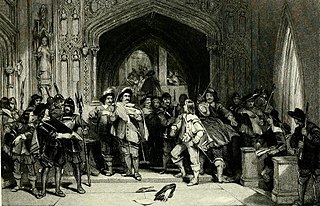
Colonel Thomas Pride was a Parliamentarian commander during the Wars of the Three Kingdoms, best known as one of the regicides of Charles I and as the instigator of Pride's Purge.

The New Model Army was a standing army formed in 1645 by the Parliamentarians during the First English Civil War, then disbanded after the Stuart Restoration in 1660. It differed from other armies employed in the 1639 to 1653 Wars of the Three Kingdoms in that members were liable for service anywhere in the country, rather than being limited to a single area or garrison. To establish a professional officer corps, the army's leaders were prohibited from having seats in either the House of Lords or House of Commons. This was to encourage their separation from the political or religious factions among the Parliamentarians.

The Long Parliament was an English Parliament which lasted from 1640 until 1660. It followed the fiasco of the Short Parliament, which had convened for only three weeks during the spring of 1640 after an 11-year parliamentary absence. In September 1640, King Charles I issued writs summoning a parliament to convene on 3 November 1640. He intended it to pass financial bills, a step made necessary by the costs of the Bishops' Wars in Scotland. The Long Parliament received its name from the fact that, by Act of Parliament, it stipulated it could be dissolved only with agreement of the members; and those members did not agree to its dissolution until 16 March 1660, after the English Civil War and near the close of the Interregnum.

Charles I was King of England, Scotland, and Ireland from 27 March 1625 until his execution in 1649. He was born into the House of Stuart as the second son of King James VI of Scotland, but after his father inherited the English throne in 1603, he moved to England, where he spent much of the rest of his life. He became heir apparent to the kingdoms of England, Scotland, and Ireland in 1612 upon the death of his elder brother, Henry Frederick, Prince of Wales. An unsuccessful and unpopular attempt to marry him to the Spanish Habsburg princess Maria Anna culminated in an eight-month visit to Spain in 1623 that demonstrated the futility of the marriage negotiation. Two years later, he married the Bourbon princess Henrietta Maria of France.

Pride's Purge is the name commonly given to an event that took place on 6 December 1648, when soldiers prevented members of Parliament considered hostile to the New Model Army from entering the House of Commons of England.
The city of Quito in Ecuador is founded by Spanish settlers led by Sebastián de Belalcázar.
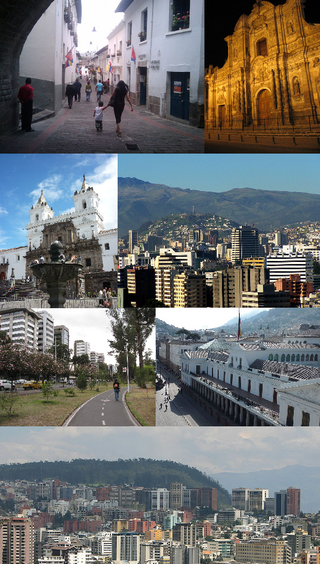
Quito, formally San Francisco de Quito, is the capital and largest city of Ecuador, with an estimated population of 2.8 million in its urban area. It is also the capital of the province of Pichincha. Quito is located in a valley on the eastern slopes of Pichincha, an active stratovolcano in the Andes, at an elevation of 2,850 m (9,350 ft), making it the second-highest capital city in the world.

Ecuador, officially the Republic of Ecuador, is a country in northwestern South America, bordered by Colombia on the north, Peru on the east and south, and the Pacific Ocean on the west. Ecuador also includes the Galápagos Islands in the Pacific, about 1,000 kilometers (621 mi) west of the mainland. The country's capital and largest city is Quito.

Sebastián de Belalcázar was a Spanish conquistador. De Belalcázar, also written as de Benalcázar, is known as the founder of important early colonial cities in the northwestern part of South America; Quito in 1534 and Cali, Pasto and Popayán in 1537. De Belalcázar led expeditions in present-day Ecuador and Colombia and died of natural causes after being sentenced to death in Cartagena, at the Caribbean coast in 1551.
After exploring the island of Cuba for gold, surmising it for Japan, Columbus lands on an island east of Cuba, naming it Hispaniola.

Cuba, officially the Republic of Cuba, is an island country comprising the island of Cuba, as well as Isla de la Juventud and several minor archipelagos. Cuba is located where the northern Caribbean Sea, Gulf of Mexico, and Atlantic Ocean meet. Cuba is located east of the Yucatán Peninsula (Mexico), south of both the American state of Florida and the Bahamas, west of Hispaniola, and north of both Jamaica and the Cayman Islands. Havana is the largest city and capital; other major cities include Santiago de Cuba and Camagüey. The official area of the Republic of Cuba is 109,884 km2 (42,426 sq mi) but a total of 350,730 km² including the exclusive economic zone. Cuba is the second-most populous country in the Caribbean after Haiti, with over 11 million inhabitants.

Japan is an island country in East Asia. It is situated in the northwest Pacific Ocean, and is bordered on the west by the Sea of Japan, while extending from the Sea of Okhotsk in the north toward the East China Sea, Philippine Sea, and Taiwan in the south. Japan is a part of the Ring of Fire, and spans an archipelago of 6852 islands covering 377,975 square kilometers (145,937 sq mi); the five main islands are Hokkaido, Honshu, Shikoku, Kyushu, and Okinawa. Tokyo is the nation's capital and largest city, followed by Yokohama, Osaka, Nagoya, Sapporo, Fukuoka, Kobe, and Kyoto.

Christopher Columbus was an Italian explorer and navigator who completed four voyages across the Atlantic Ocean sponsored by the Catholic Monarchs of Spain, opening the way for the widespread European exploration and colonization of the Americas. His expeditions were the first known European contact with the Caribbean, Central America, and South America.

Hispaniola is an island in the Caribbean that is part of the Greater Antilles. Hispaniola is the most populous island in the West Indies, and the region's second largest in area, after the island of Cuba.
After days of bombardment, Mongol invaders under Batu Khan breached the walls of Kiev and plundered the city, slaughtering its inhabitants.

The Mongol Empire invaded and conquered Kievan Rus' in the 13th century, destroying numerous southern cities, including the largest cities, Kiev and Chernihiv, with the only major cities escaping destruction being Novgorod and Pskov, located in the north.

Batu Khan, was a Mongol ruler and founder of the Golden Horde, a constituent of the Mongol Empire. Batu was a son of Jochi, thus a grandson of Genghis Khan. His ulus ruled over the Kievan Rus', Volga Bulgaria, Cumania, and the Caucasus for around 250 years.

The siege of Kiev by the Mongols took place between November 28 and December 6, 1240, and resulted in a Mongol victory. It was a heavy morale and military blow to Halych-Volhynia and allowed Batu Khan to proceed westward into Europe.
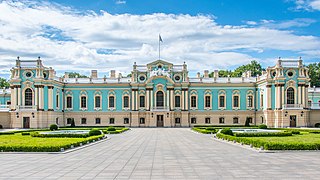
Kyiv, also spelled Kiev, is the capital and most populous city of Ukraine. It is in north-central Ukraine along the Dnieper River. As of 1 January 2021, its population was 2,962,180, making Kyiv the seventh-most populous city in Europe.
Mongol invasion of Rus': Kyiv under Daniel of Galicia and Voivode Dmytro falls to the Mongols under Batu Khan.

The Mongol Empire invaded and conquered Kievan Rus' in the 13th century, destroying numerous southern cities, including the largest cities, Kiev and Chernihiv, with the only major cities escaping destruction being Novgorod and Pskov, located in the north.

Kyiv, also spelled Kiev, is the capital and most populous city of Ukraine. It is in north-central Ukraine along the Dnieper River. As of 1 January 2021, its population was 2,962,180, making Kyiv the seventh-most populous city in Europe.
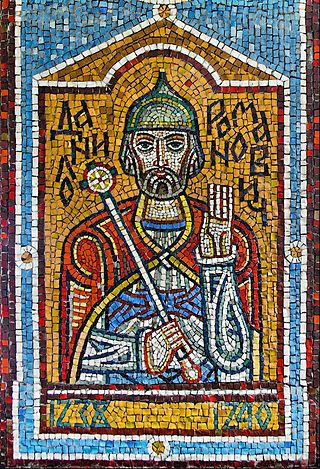
Daniel of Galicia was a King of Ruthenia, Prince (Kniaz) of Galicia (Halych) (1205–1255), Peremyshl (1211), and Volodymyr (1212–1231). He was crowned by a papal archbishop in Dorohochyn in 1253 as the first King of Ruthenia (1253–1264).

The siege of Kiev by the Mongols took place between November 28 and December 6, 1240, and resulted in a Mongol victory. It was a heavy morale and military blow to Halych-Volhynia and allowed Batu Khan to proceed westward into Europe.

The Mongols are an East Asian ethnic group native to Mongolia, Inner Mongolia in China and the Buryatia Republic of the Russian Federation. The Mongols are the principal member of the large family of Mongolic peoples. The Oirats in Western Mongolia as well as the Buryats and Kalmyks of Russia are classified either as distinct ethno-linguistic groups or subgroups of Mongols.

Batu Khan, was a Mongol ruler and founder of the Golden Horde, a constituent of the Mongol Empire. Batu was a son of Jochi, thus a grandson of Genghis Khan. His ulus ruled over the Kievan Rus', Volga Bulgaria, Cumania, and the Caucasus for around 250 years.
Béla I was crowned King of Hungary in Székesfehérvár.
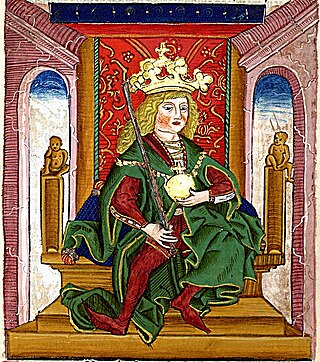
Béla I the Boxer or the Wisent was King of Hungary from 1060 until his death. He descended from a younger branch of the Árpád dynasty. Béla's baptismal name was Adalbert. He left Hungary in 1031, together with his brothers, Levente and Andrew, after the execution of their father, Vazul. Béla settled in Poland and married Richeza, daughter of Polish king Mieszko II Lambert.
This is a list of Hungarian monarchs, that includes the grand princes (895–1000) and the kings and ruling queens of Hungary (1000–1918).

Székesfehérvár, known colloquially as Fehérvár, is a city in central Hungary, and the country's ninth-largest city. It is the regional capital of Central Transdanubia, and the centre of Fejér County and Székesfehérvár District. The area is an important rail and road junction between Lake Balaton and Lake Velence.
Béla I is crowned king of Hungary.

Béla I the Boxer or the Wisent was King of Hungary from 1060 until his death. He descended from a younger branch of the Árpád dynasty. Béla's baptismal name was Adalbert. He left Hungary in 1031, together with his brothers, Levente and Andrew, after the execution of their father, Vazul. Béla settled in Poland and married Richeza, daughter of Polish king Mieszko II Lambert.

The Kingdom of Hungary was a monarchy in Central Europe that existed for nearly a millennium, from the Middle Ages into the 20th century. The Principality of Hungary emerged as a Christian kingdom upon the coronation of the first king Stephen I at Esztergom around the year 1000; his family led the monarchy for 300 years. By the 12th century, the kingdom became a European middle power within the Western world.
Leo VIII was ordained a bishop, claiming the Holy See as an antipope supported by Otto the Great.
Pope Leo VIII was a Roman prelate who claimed the Holy See from 963 until 964 in opposition to John XII and Benedict V and again from 23 June 964 to his death. Today he is considered by the Catholic Church to have been an antipope during the first period and the legitimate pope during the second. An appointee of Holy Roman Emperor Otto I, Leo VIII's pontificate occurred after the period known as the saeculum obscurum.

A bishop is an ordained clergy member who is entrusted with a position of authority and oversight in a religious institution.

The Holy See, also called the See of Rome, Petrine See or Apostolic See, is the jurisdiction of the Pope in his role as the bishop of Rome. It includes the apostolic episcopal see of the Diocese of Rome, which has ecclesiastical jurisdiction over the Catholic Church and the sovereign city-state known as the Vatican City.

An antipope is a person who makes a significant and substantial attempt to occupy the position of Bishop of Rome and leader of the Catholic Church in opposition to the legitimately elected pope. At times between the 3rd and mid-15th centuries, antipopes were supported by important factions within the Church itself and by secular rulers.

Otto I, traditionally known as Otto the Great, was East Frankish king from 936 and Holy Roman Emperor from 962 until his death in 973. He was the oldest son of Henry the Fowler and Matilda of Ringelheim.
Pope Leo VIII is appointed to the office of Protonotary and begins his papacy as antipope of Rome.
Pope Leo VIII was a Roman prelate who claimed the Holy See from 963 until 964 in opposition to John XII and Benedict V and again from 23 June 964 to his death. Today he is considered by the Catholic Church to have been an antipope during the first period and the legitimate pope during the second. An appointee of Holy Roman Emperor Otto I, Leo VIII's pontificate occurred after the period known as the saeculum obscurum.

In the Roman Catholic Church, protonotary apostolic is the title for a member of the highest non-episcopal college of prelates in the Roman Curia or, outside Rome, an honorary prelate on whom the pope has conferred this title and its special privileges. An example is Prince Georg of Bavaria (1880–1943), who became in 1926 Protonotary by papal decree.

An antipope is a person who makes a significant and substantial attempt to occupy the position of Bishop of Rome and leader of the Catholic Church in opposition to the legitimately elected pope. At times between the 3rd and mid-15th centuries, antipopes were supported by important factions within the Church itself and by secular rulers.

Rome is the capital city of Italy. It is also the capital of the Lazio region, the centre of the Metropolitan City of Rome, and a special comune named Comune di Roma Capitale. With 2,860,009 residents in 1,285 km2 (496.1 sq mi), Rome is the country's most populated comune and the third most populous city in the European Union by population within city limits. The Metropolitan City of Rome, with a population of 4,355,725 residents, is the most populous metropolitan city in Italy. Its metropolitan area is the third-most populous within Italy. Rome is located in the central-western portion of the Italian Peninsula, within Lazio (Latium), along the shores of the Tiber. Vatican City is an independent country inside the city boundaries of Rome, the only existing example of a country within a city. Rome is often referred to as the City of Seven Hills due to its geographic location, and also as the "Eternal City". Rome is generally considered to be the "cradle of Western civilization and Christian culture", and the centre of the Catholic Church.
Peter Vaughan, British actor (b. 1923) deaths
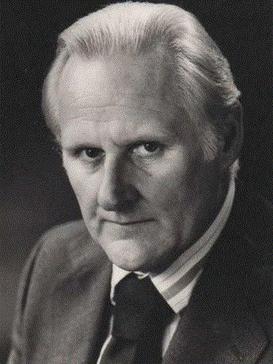
Peter Vaughan was an English character actor known for many supporting roles in British film and television productions. He also acted extensively on the stage.
Ko Chun-hsiung, Taiwanese actor, director, and politician (b. 1945) deaths
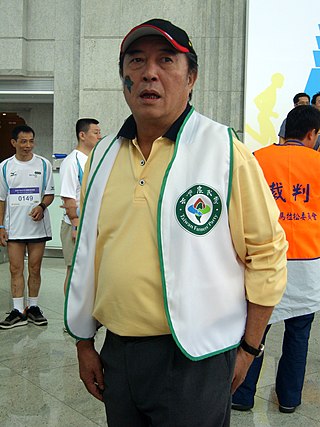
Ko Chun-hsiung was a Taiwanese actor, director and politician. He had been acting since the 1960s and had appeared in more than 200 films.
Liu Juying, Chinese general and politician (b. 1917) deaths
Liu Juying was a Chinese politician, revolutionary, and general in the People's Liberation Army.
Nicholas Smith, British actor (b. 1934) deaths

Nicholas John Smith was an English comedian and actor. He appeared in the BBC sitcom Are You Being Served?, playing original character Mr (Cuthbert) Rumbold, the manager of the fictional Grace Brothers department store.
Ralph H. Baer, German-American video game designer, created the Magnavox Odyssey (b. 1922) deaths

Ralph Henry Baer was a German-American inventor, game developer, and engineer.

The Magnavox Odyssey is the first commercial home video game console. The hardware was designed by a small team led by Ralph H. Baer at Sanders Associates, while Magnavox completed development and released it in the United States in September 1972 and overseas the following year. The Odyssey consists of a white, black, and brown box that connects to a television set, and two rectangular controllers attached by wires. It is capable of displaying three square dots and one line of varying height on the screen in monochrome black and white, with differing behavior for the dots depending on the game played. Players place plastic overlays on the screen to display additional visual elements for each game, and one or two players for each game control their dots with the knobs and buttons on the controller by the rules given for the game. The console cannot generate audio or track scores. The Odyssey console came packaged with dice, paper money, and other board game paraphernalia to accompany the games, while a peripheral controller—the first video game light gun—was sold separately.
Jimmy Del Ray, American wrestler and manager (b. 1962) deaths
David Everett Ferrier was an American professional wrestler, better known by his ring name, "Gigolo" Jimmy Del Ray. Del Ray was best known for his appearances in the World Wrestling Federation (WWF) as one half of the Heavenly Bodies with his tag team partner, Tom Prichard.
Fred Hawkins, American golfer (b. 1923) deaths
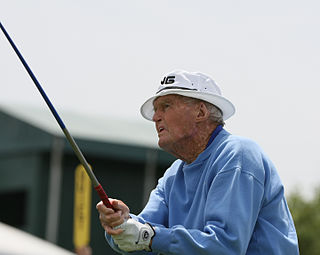
Fred Hawkins was an American professional golfer who played on the PGA Tour from the mid-1940s to the mid-1960s.
Luke Somers, English-American photographer and journalist (b. 1981) deaths
Luke Daniel Somers was a British-born American photojournalist who had been held hostage by the militant Islamist group al-Qaeda in the Arabian Peninsula (AQAP) in Yemen. He was a dual citizen of the United Kingdom and the United States. He traveled to Egypt before settling in Yemen.
Jean-Pierre Desthuilliers, French poet and critic (b. 1939) deaths
Jean-Pierre Desthuilliers was a French writer and poet. He was born on 22 October 1939 in Versailles and died on 6 December 2013.
Stan Tracey, English pianist and composer (b. 1926) deaths

Stanley William Tracey was a British jazz pianist and composer, whose most important influences were Duke Ellington and Thelonious Monk. Tracey's best known recording is the 1965 album Jazz Suite Inspired by Dylan Thomas's "Under Milk Wood", which is based on the BBC radio drama Under Milk Wood, by Dylan Thomas.
M. K. Turk, American basketball player and coach (b. 1942) deaths
M. K. Turk was an American college basketball coach and player.
Miguel Abia Biteo Boricó, Equatoguinean engineer and politician, Prime Minister of Equatorial Guinea (b. 1961) deaths
Miguel Abia Biteo Boricó was the 5th Prime Minister of Equatorial Guinea having served from July 11, 2004, to August 14, 2006. He was a member of the Bubi ethnic group.

This article lists the prime ministers of Equatorial Guinea, a country in the Gulf of Guinea and on the western equatorial coast of Central Africa, since the establishment of the office of prime minister of Spanish Guinea in 1963. Bonifacio Ondó Edu was the first person to hold the office, taking effect on 15 December 1963. The incumbent is Francisco Pascual Obama Asue, having taken office on 23 June 2016.
Jan Carew, Guyanese author, poet, and playwright (b. 1920) deaths
Jan Rynveld Carew was a Guyana-born novelist, playwright, poet and educator, who lived at various times in The Netherlands, Mexico, England, France, Spain, Ghana, Jamaica, Canada and the United States.
Jeffrey Koo Sr., Taiwanese banker and businessman (b. 1933) deaths

Jeffrey Koo Sr. was a Taiwanese billionaire banker, who served as honorary chairman and governor of Chinatrust Bank, and co founded Koos Group.
Huw Lloyd-Langton, English guitarist (b. 1951) deaths

Richard Hugh "Huw" Lloyd-Langton was an English musician, best known as the guitarist for the rock band Hawkwind at various times. He also had his own band, The Lloyd Langton Group, and was the session lead guitarist for UK band The Meads of Asphodel.
Pedro Vaz, Uruguayan lawyer and politician, Minister of Foreign Affairs of Uruguay (b. 1963) deaths

Pedro Humberto Vaz Ramela was a Uruguayan diplomat, politician, and lawyer. Vaz served as the Minister of Foreign Relations of Uruguay from August 31, 2009 until March 1, 2010. In 2010, President José Mujica appointed him Ambassador to Chile.

This article lists the Ministers of Foreign Relations of Uruguay since 1828:
Dobie Gray, American singer-songwriter and producer (b. 1940) deaths
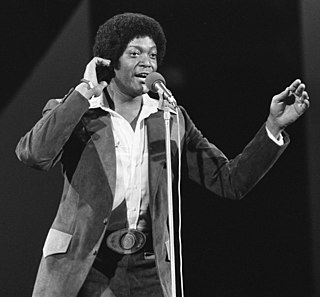
Dobie Gray was an American singer and songwriter whose musical career spanned soul, country, pop, and musical theater. His hit songs included "The 'In' Crowd" in 1965 and "Drift Away", which was one of the biggest hits of 1973, has sold over one million copies and remains a staple of radio airplay.
Mark Dailey, American-Canadian journalist and actor (b. 1953) deaths
Mark Edward Dailey was an American-born Canadian television journalist and announcer. He was the host of 11 p.m. weeknight CityNews newscasts in Toronto, Ontario, and a prominent continuity announcer voicing interstitial program announcements on CITY-TV.
John Feeney, New Zealand director and producer (b. 1922) deaths
John Feeney was a New Zealand-born director of documentary films. He worked with the New Zealand National Film Unit, National Film Board of Canada (NFB) and made films and did photography in Egypt. He was nominated for two Academy Awards.
Charly Gaul, Luxembourger cyclist (b. 1932) deaths

Charly Gaul was a Luxembourgian professional cyclist. He was a national cyclo-cross champion, an accomplished time triallist and superb climber. His ability earned him the nickname of Angel of the Mountains in the 1958 Tour de France, which he won with four stage victories. He also won the Giro d'Italia in 1956 and 1959. Gaul rode best in cold, wet weather. In later life, he became a recluse and lost much of his memory.
Devan Nair, Malaysian-Singaporean union leader and politician, 3rd President of Singapore (b. 1923) deaths

Chengara Veetil Devan Nair, also known as C. V. Devan Nair and better known simply as Devan Nair, was a Malaysian-Singaporean politician who served as the third president of Singapore from 1981 until his resignation in 1985.

The president of the Republic of Singapore is the head of state of the Republic of Singapore. The role of the president is to safeguard the reserves and the integrity of the public service. The presidency is largely ceremonial, with the Cabinet led by the prime minister, having the general direction and control of the government. The incumbent president is Halimah Yacob, who took office on 14 September 2017. She is also the first female president in the country's history.
Danny Williams, South African singer (b. 1942) deaths

Danny Williams was a South African-born British pop singer who earned the nickname "Britain's Johnny Mathis", for his smooth and stylish way with a ballad. He is best known for his 1961 UK number one version of "Moon River" and his 1964 U.S. top ten hit, "White on White".
William P. Yarborough, American general (b. 1912) deaths

Lieutenant General William Pelham Yarborough was a senior United States Army officer. Yarborough designed the U.S. Army's parachutist badge, paratrooper or 'jump' boots, and the airborne jump uniform. He is known as the "Father of the Modern Green Berets." He was descended from the Yorkshire House of Yarborough. Yarborough was a distant cousin to such British noble figures as the Baron Deramore, Lord Alvingham, the Duke of Buccleugh and the Marquess of Bath.
Carlos Manuel Arana Osorio, Guatemalan general and politician, President of Guatemala (b. 1918) deaths

Carlos Manuel Arana Osorio was President of Guatemala from 1970 to 1974. His government enforced torture, disappearances and killings against political and military adversaries, as well as common criminals.
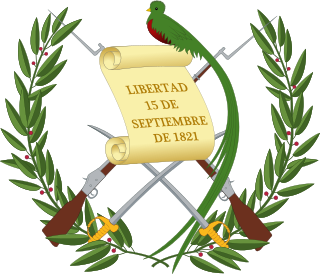
The president of Guatemala, officially known as the President of the Republic of Guatemala, is the head of state and head of government of Guatemala, elected to a single four-year term. The position of President was created in 1839.
Philip Berrigan, American priest and activist (b. 1923) deaths

Philip Francis Berrigan, SSJ was an American peace activist and Catholic priest with the Josephites. He engaged in nonviolent, civil disobedience in the cause of peace and nuclear disarmament and was often arrested.
Charles McClendon, American football player and coach (b. 1923) deaths

Charles Youmans McClendon, also known as "Cholly Mac", was an American football player and coach. He served at the head coach at Louisiana State University from 1962 to 1979. McClendon was inducted into the College Football Hall of Fame in 1986.
Werner Klemperer, German-American actor (b. 1920) deaths

Werner Klemperer was an American actor. He was known for playing Colonel Wilhelm Klink on the CBS television sitcom Hogan's Heroes, for which he twice won the award for Outstanding Supporting Actor in a Comedy Series at the Primetime Emmy Awards in 1968 and 1969.
Aziz Mian, Pakistani singer-songwriter and poet (b. 1942) deaths

Aziz Mian Qawwal was a Pakistani traditional qawwal famous for singing ghazals in his own style of qawwali and is considered one of the greatest qawwals in South Asia. He holds the record for singing the longest commercially released qawwali, Hashr Ke Roz Yeh Poochhunga, which runs slightly over 150 minutes and. Aziz is known by sobriquets — "Shahenshah-e-Qawwali", "Fauji Qawwal"(Military Singer) since his early performances were often in army barracks, and "the Nietzschean qawwal".
Angelīna Kučvaļska, Latvian figure skater births

Angelīna Kučvaļska is a Latvian figure skater. She is the 2014 CS Volvo Open Cup champion, a two-time Toruń Cup champion, the 2014 Tallinn Trophy champion, and a five-time Latvian national champion. She has competed in the final segment at nine ISU Championships, achieving her best result, fourth, at the 2016 European Championships.
César Baldaccini, French sculptor and educator (b. 1921) deaths
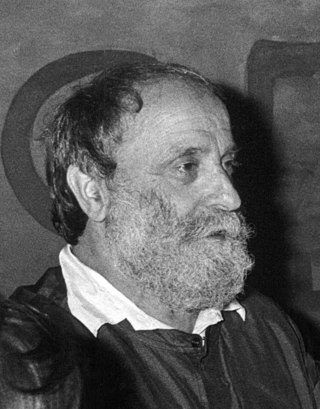
César, also occasionally referred to as César Baldaccini, was a noted French sculptor.
Willy den Ouden, Dutch swimmer (b. 1918) deaths
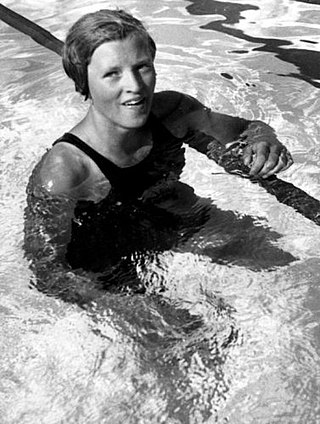
Willemijntje den Ouden was a competitive swimmer from the Netherlands, who held the 100-meter freestyle world record for nearly 23 years, from 1933 to 1956.
Davide Calabria, Italian football player births

Davide Calabria is an Italian professional footballer who plays as a right-back for Serie A club AC Milan, whom he captains, and the Italy national team.
Pete Rozelle, American businessman (b. 1926) deaths
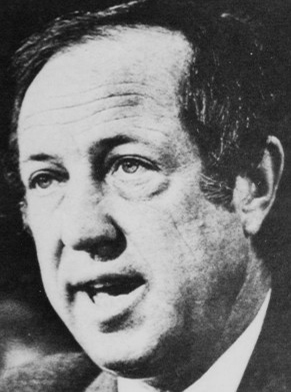
Alvin Ray "Pete" Rozelle was an American businessman and executive. Rozelle served as the commissioner of the National Football League (NFL) for nearly thirty years, from January 1960 until his retirement in November 1989. He is credited with making the NFL into one of the most successful sports leagues in the world.
Giannis Antetokounmpo, Greek basketball player births

Giannis Sina Ugo Antetokounmpo is a Greek-Nigerian professional basketball player for the Milwaukee Bucks of the National Basketball Association (NBA). Antetokounmpo's country of origin, in addition to his size, speed, strength, and ball-handling skills have earned him the nickname "Greek Freak".
Shreyas Iyer, Indian cricketer births

Shreyas Santosh Iyer is an Indian international cricketer who plays for the Indian cricket team as a Right-handed batter. He has played in all formats for the Indian team. Iyer has scored a century in his debut test match and a half century in second innings against New Zealand in November 2021 and became the first Indian player to do so. Iyer plays for Mumbai in domestic cricket and captains Kolkata Knight Riders in the Indian Premier League. He played for the India Under-19 cricket team at the 2014 ICC Under-19 Cricket World Cup.
Wakatakakage Atsushi, Japanese sumo wrestler births

Wakatakakage Atsushi is a Japanese professional sumo wrestler from Fukushima. He made his debut in March 2017 and reached the top makuuchi division in November 2019. He wrestles for Arashio stable, where he is a stablemate of his older brothers Wakatakamoto and Wakamotoharu. His highest rank has been sekiwake. He has four special prizes for Technique. In March 2022 he won his first top division championship.
Heinz Baas, German footballer and manager (b. 1922) deaths
Heinrich "Heinz" Baas was a German football player and manager.
Gian Maria Volonté, Italian actor and director (b. 1933) deaths

Gian Maria Volonté was an Italian actor, including roles in four Spaghetti Western films: Ramón Rojo in Sergio Leone's A Fistful of Dollars (1964) and El Indio in Leone's For a Few Dollars More (1965), El Chuncho Munoz in Damiano Damiani's A Bullet for the General (1966) and Professor Brad Fletcher in Sergio Sollima's Face to Face (1967).
Jasprit Bumrah, Indian cricketer births
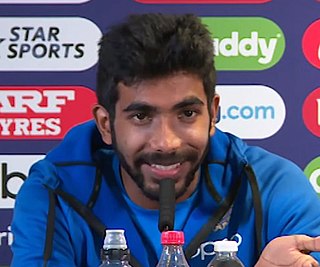
Jasprit Jasbirsingh Bumrah is an Indian international cricketer who plays for the Indian national cricket team in all formats of the game. In the India's domestic cricket, he plays for Gujarat cricket team and Mumbai Indians in first-class cricket and Indian Premier League respectively. He is a right-arm fast bowler.
Elián González, Cuban technician, known for a child custody and immigration case held in 2000 births

Elián González Brotons is a Cuban technician who, as a child, became embroiled in a heated international custody and immigration controversy in 2000 involving the governments of Cuba and the United States, his father Juan Miguel González Quintana, his other relatives in Cuba and in Miami, and Miami's Cuban community.
Pedro Rafael Amado Mendes, Portuguese footballer births
Pedro Rafael Amado Mendes is a Portuguese professional footballer who plays as an attacking midfielder and is currently a free agent.
Tautau Moga, Australian-Samoan rugby league player births
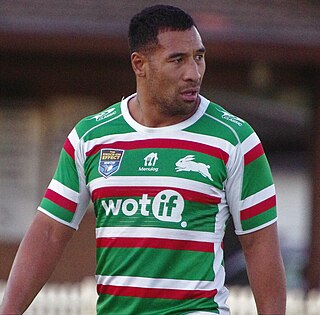
Tautau Moga is a Samoa international rugby league footballer who plays as a centre and winger for the St George Illawarra Dragons in the NRL.
Don Ameche, American actor (b. 1908) deaths

Don Ameche was an American actor, comedian and vaudevillian. After playing in college shows, stock, and vaudeville, he became a major radio star in the early 1930s, which led to the offer of a movie contract from 20th Century Fox in 1935.
Britt Assombalonga, Congolese footballer births

Britt Curtis Assombalonga is a Congolese professional footballer who plays as a striker for Turkish Super Lig club Adana Demirspor and the DR Congo national team. He played in the Football League for Watford, Southend United, Peterborough United, Nottingham Forest and most recently Middlesbrough.
Johnny Manziel, American football player births
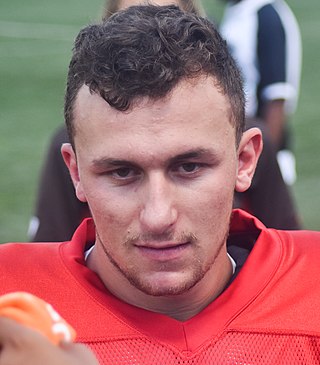
Johnathan Paul Manziel is an American football quarterback for the FCF Zappers of Fan Controlled Football (FCF). He played two seasons with the Cleveland Browns of the National Football League (NFL) and was also a member of the Canadian Football League's (CFL) Hamilton Tiger-Cats and Montreal Alouettes in 2018 and the Alliance of American Football's (AAF) Memphis Express in 2019.
Milica Mandić, Serbian taekwondo athlete, two-time Olympic champion births

Milica Mandić is a Serbian taekwondo athlete. She is a two-time Olympic champion in the +67 kg category, as well as World champion in the same category.
Coco Vandeweghe, American tennis player births

Colleen "CoCo" Vandeweghe is an American professional tennis player. A former Junior US Open champion and top 10 singles player, she has also won two WTA titles, both at the Rosmalen Grass Court Championships in Den Bosch. In 2017, she reached two Grand Slam semifinals and the final of the WTA Elite Trophy to move into the top 10 for the first time. She reached her career-high singles ranking of world No. 9 on January 15, 2018. In addition to her two Grand Slam semifinals in 2017 at the Australian Open and the US Open, Vandeweghe has twice reached the quarterfinals at Wimbledon in both 2015 and 2017. Vandeweghe also owns one Grand Slam doubles title, which she won at the 2018 US Open with partner Ashleigh Barty.
Mimi Smith, English nurse (b. 1906) deaths

Mary Elizabeth "Mimi" Smith was a maternal aunt and the parental guardian of the English musician John Lennon. Mimi Stanley was born in Toxteth, Liverpool, England, the oldest of five daughters. She became a resident trainee nurse at the Woolton Convalescent Hospital and later worked as a private secretary. On 15 September 1939 she married George Toogood Smith who ran his family's dairy farm and a shop in Woolton, a suburb of Liverpool.
Richard Stone, English economist and statistician, Nobel Prize laureate (b. 1913) deaths

Sir John Richard Nicholas Stone was an eminent British economist, educated at Westminster School and Gonville and Caius College and King's College at the University of Cambridge. In 1984, he was awarded the Nobel Memorial Prize in Economic Sciences for developing an accounting model that could be used to track economic activities on a national and, later, an international scale.

The Nobel Memorial Prize in Economic Sciences, officially the Sveriges Riksbank Prize in Economic Sciences in Memory of Alfred Nobel, is an economics award administered by the Nobel Foundation.
Tamira Paszek, Austrian tennis player births

Tamira Shelah Paszek is an Austrian tennis player.
Pavlos Sidiropoulos, Greek singer-songwriter and guitarist (b. 1948) deaths
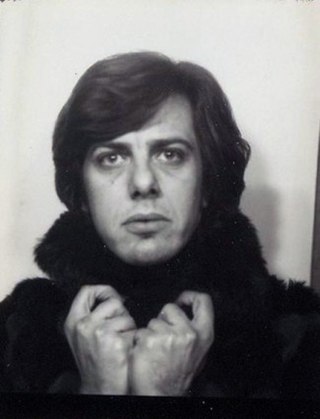
Pavlos Sidiropoulos was a Greek musician noted for combining rock music with Greek music. He is considered one of the pillars of Greek rock due to his involvement so early in its foundation. In particular, Flou (1976), an album produced with his band Spyridoula, had a major impact on the rock scene in Greece.
Tunku Abdul Rahman, Malaysian lawyer and politician, 1st Prime Minister of Malaysia (b. 1903) deaths

Tunku Abdul Rahman Putra Al-Haj ibni Almarhum Sultan Abdul Hamid Halim Shah was a Malaysian statesman and lawyer who served as the 1st Prime Minister of Malaysia and the head of government of its predecessor states from 1955 to 1970. He was the first chief minister of the Federation of Malaya from 1955 to 1957. He supervised the independence process that culminated on 31 August 1957. As Malaya's first prime minister he dominated politics there for the next 13 years. In 1963, he successfully incorporated the Federation of Malaya, British North Borneo, Sarawak, and Singapore into the state of Malaysia. However, tensions between the Malay and Chinese communities resulted in Singapore's expulsion in 1965. His poor performance during race riots in Kuala Lumpur in 1969 led to his resignation in 1970. Commonly known simply as "Tunku", Tunku Abdul Rahman is widely regarded, even by his critics, as Malaysia's "founding father", the architect of Malayan independence and of the formation of Malaysia. As such, he is often referred to as Father of Independence or Father of Malaysia.
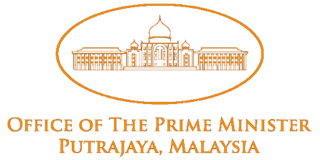
The prime minister of Malaysia is the head of government of Malaysia. The prime minister directs the executive branch of the federal government. The Yang di-Pertuan Agong appoints as the prime minister a member of Parliament (MP) who, in his opinion, is most likely to command the confidence of a majority of MPs; this person is usually the leader of the party winning the most seats in a general election.
Felix Schiller, German footballer births
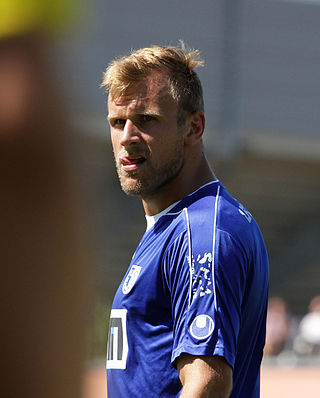
Felix Schiller is a German former professional footballer who played as a defender.
Frances Bavier, American actress (b. 1902) deaths

Frances Elizabeth Bavier was an American stage and television actress. Originally from New York theatre, she worked in film and television from the 1950s until the 1970s. She is best known for her role of Aunt Bee on The Andy Griffith Show and Mayberry R.F.D. from 1960 to 1970. Aunt Bee logged more Mayberry years (ten) than any other character. She won an Emmy Award for Outstanding Supporting Comedy Actress for the role in 1967. Bavier was additionally known for playing Amy Morgan on It's a Great Life (1954–1956).
Sammy Fain, American pianist and composer (b. 1902) deaths

Sammy Fain was an American composer of popular music. In the 1920s and early 1930s, he contributed numerous songs that form part of The Great American Songbook, and to Broadway theatre. Fain was also a popular musician and vocalist.
John Payne, American actor, singer, and producer (b. 1912) deaths

John Howard Payne was an American film actor who is mainly remembered from film noir crime stories and 20th Century Fox musical films, and for his leading roles in Miracle on 34th Street and the NBC Western television series The Restless Gun.
Adam Eaton, American baseball player births

Adam Cory Eaton is an American former professional baseball outfielder. He previously played in Major League Baseball (MLB) for the Arizona Diamondbacks, Chicago White Sox, Washington Nationals, and Los Angeles Angels.
Sandra Nurmsalu, Estonian singer and violinist births

Sandra Nurmsalu is an Estonian singer, songwriter, and violinist. Recognized within Estonia for her genre-bending style, Nurmsalu has garnered success as both the lead singer of Urban Symphony and as a solo artist.
Nils Petersen, German footballer births
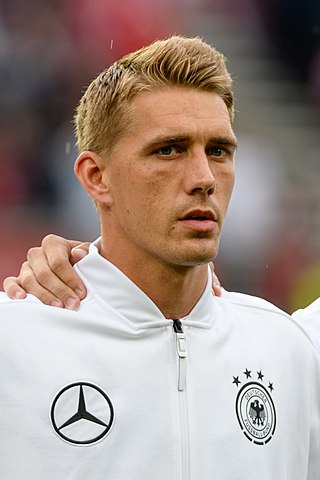
Nils Petersen is a German professional footballer who plays as a forward for Bundesliga club SC Freiburg and the Germany national team. He appeared in the 2016 Summer Olympics and remains the first and only German footballer who has scored five goals in a single game with the national team.
Nobunaga Shimazaki, Japanese voice actor births
Nobunaga Shimazaki is a Japanese voice actor affiliated with Aoni Production. He won the Best Rookie Actor Award at the 7th Seiyu Awards and the Best Actors in Supporting Roles at the 15th Seiyu Awards.
Ravindra Jadeja, Indian cricketer births

Ravindrasinh Anirudhsinh Jadeja, commonly known as Ravindra Jadeja, is an Indian international cricketer. He is an all-rounder, who bats left-handed and bowls left-arm orthodox spin. He was the captain of the Chennai Super Kings in the Indian Premier League. He represents Saurashtra in first-class cricket. He is considered as one of the best fielders in the current decade.
Roy Orbison, American singer-songwriter and guitarist (b. 1936) deaths
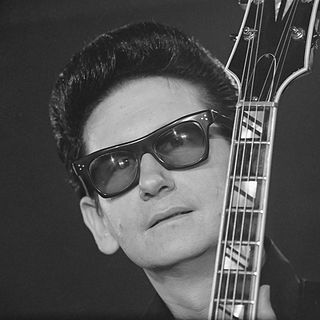
Roy Kelton Orbison was an American singer, songwriter, and musician known for his impassioned singing style, complex song structures, and dark, emotional ballads. His music was described by critics as operatic, earning him the nicknames "The Caruso of Rock" and "The Big O." Many of Orbison's songs conveyed vulnerability at a time when most male rock-and-roll performers chose to project machismo. He performed while standing motionless and wearing black clothes to match his dyed black hair and dark sunglasses, which he wore to counter his shyness and stage fright.
Sean Edwards, English race car driver (d. 2013) births

Sean Lawrence Guy Edwards was an English professional racing driver, whose career highlight was winning as co-driver the 2013 Nurburgring 24 Hours. He died as a passenger in a private testing incident in October 2013, at Queensland Raceway in Australia.
Matt Niskanen, American ice hockey player births

Matthew Norman Niskanen is an American former professional ice hockey defenseman. He played 13 seasons in the National Hockey League (NHL) with the Dallas Stars, Pittsburgh Penguins, Washington Capitals, and Philadelphia Flyers from 2007 to 2020.
Shannon Bobbitt, American basketball player births
Shannon Denise Bobbitt is an American professional basketball player, most recently for the WNBA's Washington Mystics. One of eight children and a native of the Bronx, New Yorker Bobbitt honed her basketball skills on the neighborhood project courts of Harlem. Following a stellar college career in which 5'2" Bobbitt won two Division I national titles at the University of Tennessee, she decided to enter the WNBA and began her professional basketball career playing point guard for the Los Angeles Sparks.
Aristeidis Grigoriadis, Greek swimmer births
Aristeidis ("Aris") Grigoriadis is a Greek swimmer from Thessaloniki. He was named the 2005 Greek Male Athlete of the Year.
Rudra Pratap Singh, Indian cricketer births
Rudra Pratap Singh pronunciation (help·info) is an Indian former cricketer, who played for the India national cricket team in Test, One Day International and Twenty20 International cricket as a left arm fast-medium bowler. In September 2018, he announced his retirement from all forms of cricket.
Burr Tillstrom, American actor and puppeteer (b. 1917) deaths

Franklin Burr Tillstrom was a puppeteer and the creator of Kukla, Fran and Ollie.
Burleigh Grimes, American baseball player and manager (b. 1893) deaths
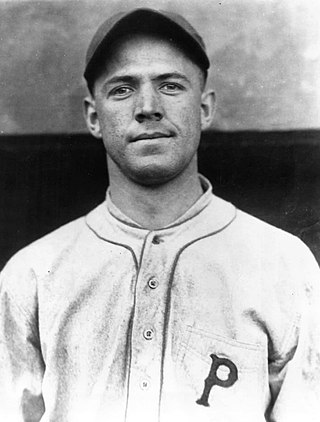
Burleigh Arland Grimes was an American professional baseball player and manager, and the last pitcher officially permitted to throw the spitball. Grimes made the most of this advantage, as well as his unshaven, menacing presence on the mound, which earned him the nickname "Ol' Stubblebeard." He won 270 MLB games, pitched in four World Series over the course of his 19-year career, and was elected to the Baseball Hall of Fame in 1964. A decade earlier, he had been inducted into the Wisconsin Athletic Hall of Fame.
Syndric Steptoe, American football player births
Syndric Marquis Steptoe is a former gridiron football wide receiver. He was drafted by the Cleveland Browns in the seventh round of the 2007 NFL Draft. He played college football at Arizona.
Nora Kirkpatrick, American actress and musician births

Nora Kirkpatrick is an American director, writer and musician.
Princess Sofia, Duchess of Värmland births

Princess Sofia, Duchess of Värmland, is a member of the Swedish royal family. Before marrying Prince Carl Philip and becoming a princess of Sweden in 2015, Sofia was a glamour model and reality television contestant. They have three sons, Prince Alexander, Prince Gabriel and Prince Julian, who are fifth, sixth and seventh in the line of succession to the Swedish throne, respectively.
Lucienne Boyer, French singer and actress (b. 1903) deaths

Lucienne Boyer was a French diseuse and singer, best known for her song "Parlez-moi d'amour". Her impresario was Bruno Coquatrix.
Gul Khan Nasir, Pakistani poet, historian, and politician (b. 1914) deaths

Gul Khan Naseer, also known as Malek o-Sho'arā Balochistan was a politician, poet, historian, and journalist from Balochistan, Pakistan. Born on 14 May 1914 in Noshki, Gul Khan Naseer was at the forefront of the Baloch nationalist movement and was most active between 1935 and 1980. His father's name was Habib Khan and he belonged to the Paindzai family of the Zagar Mengal sub branch of the Mengal tribe. Gul Khan's mother "Bibi Hooran" belonged to the Rakhshani branch of the Bolazai Badini.
Robbie Gould, American football player births

Robert Paul Gould III is an American football placekicker for the San Francisco 49ers of the National Football League (NFL). He played with the Chicago Bears from 2005 to 2015, during which he became the franchise's all-time leading scorer. Gould was originally signed by the New England Patriots as an undrafted free agent in 2005. He played college football at Penn State.
Ryan Carnes, American actor and producer births
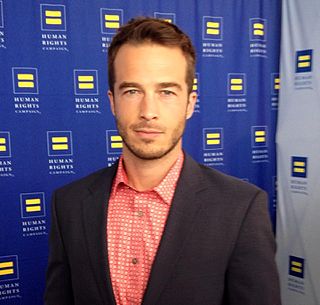
Ryan Gregg Carnes is an American actor. He is most known for playing the adult Lucas Jones on the ABC soap opera General Hospital.
Alberto Contador, Spanish cyclist births
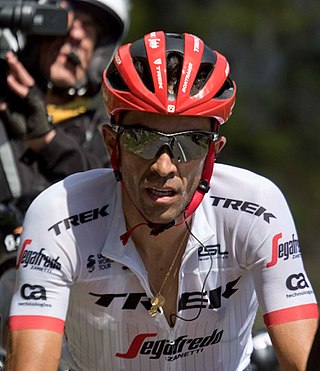
Alberto Contador Velasco is a Spanish former professional cyclist. He is one of the most successful riders of his era, winning the Tour de France twice, the Giro d'Italia twice, and the Vuelta a España three times. He is one of only seven riders to have won all three Grand Tours of cycling, and one of only two riders to have won all three more than once. He has also won the Vélo d'Or a record 4 times.
Sean Ervine, Zimbabwean cricketer births
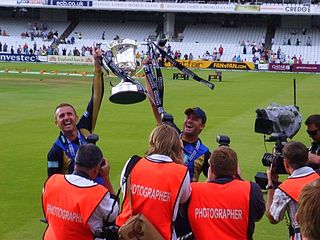
Sean Michael Ervine is a Zimbabwean former cricketer. Ervine played as an all-rounder who batted left-handed and bowled right-arm medium pace.
Aaron Sandilands, Australian footballer births

Aaron Sandilands is a former professional Australian rules footballer who played for the Fremantle Football Club in the Australian Football League (AFL). At 211cm/6'11" tall, and with a peak weight of 120 kg (265 lb), he is the second heaviest and equal tallest player to ever play in the AFL.
Susie Wolff, Scottish race car driver births

Suzanne Wolff is a British former professional racing driver.
Jean-Marie Seroney, Kenyan activist and politician (b. 1927) deaths
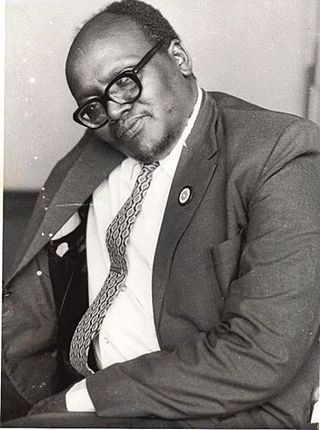
Jean-Marie Seroney was a Kenyan human rights advocate, a legislator, and an Amnesty International prisoner of conscience. He was detained as a prisoner of conscience for 1,155 days.
Federico Balzaretti, Italian footballer births
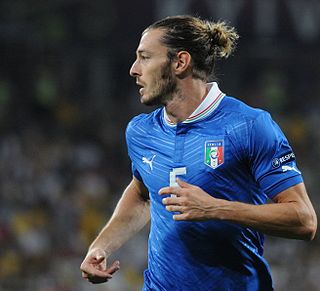
Federico Balzaretti is an Italian former professional footballer who played as a left-sided full-back, currently in charge as director of football of Vicenza.
Danielle Downey, American golfer and coach (d. 2014) births
Danielle Elizabeth Downey was an American professional golfer. She won golf tournaments at the collegiate level, Sun Coast events and on the Futures Tour. She played on the LPGA Tour from 2006 to 2010.
Steve Lovell, English footballer births
Stephen William Henry Lovell is an English former footballer who played as a striker. Lovell played the majority of his career in the Scottish Premier League, representing Dundee, Aberdeen and Falkirk, but also played in England for AFC Bournemouth, Portsmouth, Exeter City, Sheffield United and Queens Park Rangers.
Carlos Takam, Cameroonian-French boxer births

Armand Carlos Netsing Takam is a Cameroonian-born French professional boxer. He has challenged once for the unified WBA (Super), IBF, and IBO heavyweight titles against in 2017. As an amateur, he represented Cameroon at the 2004 Olympics.
Charles Deutsch, French engineer and businessman, co-founded DB (b. 1911) deaths
Charles Deutsch (1911–1980) was a French aerodynamics engineer and automobile maker, founder of the brand "DB" with René Bonnet, and later of the "CD".
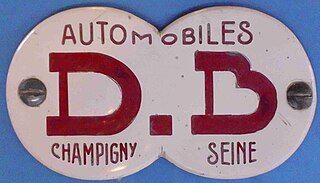
Deutsch-Bonnet, is a brand of sports cars created in 1937 by Charles Deutsch and René Bonnet and disappeared in 1962.
Tim Cahill, Australian footballer births

Timothy Filiga Cahill is an Australian former professional footballer who played as an attacking midfielder but also played as a striker on many occasions. A box-to-box midfielder, Cahill became recognised for "his aggressive and powerful approach and his ability to head the ball in the penalty area". Cahill has scored 50 goals in 108 caps between 2004 and 2018 and is regarded as one of the greatest Australian footballers of all time. He currently works as a pundit for BBC Sport and Sky Sports.
Chris Başak, American baseball player births
Christopher Joseph Başak, is an American former professional baseball infielder. He played for the New York Yankees of Major League Baseball in 2007. During his career, he played in the Yankees, New York Mets, Minnesota Twins and organizations. Basak made five appearances for the Yankees, receiving one at bat.
Darrell Jackson, American football player births
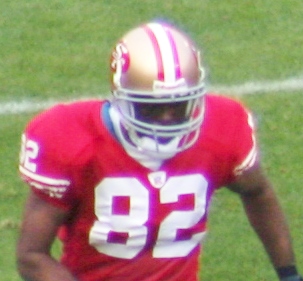
Darrell Lamont Jackson is an American former college and professional football player who was a wide receiver in the National Football League (NFL) for nine seasons during the 2000s. Jackson played college football for the University of Florida, and thereafter, he played professionally for the Seattle Seahawks, the San Francisco 49ers and the Denver Broncos of the NFL.
Ramiro Pez, Argentine rugby player births
Ramiro Pez is an Italian Argentine rugby union footballer who normally plays at fly-half. In 2008-09, he joined the newly promoted French Top 14 club Toulon, having been signed from Venezia Mestre in the Italian Super 10 competition.
Kevin Cash, American baseball player and coach births

Kevin Forrest Cash is an American professional baseball manager and former player who is the manager of the Tampa Bay Rays of Major League Baseball (MLB). Previously, Cash played catcher in MLB for the Toronto Blue Jays, Tampa Bay Devil Rays, Boston Red Sox, New York Yankees, and Houston Astros. As a player, Cash was listed at 6 feet 0 inches (1.83 m) and 200 pounds (91 kg); he batted and threw right-handed. He was the bullpen coach for the Cleveland Indians before being hired as the Rays' manager in December 2014. Cash was the American League Manager of the Year in 2020 and 2021, the first AL manager to win the award consecutively.
Andrew Flintoff, English cricketer, coach, and sportscaster births

Andrew "Freddie" Flintoff is an English television and radio presenter and former international cricketer. Flintoff played all forms of the game and was one of the sport's leading all-rounders, a fast bowler, middle-order batsman, and slip fielder. He was consistently rated by the ICC as being among the top international all-rounders in both ODI and Test cricket.
Paul McVeigh, Irish footballer births
Paul Francis McVeigh is a former Northern Ireland international footballer who played for Tottenham Hotspur, Norwich City, Burnley and Luton Town in the English Leagues.
João Goulart, Brazilian lawyer and politician, 24th President of Brazil (b. 1918) deaths

João Belchior Marques Goulart, commonly known as Jango, was a Brazilian politician who served as the 24th president of Brazil until a military coup d'état deposed him on 1 April 1964. He was considered the last left-wing president of Brazil until Luiz Inácio Lula da Silva took office in 2003.
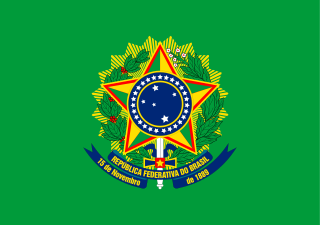
The president of Brazil, officially the president of the Federative Republic of Brazil or simply the President of the Republic, is the head of state and head of government of Brazil. The president leads the executive branch of the federal government and is the commander-in-chief of the Brazilian Armed Forces.
Noel Clarke, English actor, director, and screenwriter births

Noel Anthony Clarke is a British actor, screenwriter, director and comic book writer. Rising to prominence for playing Mickey Smith in Doctor Who (2005–2010), he played Sam in the films Kidulthood (2006), Adulthood (2008) and Brotherhood (2016), which he also wrote and directed. He played Aaron Bishop in the TV series Bulletproof (2018–2021), which he also wrote and produced.
Adrian García Arias, Mexican footballer births
Adrián Israel García Arías is a Mexican former footballer and manager who last played as a defender for Celaya of Mexico, and managed Michoacán F.C., a team that plays in Liga TDP.He is currently manager for Liga Nacional club Malacateco.
Jens Pulver, American mixed martial artist and boxer births

Jens Johnnie Pulver is an American retired professional mixed martial artist and undefeated boxer and kickboxer. Pulver was the inaugural UFC Lightweight Champion in addition to serving as the head coach on The Ultimate Fighter 5 reality show against long-time rival B.J. Penn. In mixed martial arts, Pulver competed at the Lightweight, Featherweight, Bantamweight and Flyweight divisions in addition to competing at the Middleweight, Light Middleweight, and Welterweight divisions as a professional boxer. While perhaps best known for competing in the UFC, Pulver has also competed in Pride Fighting Championships, for the PRIDE 2005 Lightweight Grand Prix. He is to-date the youngest UFC Lightweight Champion in the UFC history, eventually relinquishing his title, after two defenses, due to a contract dispute. Pulver officially retired from combat sports in 2014.
Nick Stajduhar, Canadian ice hockey player births
Nick Stajduhar is a former professional ice hockey defenceman. He was selected by the Edmonton Oilers in the first round of the 1993 NHL Entry Draft, 16th overall, a pick the Oilers received from the Los Angeles Kings in the Wayne Gretzky trade.
Nikolay Kuznetsov, Soviet naval officer (b. 1904) deaths

Nikolay Gerasimovich Kuznetsov was a Soviet naval officer who achieved the rank of Admiral of the Fleet of the Soviet Union and served as People's Commissar of the Navy during the Second World War. The N. G. Kuznetsov Naval Academy and the Russian aircraft carrier Admiral Kuznetsov, as well as the Kuznetsov-class carrier class, are named in his honor.
Ewan Birney, English scientist births

John Frederick William Birney is joint director of EMBL's European Bioinformatics Institute (EMBL-EBI), in Hinxton, Cambridgeshire and deputy director general of the European Molecular Biology Laboratory (EMBL). He also serves as non-executive director of Genomics England, chair of the Global Alliance for Genomics and Health (GA4GH) and honorary professor of bioinformatics at the University of Cambridge. Birney has made significant contributions to genomics, through his development of innovative bioinformatics and computational biology tools. He previously served as an associate faculty member at the Wellcome Trust Sanger Institute.
Heather Mizeur, American lawyer and politician births
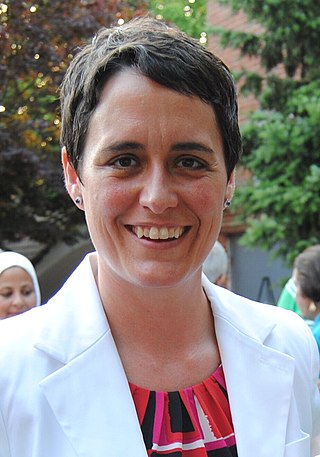
Heather R. Mizeur is an American politician who served as a member of the Maryland House of Delegates from January 10, 2007, to January 14, 2015, representing the 20th district in Montgomery County. She was a candidate for governor of Maryland in the 2014 election but lost the Democratic primary to Lieutenant Governor Anthony Brown. In 2021, she announced her intention to run for Maryland's 1st congressional district in the 2022 election against incumbent Republican congressman Andy Harris. Mizeur won the primary election on July 19, 2022, defeating R. David Harden by nearly 40 points to become the Democratic nominee in the November 8 general election. She lost the general election to Harris by 11 points.
Rick Short, American baseball player births
Richard Ryan Short is an American former professional baseball second baseman who was the co-Hitting coach for the Arizona Diamondbacks of Major League Baseball (MLB). He played in Major League Baseball (MLB) for the Washington Nationals and in Nippon Professional Baseball (NPB) for the Chiba Lotte Marines and the Tohoku Rakuten Golden Eagles. He bats and throws right-handed. He is an alumnus of Western Illinois University and Larkin High School in Elgin, IL.
Janet Munro, English actress and singer (b. 1934) deaths

Janet Munro was a British actress. She won a Golden Globe Award for her performance in the film Darby O'Gill and the Little People (1959) and received a BAFTA Film Award nomination for her performance in the film Life for Ruth (1962).
Craig Brewer, American director, producer, and screenwriter births
Craig Brewer is an American filmmaker. His 2005 movie Hustle & Flow won the Audience Award at the 2005 Sundance Film Festival and achieved commercial success, along with an Academy Award for Best Original Song, "It's Hard out Here for a Pimp". He is also known for directing the 2011 remake of Footloose, the 2019 film Dolemite Is My Name and the 2021 film Coming 2 America; the latter two starring Academy Award-nominee Eddie Murphy.
Richard Krajicek, Dutch tennis player births

Richard Peter Stanislav Krajicek is a Dutch former professional tennis player. In 1996, he won the men's singles title at Wimbledon, and remains the only Dutch player to have won a major singles title. In the quarterfinals of that tournament, he delivered Pete Sampras's only defeat at Wimbledon between 1993 and 2000. Krajicek reached a career-high singles ranking of world No. 4 in March 1999. Since 2004, he has been the tournament director of the ABN AMRO World Tennis Tournament in Rotterdam. He is also the author of various sports books.
Naozumi Takahashi, Japanese singer and voice actor births
Naozumi Takahashi is a Japanese singer and voice actor who released the two popular singles "Soshite Omae ni Deaeta Dake De" and "Muteki na Smile". Naozumi's single "Ashita No Kioku" was used as an opening theme for Black Blood Brothers.
Carole Thate, Dutch field hockey player births
Carole Helene Antoinette Thate is a Dutch former field hockey player, who played 168 international matches for the Netherlands, in which she scored forty goals. She made her debut on 20 November 1989 in a friendly match against England.
Ulf Ekberg, Swedish singer-songwriter, keyboard player, and producer births

Ulf Gunnar Ekberg, also known as Buddha, is a Swedish singer-songwriter, musician, businessman and television and film producer, best known as a founding member of the pop group Ace of Base, along with siblings Jonas Berggren, Linn Berggren and Jenny Berggren.
Adrian Fenty, American lawyer and politician, 6th Mayor of the District of Columbia births
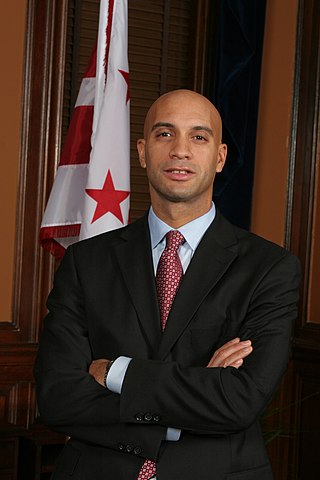
Adrian Malik Fenty is an American politician who served as the sixth mayor of the District of Columbia. He served one term, from 2007 to 2011, losing his bid for reelection at the primary level to Democrat Vincent C. Gray. Though Fenty won the Republican mayoral primary as a write-in candidate, he declined the Republican nomination and said he would likely not seek elected office again. Gray went on to win the general election for mayor in the overwhelmingly Democratic District.

The mayor of the District of Columbia is the head of the executive branch of the government of the District of Columbia, in the United States. The mayor has the duty to enforce district laws, and the power to either approve or veto bills passed by the Council of the District of Columbia, in the United States. In addition, the mayor oversees all district services, public property, police and fire protection, most public agencies, and the public school system within the District of Columbia. The mayor's office oversees an annual district budget of $8.8 billion. The mayor's executive office is located in the John A. Wilson Building in downtown Washington, D.C. The mayor appoints several officers, including the deputy mayors for Education and Planning & Economic Development, the district administrator, the chancellor of the district's public schools, and the department heads of the district agencies.
Mark Reckless, English politician births

Mark John Reckless is a British politician who served as a Member of the Senedd (MS) for South Wales East from 2016 until 2021, having previously served as Member of Parliament (MP) for Rochester and Strood from 2010 to 2015. Initially a member of the Conservative Party, he crossed the floor to join the UK Independence Party (UKIP) in September 2014. He has since changed parties a further three times.
Jeff Rouse, American swimmer births
Jeffrey Norman Rouse is an American former competition swimmer, three-time Olympic champion, and former world record-holder in three events.
Torri Higginson, Canadian actress births

Sarah Victoria "Torri" Higginson is a Canadian actress. She is best known for her roles in the TekWar movies and series, and for portraying Dr. Elizabeth Weir in Stargate SG-1 and Stargate Atlantis (2004–2008), Dr. Jordan Hampton in NCIS (2007–2009), and Commander Delaney Truffault in Dark Matter (2015–2017). She is also a theatre actress and has appeared in Three Tall Women, Weldon Rising, and Picasso at the Lapin Agile.
Akihiro Yano, Japanese baseball player births

Akihiro Yano is a former Japanese baseball player in Japan's Nippon Professional Baseball. He started his career as the Number 2 Draft pick with the Chunichi Dragons in 1991, and played for the Hanshin Tigers from 1998 until his retirement in 2010. Currently, he serves as the Tigers' manager.
Judd Apatow, American director, producer, and screenwriter births

Judd Apatow is an American comedian, director, producer, and screenwriter, best known for his work in comedy and drama films. He is the founder of Apatow Productions, through which he produced and directed the films The 40-Year-Old Virgin (2005), Knocked Up (2007), Funny People (2009), This Is 40 (2012), Trainwreck (2015), The King of Staten Island (2020), and The Bubble (2022).
Arnaldo Mesa, Cuban boxer (d. 2012) births
Arnaldo Mesa Bonell was an amateur boxer from Cuba, who won the silver medal for his native country at the 1996 Summer Olympics in Atlanta, United States. In the final of the Bantamweight division he was defeated by Hungary's István Kovács. A year earlier, at the Pan American Games in Mar del Plata, he captured the gold medal in his division. In 1986 he already won the bronze medal at the 1986 World Amateur Boxing Championships in Reno.
Helen Greiner, American businesswoman and engineer births

Helen Greiner is a co-founder of iRobot and former CEO of CyPhy Work, Inc., a start-up company specializing in small multi-rotor drones for the consumer, commercial and military markets. Ms Greiner is currently the CEO of Tertill Corporation.
Natascha Badmann, Swiss triathlete births

Natascha Badmann is a professional triathlete from Switzerland. She is a 6-time winner of the Ironman World Championships in Kailua-Kona, Hawaii in 1998, 2000, 2001, 2002, 2004, and 2005 ; in 1998 she became the first European woman to win the Ironman Triathlon World Championship.
Per-Ulrik Johansson, Swedish golfer births

Per-Ulrik Johansson is a Swedish professional golfer, who won six times on the European Tour and played in two winning European Ryder Cup teams.
Gordon Durie, Scottish footballer and manager births
Gordon Scott Durie is the Scottish former professional footballer, a utility player who usually played as a striker. He played for East Fife, Hibernian, Chelsea, Tottenham Hotspur, Rangers and Hearts. He was also capped 43 times by Scotland. After retiring as a player in 2001, in 2010, he became a coach and manager, working for East Fife and Rangers as an assistant.
Mall Nukke, Estonian painter births

Mall Nukke is an Estonian artist. A printmaker by training, she is primarily known for her paintings, collages and installations influenced by pop art. Mall Nukke emerged on the Estonian art scene in the early 1990s, her work at the period can be seen as commentary of nascent mass culture and consumer society in newly independent Estonia. Her early collages combined various cultural references and created new media characters based on real entertainers and public figures. Since the 2000s, Mall Nukke has concentrated on creating photo-manipulations and mixed media paintings inspired by Eastern Orthodox icon art.
Evert van Linge, Dutch footballer and architect (b. 1895) deaths
Evert van Linge was a Dutch footballer who earned 13 caps for the Dutch national side between 1919 and 1926, scoring three goals. He also participated at the 1924 Summer Olympics. He played for Be Quick 1887 and SC Veendam.
Ulrich Thomsen, Danish actor and producer births
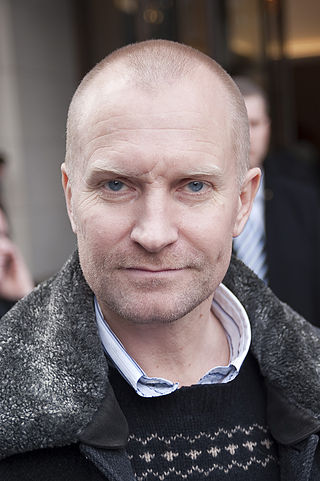
Ulrich Thomsen is a Danish actor and filmmaker, known for his role of Kai Proctor in the Cinemax original series Banshee (2013-2016).
Ben Watt, English singer-songwriter, musician, author, DJ, and radio presenter births

Benjamin Brian Thomas Watt is a British musician, singer, songwriter, author, DJ and radio presenter, best known as one half of the duo Everything but the Girl.
David Lovering, American drummer births
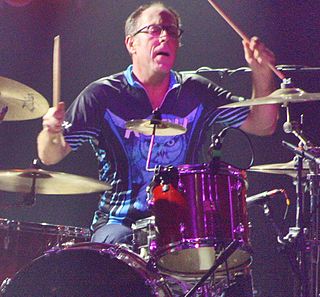
David Lovering is an American musician and magician. He is best known as the drummer for the alternative rock band Pixies, which he joined in 1986. After the band's breakup in 1993, Lovering drummed with several other acts, including The Martinis, Cracker, Nitzer Ebb and Tanya Donelly. He also pursued a magic career as the Scientific Phenomenalist, performing scientific and physics-based experiments on stage. When the Pixies reunited in 2004, Lovering returned as the band's drummer.
Jonathan Melvoin, American musician (d. 1996) births

Jonathan David Melvoin was an American musician, active in the 1980s and 1990s.
Manuel Reuter, German race car driver births

Manuel Reuter is a German former race car driver.
Frantz Fanon, Martinique-French psychiatrist and author (b. 1925) deaths

Frantz Omar Fanon, also known as Ibrahim Frantz Fanon, was a French West Indian psychiatrist, and political philosopher from the French colony of Martinique. His works have become influential in the fields of post-colonial studies, critical theory, and Marxism. As well as being an intellectual, Fanon was a political radical, Pan-Africanist, and Marxist humanist concerned with the psychopathology of colonization and the human, social, and cultural consequences of decolonization.
Masahiko Katsuya, Japanese journalist and photographer (d. 2018) births
Masahiko Katsuya was a Japanese columnist, photographer, and pundit. After failing the entrance exams for the University of Tokyo and the University of Tsukuba, Katsuya entered Waseda University in 1980. He started working for an editor of Bungeishunjū after graduating from the University in 1985.
Stephen Hepburn, English politician births

Stephen Hepburn is a British politician, who was the Member of Parliament for Jarrow from 1997 to 2019. Hepburn was a member of the Labour Party until 7 October 2019, when he was suspended from the party following an accusation of sexual harassment. He then sat as an independent and was barred by the party from standing as a Labour candidate.
Satoru Iwata, Japanese game programmer and businessman (d. 2015) births
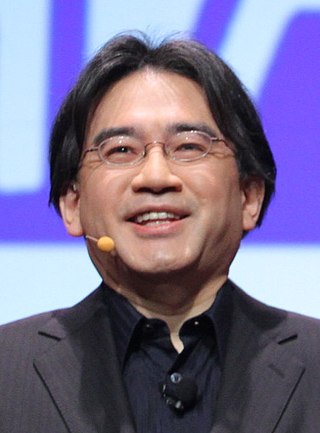
Satoru Iwata was a Japanese businessman, video game programmer, video game designer, and producer. He was the fourth president and chief executive officer (CEO) of Nintendo from 2002 until his death in 2015. He was a major contributor in broadening the appeal of video games by focusing on novel and entertaining games rather than top-of-the-line hardware.
Stephen Muggleton, English computer scientist and engineer births
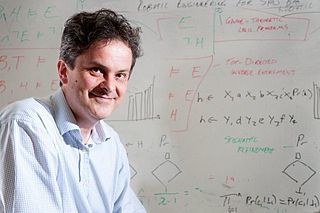
Stephen H. Muggleton FBCS, FIET, FAAAI, FECCAI, FSB, FREng is Professor of Machine Learning and Head of the Computational Bioinformatics Laboratory at Imperial College London.
Deborah Estrin, American computer scientist and academic births

Deborah Estrin is a Professor of Computer Science at Cornell Tech. She is co-founder of the non-profit Open mHealth and gave a TEDMED talk on small data in 2013.
Nick Park, English animator, director, producer, and screenwriter births

Nicholas Wulstan Park is a British animator who created Wallace and Gromit, Creature Comforts, Chicken Run, Shaun the Sheep, and Early Man. Park has been nominated for an Academy Award a total of six times and won four with Creature Comforts (1989), The Wrong Trousers (1993), A Close Shave (1995) and Wallace & Gromit: The Curse of the Were-Rabbit (2005).
Adrian Borland, English singer-songwriter, guitarist, and producer (d. 1999) births
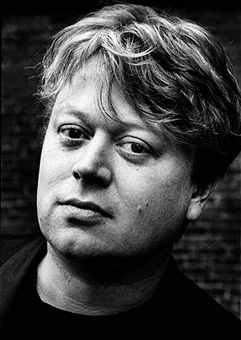
Adrian Kelvin Borland was an English singer, songwriter, guitarist and record producer, best known as the frontman of post-punk band the Sound.
Peter Buck, American guitarist, songwriter, and producer births
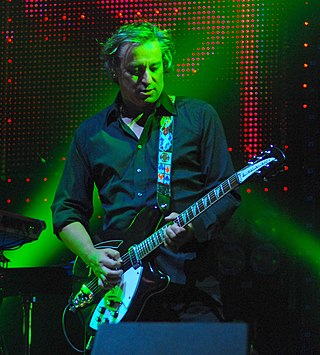
Peter Lawrence Buck is an American musician and songwriter. He was a co-founder and the lead guitarist of the alternative rock band R.E.M. He also plays the banjo and mandolin on several R.E.M. songs. Throughout his career with R.E.M. (1980–2011), as well as during his subsequent solo career, Buck has also been at various times an official member of numerous 'side project' groups. These groups included Arthur Buck, Hindu Love Gods, The Minus 5, Tuatara, The Baseball Project, Robyn Hitchcock and the Venus 3, Tired Pony, The No-Ones and Filthy Friends, each of which have released at least one full-length studio album. Additionally, the experimental combo Slow Music have released an official live concert CD. Another side project group called Full Time Men released an EP while Buck was a member. As well, ad hoc "supergroups" Bingo Hand Job, Musical Kings and Nigel & The Crosses have each commercially released one track.
Hans Kammerlander, Italian mountaineer and guide births

Hans Kammerlander is an Italian mountaineer, living in Ahornach, a hamlet nearby Sand in Taufers. He has climbed 13 of the 14 8000m peaks. In 1984, together with Reinhold Messner he was the first climber to traverse two 8000 m peaks before descending to base camp.
Randy Rhoads, American guitarist, songwriter, and producer (d. 1982) births

Randall William Rhoads was an American guitarist. He was the co-founder and original guitarist of the heavy metal band Quiet Riot, and the guitarist and co-songwriter for Ozzy Osbourne's first two solo albums Blizzard of Ozz (1980) and Diary of a Madman (1981). Rhoads was inducted into the Rock and Roll Hall of Fame in 2021.
B. R. Ambedkar, Indian economist and politician, 1st Indian Minister of Justice (b. 1891) deaths

Bhimrao Ramji Ambedkar was an Indian jurist, economist, social reformer and political leader who headed the committee drafting the Constitution of India from the Constituent Assembly debates, served as Law and Justice minister in the first cabinet of Jawaharlal Nehru, and inspired the Dalit Buddhist movement after renouncing Hinduism.
The Ministry of Law and Justice in the Government of India is a cabinet ministry which deals with the management of the legal affairs, legislative activities and administration of justice in India through its three departments namely the Legislative Department and the Department of Legal Affairs and the Department of Justice respectively. The Department of Legal Affairs is concerned with advising the various Ministries of the Central Government while the Legislative Department is concerned with drafting of principal legislation for the Central Government. The ministry is headed by Cabinet Minister of Law and Justice Kiren Rijiju appointed by the President of India on the recommendation of the Prime Minister of India. The first Law and Justice minister of independent India was Dr. B. R. Ambedkar, who served in the Prime Minister Jawaharlal Nehru's cabinet during 1947–51.
Anne Begg, Scottish educator and politician births

Dame Margaret Anne Begg DBE is a Scottish politician who served as Member of Parliament (MP) for Aberdeen South from 1997 to 2015. A member of the Labour Party, she was Chair of the Work and Pensions Select Committee from 2010 to 2015.
Rick Buckler, English drummer, songwriter, and producer births

Paul Richard Buckler is an English musician who is the former drummer of The Jam.
Graeme Hughes, Australian cricketer, rugby league player, and sportscaster births

Graeme Christopher Hughes is an Australian sportsman turned broadcaster. He is the last man to have played both rugby league and cricket for New South Wales. His father Noel Hughes played cricket for Worcestershire in the 1950s.
Tony Woodcock, English footballer births
Anthony Stewart Woodcock is an English retired international footballer who played professionally in both England and Germany as a striker for Nottingham Forest, FC Köln and Arsenal. Woodcock won the European Cup in 1979 with Nottingham Forest.
Steven Wright, American actor, comedian, and screenwriter births

Steven Alexander Wright is an American stand-up comedian, actor, writer, and film producer. He is known for his distinctly lethargic voice and slow, deadpan delivery of ironic, philosophical and sometimes nonsensical jokes, paraprosdokians, non sequiturs, anti-humor, and one-liners with contrived situations.
Honus Wagner, American baseball player and manager (b. 1874) deaths

Johannes Peter "Honus" Wagner, sometimes referred to as "Hans" Wagner, was an American baseball shortstop who played 21 seasons in Major League Baseball from 1897 to 1917, almost entirely for the Pittsburgh Pirates. Wagner won his eighth batting title in 1911, a National League record that remains unbroken to this day, and matched only once, in 1997, by Tony Gwynn. He also led the league in slugging six times and stolen bases five times. Wagner was nicknamed "the Flying Dutchman" due to his superb speed and German heritage. This nickname was a nod to the popular folk-tale made into a famous opera by the German composer Richard Wagner. In 1936, the Baseball Hall of Fame inducted Wagner as one of the first five members. He received the second-highest vote total, behind Ty Cobb's 222 and tied with Babe Ruth at 215.
Nicola De Maria, Italian painter births
Nicola De Maria is an Italian painter living and working in Torino, Italy. De Maria is known for his abstract figurative works, which have been characterized as lyrical and colourful.
Chris Stamey, American singer-songwriter, musician, and music producer births
Christopher Charles Stamey is an American musician, singer, songwriter, and record producer. After a brief time playing with Alex Chilton, as well as Mitch Easter under the name Sneakers, Stamey formed The dB's with Peter Holsapple.
Sue Carroll, English journalist (d. 2011) births
Susan Elizabeth Carroll was an English journalist, best known for her time as a columnist at the Daily Mirror.
Gary Goodman, Australian cricketer and coach births
Gary Weech Goodman is a former cricketer who played for Tasmania and South Australia.
Geoff Hoon, English academic and politician, Minister of State for Europe births
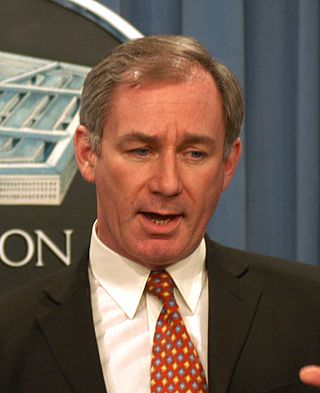
Geoffrey William Hoon is a British Labour Party politician who served as the Member of Parliament (MP) for Ashfield in Nottinghamshire from 1992 to 2010. He is a former Defence Secretary, Transport Secretary, Leader of the House of Commons and Government Chief Whip.

The Parliamentary Under-Secretary of State for Europe, formerly the Minister of State for Europe is a ministerial position within the Government of the United Kingdom, in charge of affairs with Europe. The Minister can also be responsible for government policy towards European security; defence and international security; the Falkland Islands; polar regions; migration; protocol; human resources; OSCE and Council of Europe; relations with Parliament; British Overseas Territories of Gibraltar and Sovereign Base Areas in Cyprus; and FCO finance, knowledge and technology.
Tom Hulce, American actor births

Thomas Edward Hulce is an American actor and theater producer. He is best known for his portrayal of Wolfgang Amadeus Mozart in the Academy Award-winning film Amadeus (1984), as well as the roles of Larry "Pinto" Kroger in Animal House (1978), Larry Buckman in Parenthood (1989), and Quasimodo in Disney's animated film The Hunchback of Notre Dame (1996). Awards include an Emmy Award for The Heidi Chronicles, a Tony Award for Spring Awakening, an Oscar Award nomination for Best Actor for Amadeus, and four Golden Globe nominations.
Masami Kurumada, Japanese author and illustrator births
Masami Kurumada is a Japanese manga artist and writer, known for specializing in fighting manga featuring bishōnen and magical boy.
Nicolas Bréhal, French author and critic (d. 1999) births
Nicolas Bréhal was a French novelist and literary critic.
Craig Newmark, American computer programmer and entrepreneur; founded Craigslist births

Craig Alexander Newmark is an American internet entrepreneur and philanthropist best known as the founder of the classifieds website Craigslist. Prior to founding Craigslist, he worked as a computer programmer for companies such as IBM, Bank of America, and Charles Schwab. Newmark served as chief executive officer of Craigslist from its founding until 2000. He founded Craig Newmark Philanthropies in 2015.

Craigslist is an American classified advertisements website with sections devoted to jobs, housing, for sale, items wanted, services, community service, gigs, résumés, and discussion forums.
Shio Satō, Japanese illustrator (d. 2010) births
Chiyoko "Shio" Satō was a Japanese manga artist. Satō was a member of the Post Year 24 Group, a group of female manga artists considered influential in the development of shōjo manga. She also wrote under the pen name Sugar Salt . She made her professional debut in 1977 with the publication of Koi wa Ajinomono!? in Bessatsu Shōjo Comic. Her definitive works include Yumemiru Wakusei and One Zero. Her stories were usually serious science fiction drawn in a "subdued" style. Sato regards her interest in science fiction from the patience and thorough answers of her father when she was young and asking "Why?" to everything. Her science fiction influences include Isaac Asimov, Cordwainer Smith and James Tiptree Jr. A major influence on her work Yumemiru Wakusei was the film Lawrence of Arabia.
Wendy Ellis Somes, English ballerina and producer births

Wendy Ellis Somes is a former principal ballerina with the Royal Ballet in London, and is now a worldwide producer of the Sir Frederick Ashton ballets Cinderella and Symphonic Variations.
Maurice Hope, Caribbean-English boxer births
Maurice Hope is a British former boxer, who was world junior middleweight champion. Born in Antigua, he grew up in Hackney, London. He represented Great Britain at the 1972 Summer Olympics in Munich, West Germany.
Harold Ross, American journalist and publisher, founded The New Yorker (b. 1892) deaths
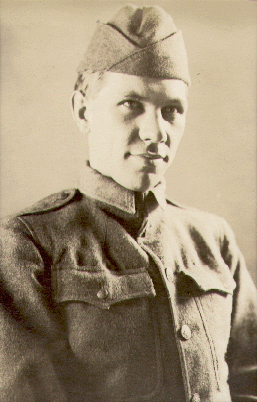
Harold Wallace Ross was an American journalist who co-founded The New Yorker magazine in 1925 with his wife Jane Grant, and was its editor-in-chief until his death.

The New Yorker is an American weekly magazine featuring journalism, commentary, criticism, essays, fiction, satire, cartoons, and poetry. Founded as a weekly in 1925, the magazine is published 47 times annually, with five of these issues covering two-week spans. Although its reviews and events listings often focus on the cultural life of New York City, The New Yorker has a wide audience outside New York and is read internationally. It is well known for its illustrated and often topical covers, its commentaries on popular culture and eccentric American culture, its attention to modern fiction by the inclusion of short stories and literary reviews, its rigorous fact checking and copy editing, its journalism on politics and social issues, and its single-panel cartoons sprinkled throughout each issue.
Guy Drut, French hurdler and politician births
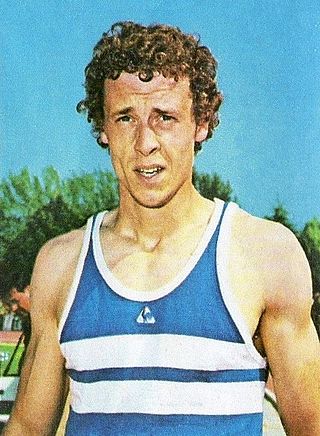
Guy Drut is an Olympic champion and politician who won gold at the 1976 Summer Olympics in Montreal in the 110 m hurdles. In 1996, he became a member of the International Olympic Committee (IOC).
Joe Hisaishi, Japanese pianist, composer, and conductor births

Mamoru Fujisawa , known professionally as Joe Hisaishi , is a Japanese composer, musical director, conductor and pianist, known for over 100 film scores and solo albums dating back to 1981. He is also known for his piano scores.
Helen Liddell, Baroness Liddell of Coatdyke, Scottish journalist and politician, Secretary of State for Scotland births

Helen Lawrie Liddell, Baroness Liddell of Coatdyke PC is a British politician and life peer who served as Secretary of State for Scotland from 2001 to 2003 and British High Commissioner to Australia from 2005 to 2009. A member of the Labour Party, she was Member of Parliament (MP) for Airdrie and Shotts, previously Monklands East, from 1994 to 2005.

The secretary of state for Scotland, also referred to as the Scottish secretary, is a secretary of state in the Government of the United Kingdom, with responsibility for the Scotland Office. The incumbent is a member of the Cabinet of the United Kingdom, 18th in the ministerial ranking.
Linda Barnes, American author, playwright, and educator births
Linda Barnes is an American mystery writer.
Linda Creed, American singer-songwriter (d. 1986) births
Linda Diane Creed, also known by her married name Linda Epstein, was an American songwriter and lyricist who teamed up with Thom Bell to produce some of the most successful Philadelphia soul groups of the 1970s.
Doug Marlette, American author and cartoonist (d. 2007) births
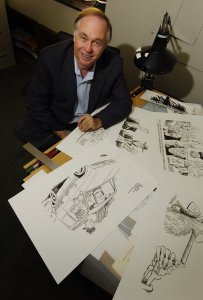
Douglas Nigel Marlette was a Pulitzer Prize-winning American editorial cartoonist who, at the time of his death, had also published two novels and was "finding his voice in writing long-length fiction." His popular comic strip Kudzu, distributed by Tribune Media Services from 1981 to 2007, was adapted into a musical comedy.
Peter Willey, English cricketer and umpire births
Peter Willey is a former English cricketer, who played as a right-handed batsman and right-arm offbreak bowler. In and out of the England team, he interrupted his international career for three years by taking part in the first of the England players' South African rebel tours in 1982. After his playing career ended, he became a Test umpire.
Jean-Paul Ngoupandé, Central African politician, Prime Minister of the Central African Republic (d. 2014) births
Jean-Paul Ngoupandé was a Central African politician who was Prime Minister of the Central African Republic from 1996 to 1997. He stood as a presidential candidate in 1999 and 2005, and he served as Minister of Foreign Affairs from 2005 to 2006. He was President of the National Unity Party, an entity which he founded in the mid-1990s. He presented himself as an enemy of corruption and a defender of fair elections and democratic institutions.

This article lists the heads of government of the Central African Republic. There have been twenty-five heads of government of the Central African Republic and the Central African Empire. The office of Prime Minister, the head of government, was created when the Central African Republic became an autonomous territory of France in December 1958. It was originally the highest post of the Central African Republic, though France did maintain a governor in the territory. After the Central African Republic declared its independence and became a republic on 13 August 1960, David Dacko held both the Prime Minister and newly created President of the Central African Republic posts briefly before eliminating the Prime Minister position and placing all executive power in the office of the President.
Don Nickles, American businessman and politician births
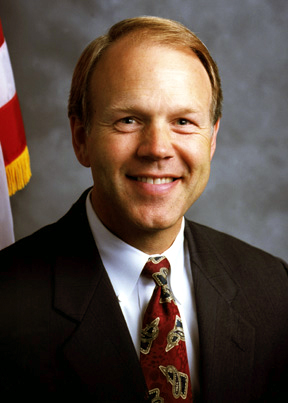
Donald Lee Nickles is an American politician and lobbyist who was a Republican United States Senator from Oklahoma from 1981 to 2005. He was considered both a fiscal and social conservative. After retiring from the Senate as the longest-serving senator from Oklahoma up until that point, he founded the Nickles Group, a lobbying firm.
Keke Rosberg, Finnish racing driver births
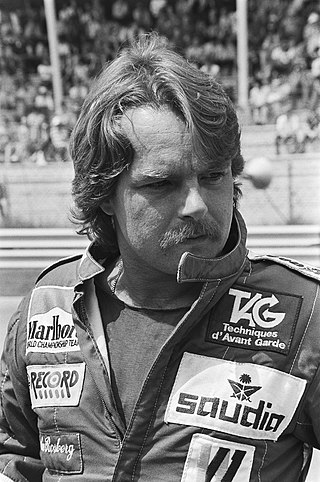
Keijo Erik Rosberg, known as "Keke", is a Finnish former racing driver and winner of the 1982 Formula One World Championship. He was the first Finnish driver to compete regularly in the series, as well as the first Finnish champion. He is the father of 2016 Formula One World Champion Nico Rosberg.
JoBeth Williams, American actress births

Margaret JoBeth Williams is an American actress and television director. Her directorial debut with the 1994 short film On Hope earned her an Academy Award nomination for Best Live Action Short Film. In 2009 she began serving as president of the Screen Actors Guild Foundation; she is President Emeritus of the foundation.
Lawrence Cannon, Canadian businessman and politician, 9th Canadian Minister of Foreign Affairs births
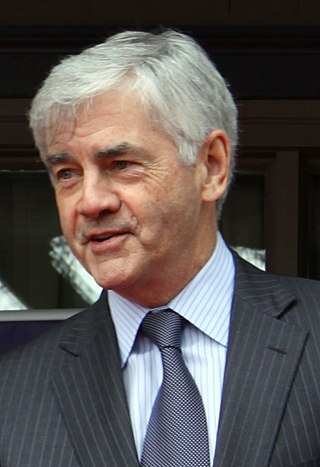
Lawrence Cannon, is a Canadian politician from Quebec and Prime Minister Stephen Harper's former Quebec lieutenant. In early 2006, he was made the Minister of Transport. On October 30, 2008, he relinquished oversight of Transport and was sworn in as Minister of Foreign Affairs. He was defeated in the 2011 federal election by the NDP's Mathieu Ravignat. He was appointed as Canadian Ambassador to France in May 2012, and he served in that position until September 2017.

The Minister of Foreign Affairs is the minister of the Crown in the Canadian Cabinet who is responsible for overseeing the Government of Canada's international relations and is the lead minister responsible for Global Affairs Canada, though the minister of international trade leads on trade issues. In addition to Global Affairs Canada, the minister is also the lead in overseeing the International Centre for Human Rights and Democratic Development and the International Development Research Centre.
Henk van Woerden, Dutch-South African painter and author (d. 2005) births
Henk van Woerden was a Dutch painter and writer with close ties to South Africa.
Miroslav Vitouš, Czech-American bassist and songwriter births

Miroslav Ladislav Vitouš is a Czech jazz bassist.
Frankie Beverly, American soul/funk singer-songwriter, musician, and producer births
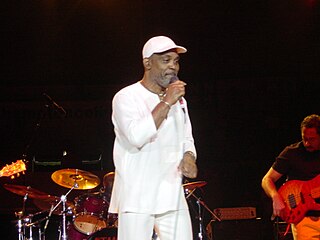
Frankie Beverly is an American singer, musician, songwriter, and producer, known primarily for his recordings with the soul and funk band Maze. Beverly formed Maze, originally called Raw Soul, in his hometown of Philadelphia in 1970. After a relocation to San Francisco and an introduction to Marvin Gaye, Maze went on to release nine Gold albums and create a large and devoted following. Beverly is the band's writer, producer and lead singer. He is known for his distinctive smooth baritone voice and charismatic stage presence.
Willy van der Kuijlen, Dutch footballer and manager (d. 2021) births

Wilhelmus Martinus Leonardus Johannes "Willy" van der Kuijlen was a Dutch football player and a scout for PSV Eindhoven.
Shekhar Kapur, Indian director, producer, and screenwriter births

Shekhar Kulbhushan Kapur is an Indian filmmaker and actor. Born into the Anand-Sahni family, Kapur is the recipient of several accolades, including a National Film Award, a National Board of Review Award and three Filmfare Awards, in addition to nominations for a BAFTA Award and a Golden Globe Award.
Edmund Dwyer-Gray, Irish-Australian politician, 29th Premier of Tasmania (b. 1870) deaths
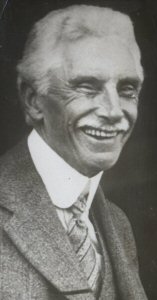
Edmund John Chisholm Dwyer-Gray was an Irish-Australian politician, who was the 29th Premier of Tasmania from 11 June to 18 December 1939. He was a member of the Australian Labor Party (ALP).

The premier of Tasmania is the head of the executive government in the Australian state of Tasmania. By convention, the leader of the party or political grouping which has majority support in the House of Assembly is invited by the governor of Tasmania to be premier and principal adviser.
Jonathan King, English singer-songwriter, record producer, music entrepreneur, television/radio presenter, and convicted sex offender births
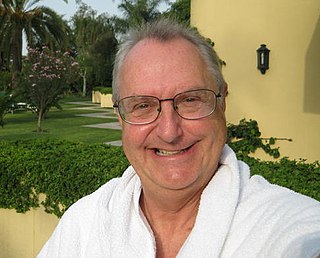
Jonathan King is an English singer, songwriter and record producer. He first came to prominence in 1965 when "Everyone's Gone to the Moon", a song that he wrote and sang while still an undergraduate, achieved chart success. As an independent producer, he discovered and named the rock band Genesis in 1967, producing their first album From Genesis to Revelation. He founded his own label UK Records in 1972. He released and produced songs for 10cc and the Bay City Rollers. In the 1970s King became known for hits that he performed and/or produced under different names, including "Johnny Reggae", "Loop di Love", "Sugar, Sugar", "Hooked on a Feeling", "Una Paloma Blanca" and "It Only Takes a Minute"; between September 1971 and 1972 alone he produced 10 top 30 singles in the UK.
Mike Smith, English singer-songwriter, keyboard player, and producer (d. 2008) births

Michael George Smith was an English singer, songwriter and music producer.
Keith West, English rock singer-songwriter and music producer births
Keith Hopkins, known by his stage name Keith West, is a British rock singer, songwriter and music producer. He is best known for his single "Excerpt from A Teenage Opera", which reached No. 2 on the UK Singles Chart.
Peter Handke, Austrian author and playwright, Nobel Prize laureate births
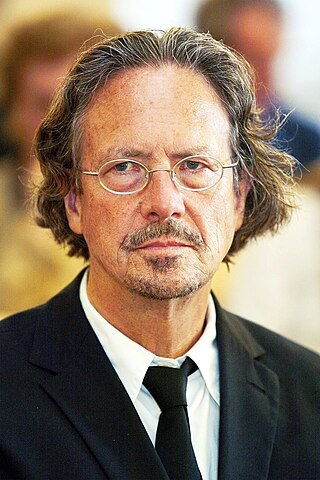
Peter Handke is an Austrian novelist, playwright, translator, poet, film director, and screenwriter. He was awarded the 2019 Nobel Prize in Literature "for an influential work that with linguistic ingenuity has explored the periphery and the specificity of human experience." Handke is considered to be one of the most influential and original German-language writers in the second half of the 20th century.

The Nobel Prize in Literature is a Swedish literature prize that is awarded annually, since 1901, to an author from any country who has, in the words of the will of Swedish industrialist Alfred Nobel, "in the field of literature, produced the most outstanding work in an idealistic direction". Though individual works are sometimes cited as being particularly noteworthy, the award is based on an author's body of work as a whole. The Swedish Academy decides who, if anyone, will receive the prize. The academy announces the name of the laureate in early October. It is one of the five Nobel Prizes established by the will of Alfred Nobel in 1895. Literature is traditionally the final award presented at the Nobel Prize ceremony. On some occasions the award has been postponed to the following year, most recently in 2018 as of May 2022.
Robb Royer, American guitarist, keyboard player, and songwriter births

Robert Wilson "Robb" Royer is an American musician and songwriter, best known as a founding member of Bread from 1968 to 1971. While he was with the band, they had a #5 UK/#1 US hit single with "Make It With You". He was replaced by Larry Knechtel in 1971.
Helen Cornelius, American country singer-songwriter and actress births

Helen Cornelius is an American country singer-songwriter, best remembered for a series of hit duets with Jim Ed Brown, many of which reached the U.S. country singles top ten during the late 1970s and early 1980s.
Richard Speck, American murderer (d. 1991) births

Richard Benjamin Speck was an American mass murderer who killed eight student nurses in their South Deering, Chicago, residence via stabbing, strangling, slashing their throats, or a combination of the three on the night of July 13–14, 1966. One victim was also raped prior to her murder. A ninth potential victim, student nurse Corazon Amurao, survived by hiding beneath a bed.
Bruce Nauman, American sculptor and illustrator births

Bruce Nauman is an American artist. His practice spans a broad range of media including sculpture, photography, neon, video, drawing, printmaking, and performance. Nauman lives near Galisteo, New Mexico.
Bill Thomas, American academic and politician births

William Marshall Thomas is an American politician. He was a Republican member of the United States House of Representatives from 1979 to 2007, finishing his tenure representing California's 22nd congressional district and as the Chairman of the House Ways and Means Committee.
Lawrence Bergman, Canadian lawyer and politician births

Lawrence S. Bergman is a Canadian politician in Quebec, Canada. He was a minister of the government of Quebec from 2003 to 2007, the Member of National Assembly of Quebec for the riding of D'Arcy-McGee in Montreal's west end from 1994 to 2014, and Chairperson of the Government Caucus in the parliamentary office of Quebec.
Richard Edlund, American visual effects designer and cinematographer births
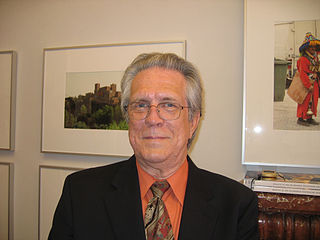
Richard Edlund, ASC is an American visual effects artist and inventor. He was a founding member of Industrial Light & Magic, having already founded Pignose amplifiers, and later co-founded Boss Film Studios and DuMonde VFX. He has won four Academy Awards for Best Visual Effects, as well as two Special Achievement Awards, two Scientific and Technical Awards, and the Medal of Commendation. He is also a BAFTA and Emmy Award recipient.
Franco Carraro, Italian politician and sports administrator births
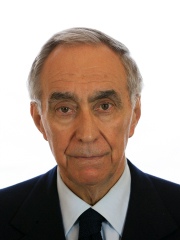
Franco Carraro is an Italian sport manager and a former member of Italian Socialist Party in the 1980s and 1990s.(2013–present)
Patrick Bauchau, Belgian-American actor births
Patrick Nicolas Jean Sixte Ghislain Bauchau is a Belgian actor best known for his roles in the films A View to a Kill, The Rapture and Panic Room, as well as the TV shows The Pretender and House.
Alberto Spencer, Ecuadorian-American soccer player (d. 2006) births
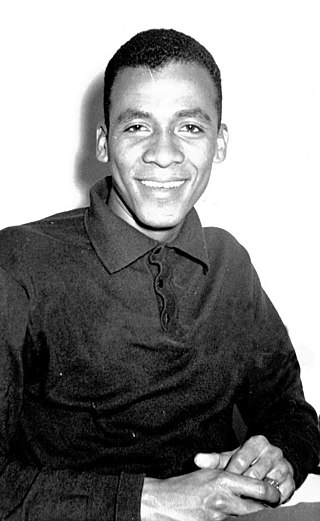
Alberto Pedro Spencer Herrera was an Ecuadorian footballer who played as a forward, and is widely regarded as one of the best Ecuadorian footballers of all time He is probably best known for his still-standing record for scoring the most goals in the Copa Libertadores, the most important club tournament in South America. He was elected the 20th best South American footballer of the 20th century in a poll by the IFFHS in 2004. He was known as "Cabeza Mágica".
Bill Ashton, English saxophonist and composer births
William Michael Allingham Ashton OBE is a British band leader, saxophonist and composer, best known for co-founding NYJO - the British National Youth Jazz Orchestra, of which he was Musical Director from 1965 until his retirement in 2009 when he became Life President.
David Ossman, American writer and comedian births

David Ossman is an American writer and comedian, best known as a member of the Firesign Theatre and screenwriter of such films as Zachariah.
Kenneth Copeland, American evangelist and author births

Kenneth Max Copeland is an American televangelist associated with the charismatic movement. The organization he founded in 1967, Eagle Mountain International Church Inc. (EMIC), is based in Tarrant County, Texas. Copeland's sermons are broadcast across the US and worldwide on the Victory Channel. Copeland has also written several books and resources.
Jean Lapointe, Canadian actor, singer, and politician (d. 2022) births
Jean Lapointe, was a Canadian actor, comedian and singer as well as a Canadian Senator.
Nick Bockwinkel, American wrestler, sportscaster, and actor (d. 2015) births

Nicholas Warren Francis "Nick" Bockwinkel was an American professional wrestler. He is best known for his appearances with the American Wrestling Association (AWA) in the 1970s and 1980s.
Henryk Górecki, Polish composer and academic (d. 2010) births

Henryk Mikołaj Górecki was a Polish composer of contemporary classical music. According to critic Alex Ross, no recent classical composer has had as much commercial success as Górecki. He became a leading figure of the Polish avant-garde during the post-Stalin cultural thaw. His Anton Webern-influenced serialist works of the 1950s and 1960s were characterized by adherence to dissonant modernism and influenced by Luigi Nono, Karlheinz Stockhausen, Krzysztof Penderecki and Kazimierz Serocki. He continued in this direction throughout the 1960s, but by the mid-1970s had changed to a less complex sacred minimalist sound, exemplified by the transitional Symphony No. 2 and the Symphony No. 3. This later style developed through several other distinct phases, from such works as his 1979 Beatus Vir, to the 1981 choral hymn Miserere, the 1993 Kleines Requiem für eine Polka and his requiem Good Night.
Donald J. Kutyna, American general births

General Donald Joseph Kutyna is a retired United States Air Force officer. He was commander in chief of the North American Aerospace Defense Command and the United States Space Command from 1990 to 1992, and commander of Air Force Space Command at Peterson Air Force Base, Colorado from 1987 to 1990.
Kamleshwar, Indian author, screenwriter, and critic (d. 2007) births

Kamleshwar Prasad Saxena, known mononymously as Kamleshwar, was a 20th-century Indian writer who wrote in Hindi. He also worked as a screenwriter for Indian films and television industry. Among his most well-known works are the films Aandhi, Mausam, Chhoti Si Baat and Rang Birangi. He was awarded the 2003 Sahitya Akademi Award for his Hindi novel Kitne Pakistan, and the Padma Bhushan in 2005.
Zeki Müren, Turkish singer-songwriter and actor (d. 1996) births

Zeki Müren was a Turkish singer, composer, songwriter, actor and poet. Known by the nicknames "The Sun of Art" and "Pasha", he was one of the prominent figures of the Turkish classical music. Due to his contributions to the art industry, he was named a "State Artist" in 1991. He was the first singer to receive a gold certification in Turkey and throughout his career recorded and released hundreds of songs on cassettes and phonograph records.
Daniel Lisulo, Zambian banker and politician, 3rd Prime Minister of Zambia (d. 2000) births
Daniel Muchiwa Lisulo was the 3rd Prime Minister of Zambia from June 1978 until February 1981.

The prime minister of Zambia was the head of government of Zambia. From 1973 to 1975, Mainza Chona was the first person to hold the position following independence from the United Kingdom.
Philippe Bouvard, French journalist and radio host births

Philippe Bouvard is a French television and radio presenter. From 1977 to 2014 he hosted the French radio program Les Grosses Têtes on Radio Luxemburg RTL, from 1982 to 1986 he hosted the television program Le Petit Théâtre de Bouvard, and since 2014 he has hosted the radio program Allo Bouvard on RTL.
Nikolaus Harnoncourt, German-Austrian cellist and conductor (d. 2016) births

Johann Nikolaus Harnoncourt or historically Johann Nikolaus Graf de la Fontaine und d'Harnoncourt-Unverzagt; was an Austrian conductor, particularly known for his historically informed performances of music from the Classical era and earlier. Starting out as a classical cellist, he founded his own period instrument ensemble, Concentus Musicus Wien, in 1953, and became a pioneer of the Early Music movement. Around 1970, Harnoncourt began conducting opera and concert performances, soon leading international symphony orchestras, and appearing at leading concert halls, operatic venues and festivals. His repertoire then widened to include composers of the 19th and 20th centuries. In 2001 and 2003, he conducted the Vienna New Year's Concert. Harnoncourt was also the author of several books, mostly on subjects of performance history and musical aesthetics.
Frank Springer, American comic book illustrator (d. 2009) births
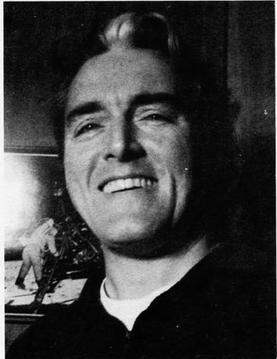
Frank Springer was an American comics artist best known for Marvel Comics' Dazzler and Nick Fury, Agent of S.H.I.E.L.D.. As well, in collaboration with writer Michael O'Donoghue, Springer created one of the first adult-oriented comics features on American newsstands: "The Adventures of Phoebe Zeit-Geist" in the magazine Evergreen Review. A multiple winner of the National Cartoonists Society's Reuben Award, Springer was a president of the Society and a founding member of the Berndt Toast Gang, its Long Island chapter.
Alain Tanner, Swiss director, producer, and screenwriter (d. 2022) births

Alain Tanner was a Swiss film director.
Bobby Van, American actor, dancer, and singer (d. 1980) births

Robert Jack Stein, known by his legalized stage name Bobby Van, was a musical actor and dancer, best known for his career on Broadway, in films and television from the 1950s through the 1970s. He was also a game show host and panelist.
Jim Fuchs, American shot putter and discus thrower (d. 2010) births

James Emanuel Fuchs was an American athlete who competed in the discus throw and shot put. He developed a new shot-putting technique to compensate for a leg injury, and then used what he called "the sideways glide" to set world records and dominate the sport over a two-year span in the early 1950s. He won bronze medals in shot put at both the 1948 Summer Olympics in London and the 1952 Summer Olympics in Helsinki.
Wally Cox, American actor (d. 1973) births

Wallace Maynard Cox was an American actor. He began his career as a standup comedian and then became the title character of the popular early U.S. television series Mister Peepers from 1952 to 1955. He also appeared as a character actor in over 20 films and dozens of television episodes. Cox was the voice of the animated canine superhero Underdog of the TV show of the same name.
Gene Stratton-Porter, American author and screenwriter (b. 1863) deaths

Gene Stratton-Porter, born Geneva Grace Stratton, was an American author, nature photographer, and naturalist from Wabash County, Indiana. In 1917 Stratton-Porter urged legislative support for the conservation of Limberlost Swamp and other wetlands in Indiana. She was also a silent film-era producer who founded her own production company, Gene Stratton Porter Productions, in 1924.
John Brunt, English captain, Victoria Cross recipient (d. 1944) births

Captain John Henry Cound Brunt, was an English recipient of the Victoria Cross, the highest award for gallantry in the face of the enemy that can be awarded to British and Commonwealth forces.

The Victoria Cross (VC) is the highest and most prestigious award of the British honours system. It is awarded for valour "in the presence of the enemy" to members of the British Armed Forces and may be awarded posthumously. It was previously awarded by countries of the Commonwealth of Nations, most of which have established their own honours systems and no longer recommend British honours. It may be awarded to a person of any military rank in any service and to civilians under military command. No civilian has received the award since 1879. Since the first awards were presented by Queen Victoria in 1857, two-thirds of all awards have been personally presented by the British monarch. The investitures are usually held at Buckingham Palace.
Benjamin A. Gilman, American soldier and politician (d. 2016) births
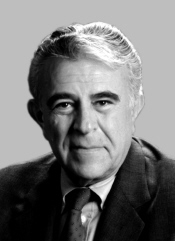
Benjamin Arthur Gilman was an American politician and Republican member of the United States House of Representatives from Middletown, New York, from January 3, 1973, to January 3, 2003.
Otto Graham, American football player and coach (d. 2003) births
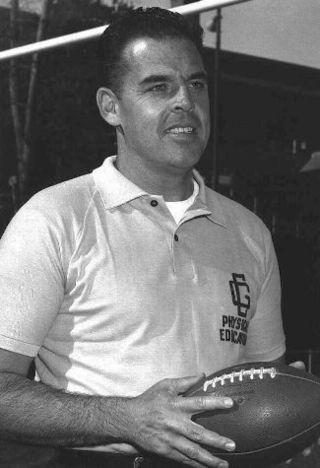
Otto Everett Graham Jr. was an American professional football player who was a quarterback for the Cleveland Browns in the All-America Football Conference (AAFC) and National Football League (NFL). Graham is regarded by critics as one of the most dominant players of his era, having taken the Browns to league championship games every year between 1946 and 1955, making ten championship appearances, and winning seven of them. With Graham at quarterback, the Browns posted a record of 57 wins, 13 losses, and one tie, including a 9–3 win–loss record in the playoffs. He holds the NFL record for career average yards gained per pass attempt, with 8.63. He also holds the record for the highest career winning percentage for an NFL starting quarterback, at 81.0%. Long-time New York Yankees owner George Steinbrenner, a friend of Graham's, once called him "as great of a quarterback as there ever was."
Piero Piccioni, Italian lawyer, pianist, and composer (d. 2004) births

Piero Piccioni was an Italian film score composer and lawyer.
Said Halim Pasha, Ottoman politician, 280th Grand Vizier of the Ottoman Empire (b. 1865) deaths
Mehmed Said Halim Pasha was an Ottoman statesman of Albanian origin who served as Grand Vizier of the Ottoman Empire from 1913 to 1917. He was one of the perpetrators of the Armenian genocide and later assassinated by Arshavir Shirakian as part of Operation Nemesis, a retribution campaign to kill perpetrators of the Armenian genocide.

The grand vizier of the Ottoman Empire was the de facto prime minister of the sultan in the Ottoman Empire, with the absolute power of attorney and, in principle, removable only by the sultan himself in the classical period, before the Tanzimat reforms, or until the 1908 Revolution. He held the imperial seal and could summon all other viziers to attend to affairs of the state in the Imperial Council; the viziers in conference were called "kubbe viziers" in reference to their meeting place, the Kubbealtı ('under-the-dome') in Topkapı Palace. His offices were located at the Sublime Porte.
Dave Brubeck, American pianist and composer (d. 2012) births

David Warren Brubeck was an American jazz pianist and composer. Often regarded as a foremost exponent of cool jazz, Brubeck's work is characterized by unusual time signatures and superimposing contrasting rhythms, meters, and tonalities.
Peter Dimmock, English sportscaster and producer (d. 2015) births
Peter Harold Dimmock, CVO, CBE was a British sports broadcaster and senior television executive during the formative years of the medium in the 1950s. He was the first host of the BBC's long-running Grandstand and of the BBC Sports Personality of the Year awards.
George Porter, English chemist and academic, Nobel Prize laureate (d. 2002) births

George Porter, Baron Porter of Luddenham was a British chemist. He was awarded the Nobel Prize in Chemistry in 1967.

The Nobel Prize in Chemistry is awarded annually by the Royal Swedish Academy of Sciences to scientists in the various fields of chemistry. It is one of the five Nobel Prizes established by the will of Alfred Nobel in 1895, awarded for outstanding contributions in chemistry, physics, literature, peace, and physiology or medicine. This award is administered by the Nobel Foundation, and awarded by the Royal Swedish Academy of Sciences on proposal of the Nobel Committee for Chemistry which consists of five members elected by the Academy. The award is presented in Stockholm at an annual ceremony on 10 December, the anniversary of Nobel's death.
Skippy Baxter, Canadian-American figure skater and coach (d. 2012) births
Lloyd Valdemar "Skippy" Baxter was an American figure skater. Born in Saskatchewan, Canada, his family moved to Oakland, California when he was 1 year of age. Skippy started his skating career as a speed skater. Often winning awards as a youth Speed skater in Oakland, California. Then later, he won two medals at the 1940 United States Figure Skating Championships: a bronze in men's singles and a silver in pair skating with Hedy Stenuf. Baxter went on to skate professionally with the Ice Capades, working with Sonja Henie in her shows.
Paul de Man, Belgian-born philosopher, literary critic and theorist (d. 1983) births
Paul de Man, born Paul Adolph Michel Deman, was a Belgian-born literary critic and literary theorist. At the time of his death, de Man was one of the most prominent literary critics in the United States—known particularly for his importation of German and French philosophical approaches into Anglo-American literary studies and critical theory. Along with Jacques Derrida, he was part of an influential critical movement that went beyond traditional interpretation of literary texts to reflect on the epistemological difficulties inherent in any textual, literary, or critical activity. This approach aroused considerable opposition, which de Man attributed to "resistance" inherent in the difficult enterprise of literary interpretation itself.
Tauba Biterman, Polish Holocaust survivor (d. 2019) births
Tauba Biterman was a Holocaust survivor from Zamość, Poland. She dedicated her life to teaching and sharing memories of the Holocaust. Her speeches painted a realistic portrait of what a Jewish girl from Poland went through between 1939 and 1945.
Alexander Dianin, Russian chemist (b. 1851) deaths
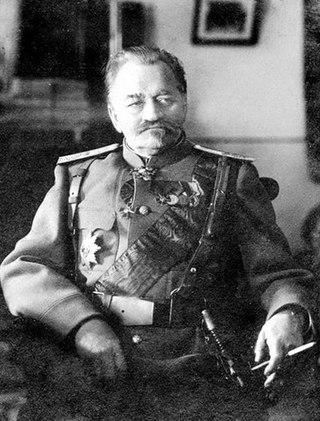
Aleksandr Pavlovich Dianin was a Russian chemist from Saint Petersburg. He carried out studies on phenols and discovered a phenol derivative now known as bisphenol A and the accordingly named Dianin's compound. He was married to the adopted daughter of fellow chemist Alexander Borodin. In 1887, Dianin succeeded his father-in-law as chair of the Chemistry Department at the Imperial Medical-Surgical Academy in St. Petersburg.
Dean Hess, American minister and colonel (d. 2015) births

Dean Elmer Hess was an American minister and United States Air Force Lieutenant Colonel who was involved in the so-called "Kiddy Car Airlift," the documented rescue of 950 orphans and 80 orphanage staff from the path of the Chinese advance during the Korean War on December 20, 1950. He is the subject of the autobiography Battle Hymn, published in 1956, which later served the basis for the 1957 film of the same name, where he was played by Rock Hudson.
Kamal Jumblatt, Lebanese lawyer and politician (d. 1977) births

Kamal Fouad Jumblatt was a Lebanese politician who founded the Progressive Socialist Party. He led the National Movement during the civil war against the Lebanese Front. He was a major ally of the Palestine Liberation Organization until his assassination in 1977. He has authored more than 40 books centered on various political, philosophical, literary, religious, medical, social, and economic topics. In September 1972, Kamal Jumblatt received the International Lenin Peace Prize. He is the father of the Lebanese Druze leader Walid Jumblatt and the son in law of the Arab writer and politician Shakib Arslan.
Irv Robbins, Canadian-American businessman, co-founded Baskin-Robbins (d. 2008) births
Irvine Robbins was a Canadian-born American businessman. He co-founded the Baskin-Robbins ice cream parlor chain in 1945 with his partner and brother-in-law Burt Baskin.

Baskin-Robbins is an American multinational chain of ice cream and cake speciality shops owned by Inspire Brands. Based in Canton, Massachusetts, Baskin-Robbins was founded in 1945 by Burt Baskin (1913–1967) and Irv Robbins (1917–2008) in Glendale, California. It is the world's largest chain of ice cream speciality stores, with more than 8,000 locations, including nearly 2,500 shops in the United States and over 5,000 in other countries. Baskin-Robbins has stores in nearly 50 countries.
Yekaterina Budanova, Russian captain and pilot (d. 1943) births

Yekaterina Vasilyevna Budanova, nicknamed Katya (Катя), was a fighter pilot in the Soviet Air Force during World War II. Usually credited with five or more aerial victories, along with Lydia Litvyak, she is often considered one of the world's two female fighter aces. She was shot down by either Luftwaffe ace Georg Schwientek of JG 52 or ace Emil Bitsch, of JG 3.
Kristján Eldjárn, Icelandic educator and politician, 3rd President of Iceland (d. 1982) births
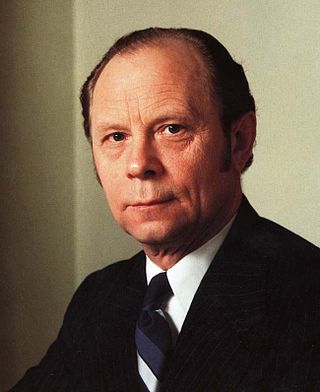
Kristján Eldjárn was the third president of Iceland, from 1968 to 1980.

The president of Iceland is the head of state of Iceland. The incumbent is Guðni Thorlacius Jóhannesson, who is now in his second term as president, elected in 2016 and re-elected in 2020.
Hugo Peretti, American songwriter and producer (d. 1986) births
Hugo E. Peretti was an American songwriter, trumpeter, and record producer.
Cyril Washbrook, English cricketer (d. 1999) births
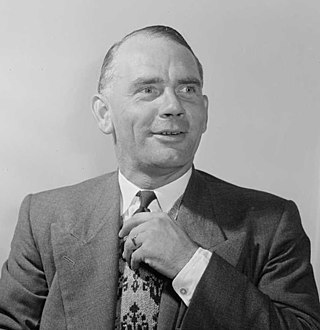
Cyril Washbrook was an English cricketer, who played for Lancashire and England. He had a long career, split by World War II, and ending when he was aged 44. Washbrook, who is most famous for opening the batting for England with Len Hutton, which he did 51 times, played a total of 592 first-class cricket matches, of which 37 were Tests. Washbrook was named one of the five Wisden Cricketers of the Year in 1947.
Karl Haas, German-American pianist, conductor, and radio host (d. 2005) births

Karl Haas was a German-American classical music radio host, known for his sonorous speaking voice, humanistic approach to music appreciation, and popularization of classical music. He was the host of the classical music radio program Adventures in Good Music, which was syndicated to commercial and public radio stations around the world. He also published the book Inside Music. He was a respected musicologist, as well as an accomplished pianist and conductor. In 1996, he received an honorary degree in Doctor of Letters from Oglethorpe University.
Eleanor Holm, American swimmer and actress (d. 2004) births
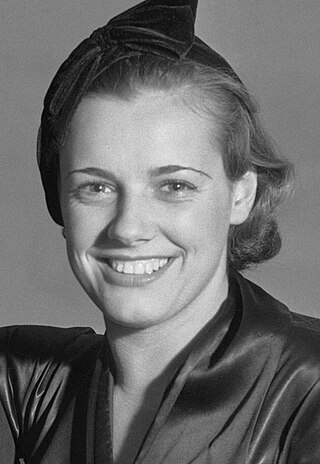
Eleanor G. Holm was an American competition swimmer and Olympic gold medalist. An Olympian in 1928 and 1932, she was expelled from the 1936 Summer Olympics team by Avery Brundage under controversial circumstances. She went on to have a high-profile career as a socialite and interior designer, and co-starred in a Hollywood Tarzan movie, Tarzan's Revenge.
David M. Potter, American historian, author, and academic (d. 1971) births
David Morris Potter was an American historian specializing in the study of the American South and the American Civil War.
Rulon Jeffs, American religious leader (d. 2002) births

Rulon Timpson Jeffs, known to followers as Uncle Rulon, was an American polygamist and religious leader who served as the president of the Fundamentalist Church of Jesus Christ of Latter-Day Saints, a Mormon fundamentalist organization based in Colorado City, Arizona, United States from 1986 until his death in 2002. He was the father of later FLDS Church leader and convicted felon Warren Jeffs.
Alan McGilvray, Australian cricketer and sportscaster (d. 1996) births
Alan David McGilvray was an Australian cricketer who played several first-class seasons for New South Wales in the mid-1930s before becoming the doyen of Australian cricket commentators. He became identified as the voice of Australian cricket through his ABC radio broadcasts.
Pierre Graber, Swiss lawyer and politician, 69th President of the Swiss Confederation (d. 2003) births
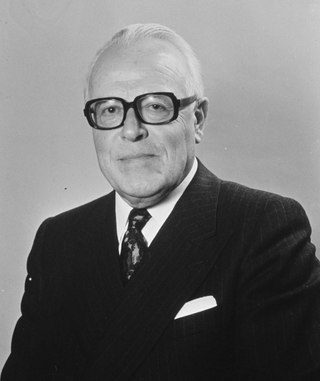
Pierre Graber was a Swiss politician and member of the Swiss Federal Council (1970–1978).

Below is a list of presidents of the Swiss Confederation (1848–present). It presents the presiding member of the Swiss Federal Council, the country's seven-member executive.
Baby Face Nelson, American gangster (d. 1934) births

Lester Joseph Gillis, also known as George Nelson and Baby Face Nelson, was an American bank robber who became a criminal partner of John Dillinger, when he helped Dillinger escape from prison, in Crown Point, Indiana. Later, the Federal Bureau of Investigation (FBI) announced Nelson and the remaining gang of bank robbers were collectively "Public Enemy Number One."
Miklós Szabó, Hungarian runner (d. 2000) births
Miklós Szabó was a Hungarian middle distance runner who held world records over two distances.
Herta Freitag, Austrian-American mathematician (d. 2000) births

Herta Freitag was an Austrian-American mathematician, a professor of mathematics at Hollins College, known for her work on the Fibonacci numbers.
John Barkley Rosser Sr., American logician (d. 1989) births
John Barkley Rosser Sr. was an American logician, a student of Alonzo Church, and known for his part in the Church–Rosser theorem, in lambda calculus. He also developed what is now called the "Rosser sieve", in number theory. He was part of the mathematics department at Cornell University from 1936 to 1963, chairing it several times. He was later director of the Army Mathematics Research Center at the University of Wisconsin–Madison and the first director of the Communications Research Division of IDA. Rosser also authored mathematical textbooks.
Elizabeth Yates, American journalist and author (d. 2001) births
Elizabeth Yates McGreal was an American writer. She may have been known best for the biographical novel Amos Fortune, Free Man, winner of the 1951 Newbery Medal. She had been a Newbery runner-up in 1944 for Mountain Born. She began her writing career as a journalist, contributing travel articles to The Christian Science Monitor and The New York Times. Many of her books were illustrated by the British artist Nora S. Unwin.
Ève Curie, French-American journalist and pianist (d. 2007) births
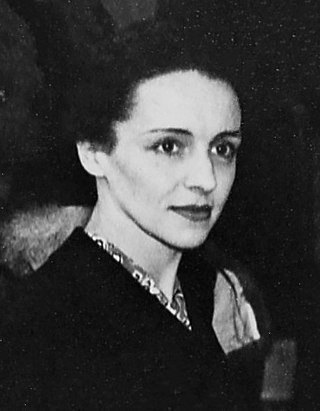
Ève Denise Curie Labouisse was a French and American writer, journalist and pianist. Ève Curie was the younger daughter of Marie Skłodowska-Curie and Pierre Curie. Her sister was Irène Joliot-Curie and her brother-in-law Frédéric Joliot-Curie. She worked as a journalist and authored her mother's biography Madame Curie and a book of war reportage, Journey Among Warriors. From the 1960s she committed herself to work for UNICEF, providing help to children and mothers in developing countries. Ève was the only member of her family who did not choose a career as a scientist and did not win a Nobel Prize, although her husband, Henry Richardson Labouisse Jr., did collect the Nobel Peace Prize in 1965 on behalf of UNICEF, completing the Curie family legacy of five Nobel Prizes.
Tony Lazzeri, American baseball player and manager (d. 1946) births

Anthony Michael Lazzeri was an American professional baseball second baseman during the 1920s and 1930s, predominantly with the New York Yankees of Major League Baseball. He was part of the famed "Murderers' Row" Yankee batting lineup of the late 1920s, along with Babe Ruth, Lou Gehrig, and Bob Meusel.
Eliot Porter, American photographer and academic (d. 1990) births

Eliot Furness Porter was an American photographer best known for his color photographs of nature.
Agnes Moorehead, American actress (d. 1974) births

Agnes Robertson Moorehead was an American actress. In a career spanning four decades, her credits included work in radio, stage, film, and television. Moorehead was the recipient of such accolades as a Primetime Emmy Award and two Golden Globe Awards, in addition to nominations for four Academy Awards. She is best known for her role as Endora on the television series Bewitched, but she also had notable roles in films, including Citizen Kane, Dark Passage, All That Heaven Allows, and Show Boat. She is also known for the radioplay Sorry, Wrong Number (1943) and its several subsequent re-recordings for Suspense. Moorehead garnered four nominations for the Academy Award for Best Supporting Actress, for her performances in: The Magnificent Ambersons (1942), Mrs. Parkington (1944), Johnny Belinda (1948), and Hush...Hush, Sweet Charlotte (1964).
Alfred Eisenstaedt, German-American photographer and journalist (d. 1995) births

Alfred Eisenstaedt was a German-born American photographer and photojournalist. He began his career in Germany prior to World War II but achieved prominence as a staff photographer for Life magazine after moving to the U.S. Life featured more than 90 of his pictures on its covers, and more than 2,500 of his photo stories were published.
John McDonald, Scottish-Australian politician, 37th Premier of Victoria (d. 1977) births
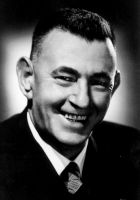
Sir John Gladstone Black McDonald was 37th Premier of Victoria from 27 June 1950 to 17 December 1952, except for a few days in October 1952 when Thomas Hollway led a brief Electoral Reform League government. McDonald came to office by defeating Hollway's Liberals, but was himself vanquished by the Labor Party under John Cain in 1952.

The premier of Victoria is the head of government in the Australian state of Victoria. The premier is appointed by the governor of Victoria, and is the leader of the political party able to secure a majority in the Victorian Legislative Assembly.
Gunnar Myrdal, Swedish sociologist and economist, Nobel Prize laureate (d. 1987) births

Karl Gunnar Myrdal was a Swedish economist and sociologist. In 1974, he received the Nobel Memorial Prize in Economic Sciences along with Friedrich Hayek for "their pioneering work in the theory of money and economic fluctuations and for their penetrating analysis of the interdependence of economic, social and institutional phenomena." When his wife, Alva Myrdal, received the Nobel Peace Prize in 1982, they became the fourth ever married couple to have won Nobel Prizes, and the first to win independent of each other. He is best known in the United States for his study of race relations, which culminated in his book An American Dilemma: The Negro Problem and Modern Democracy. The study was influential in the 1954 landmark U.S. Supreme Court Decision Brown v. Board of Education. In Sweden, his work and political influence were important to the establishment of the Folkhemmet and the welfare state. Myrdal and his wife advocated for social engineering.

The Nobel Memorial Prize in Economic Sciences, officially the Sveriges Riksbank Prize in Economic Sciences in Memory of Alfred Nobel, is an economics award administered by the Nobel Foundation.
Winifred Lenihan, American actress, writer, and director (d. 1964) births

Winifred Lenihan was an American actress, writer, and director. She studied at the American Academy of Dramatic Arts before making her debut in 1918. Although she portrayed the would-be eloper Anne in The Dover Road (1921), Anne Hathaway in Will Shakespeare (1923), and the resourceful Mary Todd in White Wings (1926), she is recalled mostly as Joan of Arc in the original American production of Saint Joan (1923).
Ira Gershwin, American songwriter (d. 1983) births

Ira Gershwin was an American lyricist who collaborated with his younger brother, composer George Gershwin, to create some of the most memorable songs in the English language of the 20th century. With George, he wrote more than a dozen Broadway shows, featuring songs such as "I Got Rhythm", "Embraceable You", "The Man I Love" and "Someone to Watch Over Me". He was also responsible, along with DuBose Heyward, for the libretto to George's opera Porgy and Bess.
Homer N. Wallin, American admiral (d. 1984) births

Homer Norman Wallin was a vice admiral in the United States Navy, best known for his salvage of ships sunk in the attack on Pearl Harbor.
Sylvia Townsend Warner, English author and poet (d. 1978) births
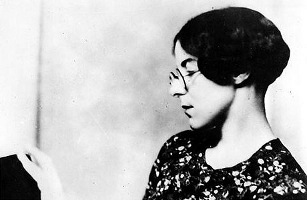
Sylvia Nora Townsend Warner was an English novelist, poet and musicologist, known for works such as Lolly Willowes, The Corner That Held Them, and Kingdoms of Elfin.
Osbert Sitwell, English-Italian captain, poet, and author (d. 1969) births

Sir Francis Osbert Sacheverell Sitwell, 5th Baronet CH was an English writer. His elder sister was Edith Sitwell and his younger brother was Sacheverell Sitwell. Like them, he devoted his life to art and literature.
Werner von Siemens, German engineer and businessman, founded the Siemens Company (b. 1816) deaths

Ernst Werner Siemens was a German electrical engineer, inventor and industrialist. Siemens's name has been adopted as the SI unit of electrical conductance, the siemens. He founded the electrical and telecommunications conglomerate Siemens.
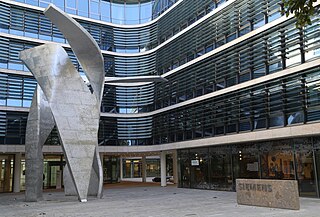
Siemens AG is a German multinational conglomerate corporation and the largest industrial manufacturing company in Europe headquartered in Munich with branch offices abroad.
Dion Fortune, Welsh occultist, psychologist, and author (d. 1946) births

Dion Fortune was a British occultist, ceremonial magician, novelist and author. She was a co-founder of the Fraternity of the Inner Light, an occult organisation that promoted philosophies which she claimed had been taught to her by spiritual entities known as the Ascended Masters. A prolific writer, she produced a large number of articles and books on her occult ideas and also authored seven novels, several of which expound occult themes.
Yoshio Nishina, Japanese physicist and academic (d. 1951) births

Yoshio Nishina was a Japanese physicist who was called "the founding father of modern physics research in Japan". He led the efforts of Japan to develop an atomic bomb during World War II.
Rudolf Schlichter, German painter and illustrator (d. 1955) births
Rudolf Schlichter was a German painter and one of the most important representatives of the Neue Sachlichkeit movement.
Jefferson Davis, American general and politician, President of the Confederate States of America (b. 1808) deaths

Jefferson F. Davis was an American politician who served as the president of the Confederate States from 1861 to 1865. He represented Mississippi in the United States Senate and the House of Representatives as a member of the Democratic Party before the American Civil War. He had previously served as the United States Secretary of War from 1853 to 1857 under President Franklin Pierce.
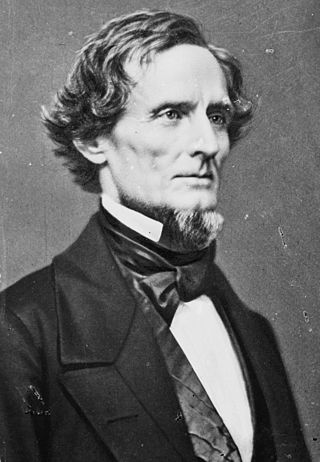
The president of the Confederate States was the head of state and head of government of the Confederate States. The president was the chief executive of the federal government and was the commander-in-chief of the Confederate Army and the Confederate Navy.
Will Hay, English actor, director, and screenwriter (d. 1949) births

William Thomson Hay was an English comedian who wrote and acted in a schoolmaster sketch that later transferred to the screen, where he also played other authority figures with comic failings. His film Oh, Mr. Porter! (1937), made by Gainsborough Pictures, is often cited as the supreme British-produced film-comedy, and in 1938 he was the third highest-grossing star in the UK. Many comedians have acknowledged him as a major influence. Hay was also a keen amateur astronomer.
Lynn Fontanne, British actress (d. 1983) births
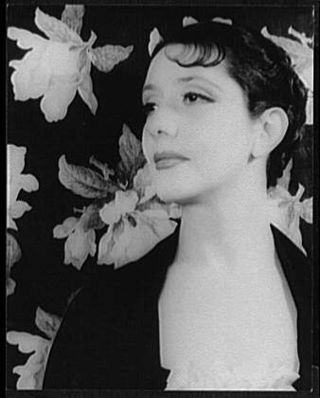
Lynn Fontanne was an English actress. After early success in supporting roles in the West End, she met the American actor Alfred Lunt, whom she married in 1922 and with whom she co-starred in Broadway and West End productions over the next four decades. They became known as "The Lunts", and were celebrated on both sides of the Atlantic.
Joseph Lamb, American pianist and composer (d. 1960) births

Joseph Francis Lamb was an American composer of ragtime music. Lamb, of Irish descent, was the only non-African American of the "Big Three" composers of classical ragtime, the other two being Scott Joplin and James Scott. The ragtime of Joseph Lamb ranges from standard popular fare to complex and highly engaging. His use of long phrases was influenced by classical works he had learned from his sister and others while growing up, but his sense of structure was potentially derived from his study of Joplin's piano rags. By the time he added some polish to his later works in the 1950s, Lamb had mastered the classic rag genre in a way that almost no other composer was able to approach at that time, and continued to play it passably as well, as evidenced by at least two separate recordings done in his home, as well as a few recorded interviews.
Joyce Kilmer, American soldier, author, and poet (d. 1918) births

Alfred Joyce Kilmer was an American writer and poet mainly remembered for a short poem titled "Trees" (1913), which was published in the collection Trees and Other Poems in 1914. Though a prolific poet whose works celebrated the common beauty of the natural world as well as his Roman Catholic religious faith, Kilmer was also a journalist, literary critic, lecturer, and editor. At the time of his deployment to Europe during World War I, Kilmer was considered the leading American Roman Catholic poet and lecturer of his generation, whom critics often compared to British contemporaries G. K. Chesterton (1874–1936) and Hilaire Belloc (1870–1953). He enlisted in the New York National Guard and was deployed to France with the 69th Infantry Regiment in 1917. He was killed by a sniper's bullet at the Second Battle of the Marne in 1918 at the age of 31. He was married to Aline Murray, also an accomplished poet and author, with whom he had five children.
Cornelia Meigs, American author, playwright, and academic (d. 1973) births
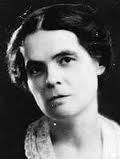
Cornelia Lynde Meigs (1884–1973) was an American writer of fiction and biography for children, teacher of English and writing, historian and critic of children's literature. She won the Newbery Medal for her 1933 biography of Louisa May Alcott, entitled Invincible Louisa. She also wrote three Newbery Honor Books.
Warren Bardsley, Australian cricketer (d. 1954) births

Warren "Curly" Bardsley was an Australian Test cricketer. An opening batsman, Bardsley played 41 Tests between 1909 and 1926 and over 200 first-class games for New South Wales. He was Wisden's Cricketer of the Year in 1910.
Alfred Escher, Swiss businessman and politician, founded Credit Suisse (b. 1819) deaths

Johann Heinrich Alfred Escher vom Glas, known as Alfred Escher was a Swiss politician, business leader and railways pioneer. Thanks to his numerous political posts and his significant role in the foundation and management of the Swiss Northeastern Railway, the Swiss Federal Institute of Technology, Credit Suisse, Swiss Life and the Gotthard Railway, Escher had an unmatched influence on Switzerland's political and economic development in the 19th century.

Credit Suisse Group AG is a global investment bank and financial services firm founded and based in Switzerland. Headquartered in Zürich, it maintains offices in all major financial centers around the world and is one of the nine global "Bulge Bracket" banks providing services in investment banking, private banking, asset management, and shared services. It is known for strict bank–client confidentiality and banking secrecy. The Financial Stability Board considers it to be a global systemically important bank. Credit Suisse is also primary dealer and Forex counterparty of the FED.
Anthony Trollope, English novelist, essayist, and short story writer (b. 1815) deaths

Anthony Trollope was an English novelist and civil servant of the Victorian era. Among his best-known works is a series of novels collectively known as the Chronicles of Barsetshire, which revolves around the imaginary county of Barsetshire. He also wrote novels on political, social, and gender issues, and other topical matters.
Erastus Brigham Bigelow, American businessman (b. 1814) deaths
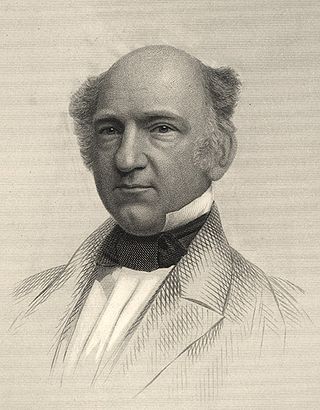
Erastus Brigham Bigelow was an American inventor of weaving machines.
Elvia Carrillo Puerto, Mexican politician (d. 1968) births

Elvia Carrillo Puerto was a Mexican socialist politician and feminist activist. Carillo had been married at the age of 13 and widowed by 21. She founded Mexico's first feminist leagues in 1912, including the League of Rita Cetina Gutierrez in 1919. In 1923, Carillo became Mexico's first woman state deputy, and elected to the Chamber of Deputies Due to Carillo's contributions to Mexican government and history, she was officially decorated as a "Veteran of the Revolution." Carillo's tireless dedication to the revolution and women's movement earned her the nickname "The Red Nun".
Theodoros Vryzakis, Greek painter and educator (b. 1814) deaths

Theodoros Vryzakis was a Greek painter, known mostly for his historical scenes. He was one of the founders of the "Munich School", composed of Greek artists who had studied in that city.
Fred Duesenberg, German-American businessman, co-founded the Duesenberg Automobile & Motors Company (d. 1932) births

Frederick Samuel Duesenberg was a German-born American automobile and engine designer, manufacturer and sportsman who was internationally known as a designer of racecars and racing engines. Duesenberg's engineering expertise influenced the development of the automobile, especially during the 1910s and 1920s. He is credited with introducing an eight-cylinder engine, also known as the Duesenberg Straight-8 engine, and four-wheel hydraulic brakes, a first for American cars, in addition to other mechanical innovations. Duesenberg was also patentholder of his designs for a four-wheel hydraulic brake, an early automatic transmission, and a cooling system, among others. Fred and his younger brother, August "Augie" Duesenberg, shared the patents, filed in 1913 and renewed in 1918, for their "walking beam" four-cylinder engine and the Duesenberg Straight 8.
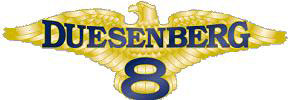
Duesenberg Automobile and Motors Company, Inc. was an American racing and luxury automobile manufacturer founded in Indianapolis, Indiana, by brothers Fred and August Duesenberg in 1920. The company is known for popularizing the straight-eight engine and four-wheel hydraulic brakes. A Duesenberg car was the first American car to win a Grand Prix race, winning the 1921 French Grand Prix. Duesenbergs won the Indianapolis 500 in 1924, 1925, and 1927. Transportation executive Errett Lobban Cord acquired the Duesenberg corporation in 1926. The company was sold and dissolved in 1937.
Albert Bond Lambert, American golfer and pilot (d. 1946) births

Albert Bond Lambert was an American golfer who competed in the 1900 Summer Olympics and in the 1904 Summer Olympics. He was also a prominent St. Louis aviator and benefactor of aviation.
Evelyn Underhill, English mystic and author (d. 1941) births
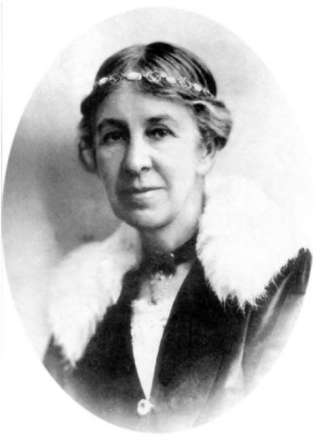
Evelyn Underhill was an English Anglo-Catholic writer and pacifist known for her numerous works on religion and spiritual practice, in particular Christian mysticism. Her best-known is Mysticism, published in 1911.
Arthur Henry Adams, Australian journalist and author (d. 1936) births
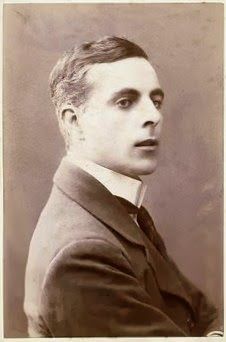
Arthur Henry Adams was a journalist and author. He started his career in New Zealand, though he spent most of it in Australia, and for a short time lived in China and London.
August Schleicher, German linguist and academic (b. 1821) deaths

August Schleicher was a German linguist. His great work was A Compendium of the Comparative Grammar of the Indo-European Languages in which he attempted to reconstruct the Proto-Indo-European language. To show how Indo-European might have looked, he created a short tale, Schleicher's fable, to exemplify the reconstructed vocabulary and aspects of Indo-European society inferred from it.
Jean Pierre Flourens, French physiologist and academic (b. 1794) deaths

Marie Jean Pierre Flourens, father of Gustave Flourens, was a French physiologist, the founder of experimental brain science, and a pioneer in anesthesia.
William S. Hart, American actor, director, producer, and screenwriter (d. 1946) births

William Surrey Hart was an American silent film actor, screenwriter, director and producer. He is remembered as a foremost Western star of the silent era who "imbued all of his characters with honor and integrity." During the late 1910s and early 1920s, he was one of the most consistently popular movie stars, frequently ranking high among male actors in popularity contests held by movie fan magazines.
Charles Martin Hall, American chemist and engineer (d. 1914) births

Charles Martin Hall was an American inventor, businessman, and chemist. He is best known for his invention in 1886 of an inexpensive method for producing aluminum, which became the first metal to attain widespread use since the prehistoric discovery of iron. He was one of the founders of Alcoa. Alfred E. Hunt, together with Charles Hall and a group of five other individuals – his partner at the Pittsburgh Testing Laboratory, George Hubbard Clapp; his chief chemist, W. S. Sample; Howard Lash, head of the Carbon Steel Company; Millard Hunsiker, sales manager for the Carbon Steel Company; and Robert Scott, a mill superintendent for the Carnegie Steel Company – raised $20,000 to launch the Pittsburgh Reduction Company, which was later renamed Aluminum Company of America and shortened to Alcoa.
William John Swainson, English ornithologist and entomologist (b. 1789) deaths

William John Swainson FLS, FRS, was an English ornithologist, malacologist, conchologist, entomologist and artist.
Hans Molisch, Czech-Austrian botanist and academic (d. 1937) births

Hans Molisch was a Czech-Austrian botanist.
Haraprasad Shastri, Indian historian and scholar (d. 1931) births
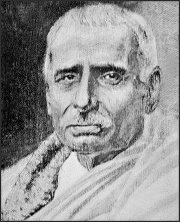
Hara Prasad Shastri, also known as Hara Prasad Bhattacharya, was an Indian academic, Sanskrit scholar, archivist and historian of Bengali literature. He is most known for discovering the Charyapada, the earliest known examples of Bengali literature.
August von Mackensen, German field marshal (d. 1945) births

Anton Ludwig Friedrich August von Mackensen, ennobled as "von Mackensen" in 1899, was a German field marshal. He commanded successfully during World War I of 1914–1918 and became one of the German Empire's most prominent and competent military leaders. After the armistice of November 1918 the victorious Allies interned Mackensen in Serbia for a year. He retired from the army in 1920; in 1933 Hermann Göring made him a Prussian state councillor. During the Nazi era (1933–1945), Mackensen remained a committed monarchist and sometimes appeared at official functions in his First World War uniform. Senior NSDAP members suspected him of disloyalty to the Third Reich, but nothing was proven against him.
Johann Palisa, Austrian astronomer (d. 1925) births

Johann Palisa was an Austrian astronomer, born in Troppau, Austrian Silesia, now Czech Republic. He was a prolific discoverer of asteroids, discovering 122 in all, from 136 Austria in 1874 to 1073 Gellivara in 1923. Some of his notable discoveries include 153 Hilda, 216 Kleopatra, 243 Ida, 253 Mathilde, 324 Bamberga, and the near-Earth asteroid 719 Albert. Palisa made his discoveries without the aid of photography, and he remains the most successful visual (non-photographic) asteroid discoverer of all time. He was awarded the Valz Prize from the French Academy of Sciences in 1906. The asteroid 914 Palisana, discovered by Max Wolf in 1919, and the lunar crater Palisa were named in his honour.
Frédéric Bazille, French painter and soldier (d. 1870) births

Jean Frédéric Bazille was a French Impressionist painter. Many of Bazille's major works are examples of figure painting in which he placed the subject figure within a landscape painted en plein air.
Wilhelm Rudolph Fittig, German chemist (d. 1910) births
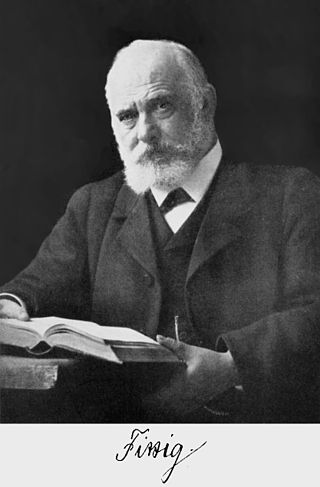
Wilhelm Rudolph Fittig was a German chemist. He discovered the pinacol coupling reaction, mesitylene, diacetyl and biphenyl. Fittig studied the action of sodium on ketones and hydrocarbons. He discovered the Fittig reaction or Wurtz–Fittig reaction for the synthesis of alkylbenzenes, he proposed a diketone structure for benzoquinone and isolated phenanthrene from coal tar. He discovered and synthesized the first lactones and investigated structures of piperine naphthalene and fluorene.
John S. Mosby, American colonel (d. 1916) births

John Singleton Mosby, also known by his nickname "Gray Ghost", was a Confederate army cavalry battalion commander in the American Civil War. His command, the 43rd Battalion, Virginia Cavalry, known as Mosby's Rangers or Mosby's Raiders, was a partisan ranger unit noted for its lightning-quick raids and its ability to elude Union Army pursuers and disappear, blending in with local farmers and townsmen. The area of northern central Virginia in which Mosby operated with impunity became known as Mosby's Confederacy. After the war, Mosby became a Republican and worked as an attorney, supporting his former enemy's commander, U.S. President Ulysses S. Grant. He also served as the American consul to Hong Kong and in the U.S. Department of Justice.
William Arnott, Australian biscuit manufacturer and founder of Arnott's Biscuits (d. 1901) births
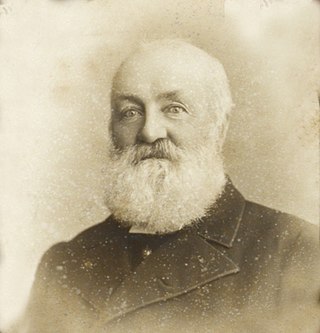
William Arnott was the Scottish founder of the Arnott's Biscuits Holdings in Australia.

Arnott's Biscuits Limited is an Australian producer of biscuits and snack food. Founded in 1865, they are the largest producer of biscuits in Australia and a subsidiary of KKR.
Max Müller, German-English philologist and orientalist (d. 1900) births

Friedrich Max Müller was a German-born philologist and Orientalist, who lived and studied in Britain for most of his life. He was one of the founders of the western academic disciplines of Indian studies and religious studies. Müller wrote both scholarly and popular works on the subject of Indology. The Sacred Books of the East, a 50-volume set of English translations, was prepared under his direction. He also promoted the idea of a Turanian family of languages.
Robert Spear Hudson, English businessman and philanthropist (d. 1884) births

Robert Spear Hudson was an English businessman who popularised dry soap powder. His company was very successful thanks to both an increasing demand for soap and his unprecedented levels of advertising. After his death, the company was taken over by his son, and was later purchased by Lever Brothers.
Richard Hanson, English-Australian politician, 4th Premier of South Australia (d. 1876) births

Sir Richard Davies Hanson, was the fourth Premier of South Australia, from 30 September 1857 until 8 May 1860, and was a Chief Judge from 20 November 1861 until 4 March 1876 on the Supreme Court of South Australia, which is the highest ranking court in the Australian State of South Australia.

The premier of South Australia is the head of government in the state of South Australia, Australia. The Government of South Australia follows the Westminster system, with a Parliament of South Australia acting as the legislature. The premier is appointed by the Governor of South Australia, and by modern convention holds office by virtue of his or her ability to command the support of a majority of members of the lower house of Parliament, the House of Assembly.
Maria Josepha Amalia of Saxony (d. 1829) births

Maria Josepha Amalia of Saxony was Queen of Spain as the third wife of King Ferdinand VII of Spain. She was the youngest daughter of Prince Maximilian of Saxony (1759–1838) and his first wife, Princess Carolina of Parma (1770–1804), daughter of Duke Ferdinand of Parma. She was a member of the house of Wettin.
William II of the Netherlands (d. 1849) births
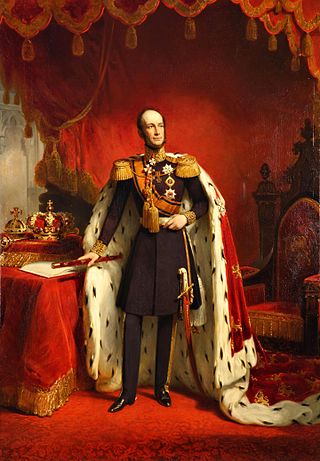
William II was King of the Netherlands, Grand Duke of Luxembourg, and Duke of Limburg.
Jonathan Shipley, English bishop (b. 1714) deaths

Jonathan Shipley was a clergyman who held offices in the Church of England, who became Bishop of Llandaff from January to September 1769 and Bishop of St Asaph from September 1769 until his death.
Jean-Baptiste-Siméon Chardin, French painter (b. 1699) deaths
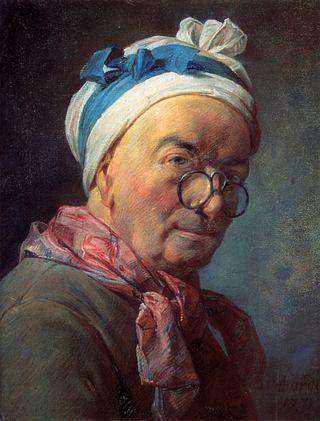
Jean-Baptiste-Siméon Chardin was an 18th-century French painter. He is considered a master of still life, and is also noted for his genre paintings which depict kitchen maids, children, and domestic activities. Carefully balanced composition, soft diffusion of light, and granular impasto characterize his work.
Joseph Louis Gay-Lussac, French physicist and chemist (d. 1850) births

Joseph Louis Gay-Lussac was a French chemist and physicist. He is known mostly for his discovery that water is made of two parts hydrogen and one part oxygen, for two laws related to gases, and for his work on alcohol–water mixtures, which led to the degrees Gay-Lussac used to measure alcoholic beverages in many countries.
Giovanni Battista Morgagni, Italian anatomist and pathologist (b. 1682) deaths
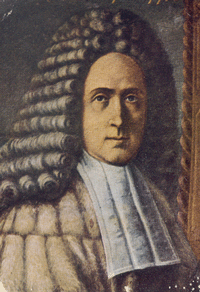
Giovanni Battista Morgagni was an Italian anatomist, generally regarded as the father of modern anatomical pathology, who taught thousands of medical students from many countries during his 56 years as Professor of Anatomy at the University of Padua.
Gabriel Duvall, American jurist and politician (d. 1844) births
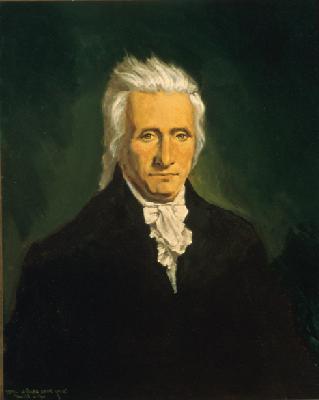
Gabriel Duvall was an American politician and jurist. Duvall was an Associate Justice of the Supreme Court of the United States from 1811 to 1835, during the Marshall Court. Previously, Duvall was the Comptroller of the Treasury, a Maryland state court judge, a member of the U.S. House of Representatives from Maryland, and a Maryland state legislator.
Lady Grizel Baillie, Scottish poet and songwriter (b. 1665) deaths
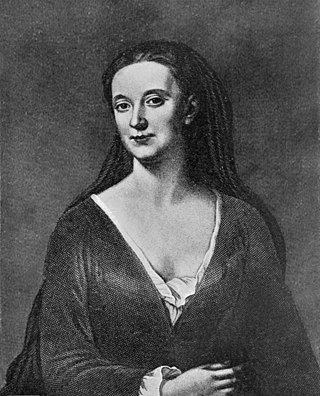
Lady Grizel Baillie, née Hume, was a Scottish gentlewoman and songwriter. Her accounting ledgers, in which she kept details about her household for more than 50 years, provide information about social life in Scotland in the eighteenth century.
Warren Hastings, British colonial administrator of India (d. 1818) births

Warren Hastings was a British colonial administrator, who served as the first Governor of the Presidency of Fort William (Bengal), the head of the Supreme Council of Bengal, and so the first Governor-General of Bengal in 1772–1785. He and Robert Clive are credited with laying the foundation of the British Empire in India. He was an energetic organizer and reformer. In 1779–1784 he led forces of the East India Company against a coalition of native states and the French. Finally, the well-organized British side held its own, while France lost influence in India. In 1787, he was accused of corruption and impeached, but after a long trial acquitted in 1795. He was made a Privy Councillor in 1814.
Guillaume-Chrétien de Lamoignon de Malesherbes, French minister and politician (d. 1794) births

Guillaume-Chrétien de Lamoignon de Malesherbes, often referred to as Malesherbes or Lamoignon-Malesherbes, was a French statesman and minister in the Ancien Régime, and later counsel for the defense of Louis XVI. He is known for his vigorous criticism of royal abuses as President of the Cour des aides and his role, as director of censorship, in helping with the publication of the Encyclopédie. Despite his committed monarchism, his writings contributed to the development of liberalism during the French Age of Enlightenment.
James Elphinston, Scottish philologist and linguist (d. 1809) births
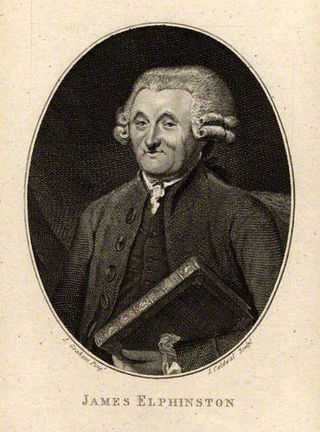
James Elphinston was a well noted 18th-century Scottish educator, orthographer, phonologist and linguistics expert.
Nicholas Rowe, English poet and playwright (b. 1674) deaths

Nicholas Rowe, English dramatist, poet and miscellaneous writer, was appointed Poet Laureate in 1715. His plays and poems were well-received during his lifetime, with one of his translations described as one of the greatest productions in English poetry. He was also considered the first editor of the works of William Shakespeare.
Benedictus Buns, Dutch priest and composer (b. 1642) deaths
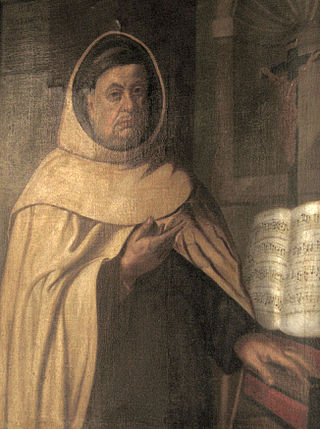
Benedictus Buns, Benedictus à sancto Josepho, was a priest and composer.
Eleonora Gonzaga, Queen consort of Ferdinand III (b. 1630) deaths

Eleonora Gonzaga, was by birth Princess of Mantua, Nevers and Rethel from the Nevers branch of the House of Gonzaga and was Holy Roman Empress, German Queen, Queen consort of Hungary and Bohemia by marriage to Emperor Ferdinand III.
Marie Adélaïde of Savoy (d. 1712) births

Marie Adélaïde of Savoy was the wife of Louis, Dauphin of France, Duke of Burgundy. She was the eldest daughter of Victor Amadeus II, Duke of Savoy, and of Anne Marie d'Orléans. Her betrothal to the Duke of Burgundy in June 1696 was part of the Treaty of Turin, signed on 29 August 1696. She was the mother of the future King Louis XV of France. Styled as Duchess of Burgundy after her marriage, she became Dauphine of France upon the death of her father-in-law, Le Grand Dauphin, in 1711. She died of measles in 1712, followed by her husband a week later.
John Lightfoot, English priest, scholar, and academic (b. 1602) deaths
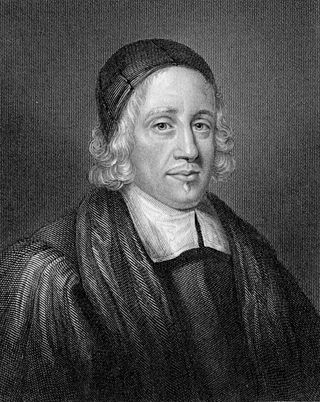
John Lightfoot was an English churchman, rabbinical scholar, Vice-Chancellor of the University of Cambridge and Master of St Catharine's College, Cambridge.
Baltasar Gracián, Spanish priest and author (b. 1601) deaths

Baltasar Gracián y Morales, S.J., better known as Baltasar Gracián, was a Spanish Jesuit and baroque prose writer and philosopher. He was born in Belmonte, near Calatayud (Aragón). His writings were lauded by Schopenhauer and Nietzsche.
Maria de Dominici, Maltese sculptor and painter (d. 1703) births
Suor Maria de Dominici was a Maltese painter, sculptor, and a Carmelite tertiary nun. Born into a family of artists based in the city of Birgu (Vittoriosa), she was the daughter of a goldsmith and appraiser for the Knights of Malta. Two of her brothers, Raimondo de Dominici and Francesco de Dominici, were painters. Raimondo's son Bernardo would write a contemporary art history book that included references to his aunt Maria.
Claude Fleury, French historian and author (d. 1723) births

Claude Fleury, was a French priest, jurist, and ecclesiastical historian.
Edmund Andros, English courtier and politician, 4th Colonial Governor of New York (d. 1714) births

Sir Edmund Andros was an English colonial administrator in British America. He was the governor of the Dominion of New England during most of its three-year existence. At other times, Andros served as governor of the provinces of New York, East and West Jersey, Virginia, and Maryland.

The territory which would later become the state of New York was settled by European colonists as part of the New Netherland colony under the command of the Dutch West India Company in the Seventeenth Century. These colonists were largely of Dutch, Flemish, Walloon, and German stock, but the colony soon became a "melting pot." In 1664, at the onset of the Second Anglo-Dutch War, English forces under Richard Nicolls ousted the Dutch from control of New Netherland, and the territory became part of several different English colonies. Despite one brief year when the Dutch retook the colony (1673–1674), New York would remain an English and later British possession until the American colonies declared independence in 1776.
Jacques Davy Duperron, French cardinal (b. 1556) deaths

Jacques Davy Duperron was a French politician and Roman Catholic cardinal.
Ahmad Ibn al-Qadi, Moroccan writer, judge and mathematician (b. 1552) deaths
Shihab al-Din abu l-‘Abbas Ahmad ibn Mohammed ibn Mohammed ibn Ahmed ibn Ali ibn 'Abd ar-Rahman ibn Abi'l-'Afiyya al-Miknasi az-Zanati, known simply as Ahmad ibn al-Qadi or Ibn al-Qadi (1552/1553–1616), was a Moroccan polygraph. He was the leading writer from Ahmad al-Mansur's court in Morocco next to Abd al-Aziz al-Fishtali. He was also a renowned judge and mathematician.
George Monck, 1st Duke of Albemarle, English general and politician, Lord Lieutenant of Ireland (d. 1670) births

George Monck, 1st Duke of Albemarle JP KG PC was an English soldier, who fought on both sides during the Wars of the Three Kingdoms. A prominent military figure under the Commonwealth, his support was crucial to the Restoration of Charles II in 1660, who rewarded him with the title Duke of Albemarle and other senior positions.
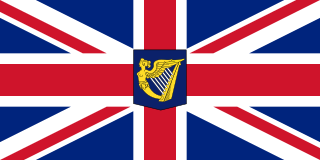
Lord Lieutenant of Ireland, or more formally Lieutenant General and General Governor of Ireland, was the title of the chief governor of Ireland from the Williamite Wars of 1690 until the Partition of Ireland in 1922. This spanned the Kingdom of Ireland (1541–1800) and the United Kingdom of Great Britain and Ireland (1801–1922). The office, under its various names, was often more generally known as the Viceroy, and his wife was known as the vicereine. The government of Ireland in practice was usually in the hands of the Lord Deputy up to the 17th century, and later of the Chief Secretary for Ireland.
William Cavendish, 1st Duke of Newcastle (d. 1676) births

William Cavendish, 1st Duke of Newcastle upon Tyne, KG, KB, PC was an English courtier and supporter of the arts. He was a renowned horse breeder, as well as being patron of the playwright Ben Jonson, and the intellectual group known as the Welbeck Circle.
Niccolò Zucchi, Italian astronomer and physicist (d. 1670) births

Niccolò Zucchi was an Italian Jesuit, astronomer, and physicist.
Jan van Scorel, Dutch painter (b. 1495) deaths

Jan van Scorel was a Dutch painter, who played a leading role in introducing aspects of Italian Renaissance painting into Dutch and Flemish Renaissance painting. He was one of the early painters of the Romanist style who had spent a number of years in Italy, where he thoroughly absorbed the Italian style of painting. His trip to Italy coincided with the brief reign of the only Dutch pope in history, Adrian VI in 1522–23. The pope made him a court painter and superintendent of his collection of antiquities. His stay in Italy lasted from 1518 to 1524 and he also visited Nuremberg, Venice and Jerusalem. Venetian art had an important impact on the development of his style.
Janus Dousa, Dutch historian and noble (d. 1604) births

Janus Dousa, Lord of Noordwyck, was a Dutch statesman, jurist, historian, poet and philologist, and the first Librarian of Leiden University Library.
Barbara Radziwiłł, queen of Poland (d. 1551) births

Barbara Radziwiłł was Queen of Poland and Grand Duchess of Lithuania as consort of Sigismund II Augustus, the last male monarch of the Jagiellon dynasty. Barbara, a great beauty and already widowed, became a royal mistress most likely in 1543 and they married in secret in July or August 1547. The marriage caused a scandal; it was vehemently opposed by Polish nobles, including Queen mother Bona Sforza. Sigismund Augustus, assisted by Barbara's cousin Mikołaj "the Black" Radziwiłł and brother Mikołaj "the Red" Radziwiłł, worked tirelessly to gain recognition of their marriage and to crown Barbara as Queen of Poland. They succeeded and Barbara's coronation was held on 7 December 1550 at Wawel Cathedral. However, her health was already failing and she died just five months later. Even though it was brief, her reign propelled the Radziwiłł family to new heights of political power and influence.
Baldassare Castiglione, Italian courtier, diplomat, and author (d. 1529) births

Baldassare Castiglione, Count of Casatico, was an Italian courtier, diplomat, soldier and a prominent Renaissance author.
Henry VI of England (d. 1471) births

Henry VI was King of England and Lord of Ireland from 1422 to 1461 and again from 1470 to 1471, and disputed King of France from 1422 to 1453. The only child of Henry V, he succeeded to the English throne at the age of nine months upon his father's death, and succeeded to the French throne on the death of his maternal grandfather, Charles VI, shortly afterwards.
Pope Clement VI (b. 1291) deaths
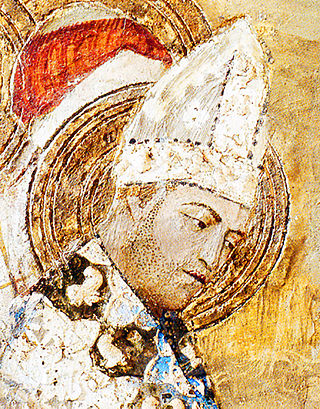
Pope Clement VI, born Pierre Roger, was head of the Catholic Church from 7 May 1342 to his death in December 1352. He was the fourth Avignon pope. Clement reigned during the first visitation of the Black Death (1348–1350), during which he granted remission of sins to all who died of the plague.
Roger Bigod, 5th Earl of Norfolk (b. 1270) deaths

Roger Bigod was 5th Earl of Norfolk.
Maximus, Metropolitan of Kyiv deaths

Maximus or Maximos was a metropolitan bishop of the Metropolis of Kiev and all Rus' in the Ecumenical Patriarchate of Constantinople. He was consecrated in Constantinople and reigned from 1283 to1305. Maximos was of Greek origin.
Ferdinand IV of Castile (d. 1312) births

Ferdinand IV of Castile called the Summoned, was King of Castile and León from 1295 until his death.
Afonso I of Portugal (b. 1109) deaths

Afonso I of Portugal, also called Afonso Henriques, nicknamed the Conqueror by the Portuguese, and El-Bortukali and Ibn-Arrink or Ibn Arrinq by the Moors whom he fought, was the first king of Portugal. He achieved the independence of the County of Portugal, establishing a new kingdom and doubling its area with the Reconquistacode: spa promoted to code: es , an objective that he pursued until his death.
Hasan al-Askari, Arabian 11th of the Twelve Imams (d. 874) births

Hasan ibn Ali ibn Muhammad, better known as Hasan al-Askari, was a descendant of the Islamic prophet Muhammad. He is regarded as the eleventh of the Twelve Imams, succeeding his father, Ali al-Hadi. Hasan Al-Askari was born in Medina in 844 and brought with his father to the garrison town of Samarra in 848, where the Abbasid caliphs held them under close surveillance until their deaths, even though neither were politically active. After the death of al-Hadi in 868, the majority of his following acknowledged his son, al-Askari, as their next Imam. Al-Askari's contact with the Shia population was restricted by the caliphs and instead he communicated with his followers through a network of representatives. He died in Samarra in 873-874 at the age of about twenty-eight and was buried in the family home next to his father, which later developed into al-Askari shrine, a major center for Shia pilgrimage. Shia sources commonly hold the Abbasids responsible for the death of al-Askari and his father. A well-known early Shia commentary of the Quran is attributed to al-Askari.

The Twelve Imams are the spiritual and political successors to the Islamic prophet Muhammad in the Twelver branch of Islam, including that of the Alawite and Alevi.
Muhammad al-Nafs al-Zakiyya, Arab rebel leader (b. 710) deaths
Muḥammad ibn ʿAbd Allāh ibn al-Ḥasan al-Muthannā ibn al-Ḥasan al-Mujtabā ibn ʿAlī ibn Abī Ṭālib or Muḥammad al-Nafs al-Zakīyya, was a descendant of the Islamic prophet Muhammad, through his daughter Fatimah. Known for his commanding oratory skills, amiable demeanor, and impressive build, he led the Alid Revolt in Medina, a failed rebellion, against the second Abbasid caliph Al-Mansur. He and a few hundred soldiers faced against a large Abbasid force under Isa ibn Musa, and he was killed on December 6, 762 CE.
Prince Toneri of Japan (b. 676) deaths

Prince Toneri was a Japanese imperial prince in the Nara period. He was a son of Emperor Tenmu. He was given the posthumous name, Emperor Sudoujinkei , as the father of Emperor Junnin. In the beginning of the Nara period, he gained political power as a leader of the Imperial family together with Prince Nagaya. He supervised the compilation of the Nihon Shoki.
Saint Nicholas, Greek bishop and saint (b. 270) deaths

Saint Nicholas of Myra, also known as Nicholas of Bari, was an early Christian bishop of Greek descent from the maritime city of Myra in Asia Minor during the time of the Roman Empire. Because of the many miracles attributed to his intercession, he is also known as Nicholas the Wonderworker. Saint Nicholas is the patron saint of sailors, merchants, archers, repentant thieves, children, brewers, pawnbrokers, unmarried people, and students in various cities and countries around Europe. His reputation evolved among the pious, as was common for early Christian saints, and his legendary habit of secret gift-giving gave rise to the traditional model of Santa Claus through Sinterklaas.
Anniversary of the Founding of Quito (Ecuador)
Public holidays in

Ecuador, officially the Republic of Ecuador, is a country in northwestern South America, bordered by Colombia on the north, Peru on the east and south, and the Pacific Ocean on the west. Ecuador also includes the Galápagos Islands in the Pacific, about 1,000 kilometers (621 mi) west of the mainland. The country's capital and largest city is Quito.
Armed Forces Day (Ukraine)
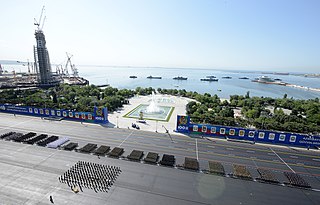
Many nations around the world observe some kind of Armed Forces Day to honor their military forces. This day is not to be confused with Veterans Day or Memorial Day.

Ukraine is a country in Eastern Europe. It is the second-largest European country after Russia, which it borders to the east and northeast. Ukraine covers approximately 600,000 square kilometres (230,000 sq mi). Prior to the ongoing Russo-Ukrainian War, it was the eighth-most populous country in Europe, with a population of around 41 million people. It is also bordered by Belarus to the north; by Poland, Slovakia, and Hungary to the west; and by Romania and Moldova to the southwest; with a coastline along the Black Sea and the Sea of Azov to the south and southeast. Kyiv is the nation's capital and largest city. Ukraine's official and national language is Ukrainian; most people are also fluent in Russian.
Christian feast day: Abraham of Kratia
Abraham of Cratia or Krateia was a Christian monk from Emesa Byzantine Syria. He is recognized as a saint in the Christian church, with a feast day of 6 December.
Christian feast day: Aemilianus (Roman Catholic Church)
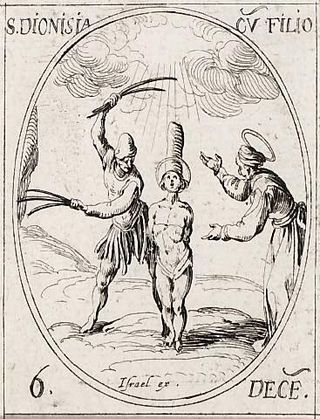
Saint Aemilianus lived in the 5th century AD, and is known as a physician, confessor, and martyr. In the reign of the Arian Vandal King Huneric, he became emmired in the Arian persecution in Africa. When he resisted conversion to Arianism, he was put to death by being flayed alive.

The Catholic Church, also known as the Roman Catholic Church, is the largest Christian church, with 1.3 billion baptized Catholics worldwide as of 2019. As the world's oldest and largest continuously functioning international institution, it has played a prominent role in the history and development of Western civilization. The church consists of 24 sui iuris churches, including the Latin Church and 23 Eastern Catholic Churches, which comprise almost 3,500 dioceses and eparchies located around the world. The pope, who is the bishop of Rome, is the chief pastor of the church. The bishopric of Rome, known as the Holy See, is the central governing authority of the church. The administrative body of the Holy See, the Roman Curia, has its principal offices in Vatican City, a small enclave of the Italian city of Rome, of which the pope is head of state.
Christian feast day: Denise and companions

Denise, Dativa, Leontia, Tertius, Emilianus, Boniface, Majoricus, and Servus are venerated as martyrs by the Catholic Church. They were killed in the late 5th century during the persecution of Trinitarian Christians in Proconsular Africa by the Arian Vandals, according to Victor of Vita. These martyrs were killed during the reign of Arian king Hunneric.
Christian feast day: Blessed János Scheffler

Beatification is a recognition accorded by the Catholic Church of a deceased person's entrance into Heaven and capacity to intercede on behalf of individuals who pray in their name. Beati is the plural form, referring to those who have undergone the process of beatification; they possess the title of "Blessed" before their names and are often referred to in English as "a Blessed" or, plurally, "Blesseds".

János Scheffler was a Hungarian-born Roman Catholic prelate who served as the bishop of two dioceses before acting as the Bishop of Oradea Mare. He was imprisoned due to opposing the Communist government policies and was killed while imprisoned. He had been noted during his episcopate for his attentiveness to vocations and to the defense of the faith from those forces that sought to disrupt it such as communism.
Christian feast day: María del Monte Carmelo Sallés y Barangueras

María del Carmen Sallés y Barangueras – in religious Carmen of Jesus – was a Spanish Roman Catholic professed religious and the founder of the Missionary Sisters of the Immaculate Conception. Sallés is best known for being a strong advocate of both genders being equal and a staunch defender of the rights of women, since she made this the focus of her life from the beginning of her entrance into the religious life.
Christian feast day: Nicholas of Myra, and its related observances: St Nicholas Day, where St. Nicholas/Santa Claus leaves little presents in children's shoes. (International)

Saint Nicholas Day, also called the Feast of Saint Nicholas, observed on 5 December or on 6 December in Western Christian countries, and on 19 December in Eastern Christian countries using the old church Calendar, is the feast day of Saint Nicholas of Myra; it falls within the season of Advent. It is celebrated as a Christian festival with particular regard to Saint Nicholas' reputation as a bringer of gifts, as well as through the attendance of church services.

Saint Nicholas of Myra, also known as Nicholas of Bari, was an early Christian bishop of Greek descent from the maritime city of Myra in Asia Minor during the time of the Roman Empire. Because of the many miracles attributed to his intercession, he is also known as Nicholas the Wonderworker. Saint Nicholas is the patron saint of sailors, merchants, archers, repentant thieves, children, brewers, pawnbrokers, unmarried people, and students in various cities and countries around Europe. His reputation evolved among the pious, as was common for early Christian saints, and his legendary habit of secret gift-giving gave rise to the traditional model of Santa Claus through Sinterklaas.

Santa Claus, also known as Father Christmas, Saint Nicholas, Saint Nick, Kris Kringle, or simply Santa, is a legendary character originating in Western Christian culture who is said to bring children gifts during the late evening and overnight hours on Christmas Eve of toys and candy or coal or nothing, depending on whether they are "naughty or nice". He supposedly accomplishes this with the aid of Christmas elves, who make the toys in his workshop, often said to be at the North Pole, and flying reindeer who pull his sleigh through the air.
Lists of holidays by various categorizations.
Christian feast day: December 6 (Eastern Orthodox liturgics)

December 5 - Eastern Orthodox liturgical calendar - December 7
Constitution Day (Spain)
Public holidays celebrated in Spain include a mix of religious, national and regional observances. Each municipality is allowed to have a maximum of 14 public holidays per year; a maximum of nine of these are chosen by the national government and at least two are chosen locally, including patronal festivals.
Day of the Ministry of Communications and Information Technologies of Azerbaijan

Azerbaijan, officially the Republic of Azerbaijan, is a transcontinental country located at the boundary of Eastern Europe and Western Asia. It is a part of the South Caucasus region and is bounded by the Caspian Sea to the east, Russia to the north, Georgia to the northwest, Armenia and Turkey to the west, and Iran to the south. Baku is the capital and largest city.
Independence Day, celebrates the independence of Finland from Russia in 1917.

Independence Day of Finland is a national public holiday, and a flag flying day, held on 6 December to celebrate Finland's declaration of independence from the Russian Empire when the Bolsheviks took power in late 1917.

Finland declared its independence on 6 December 1917. The formal Declaration of Independence was only part of the long process leading to the independence of Finland.

Russia, or the Russian Federation, is a transcontinental country spanning Eastern Europe and Northern Asia. It is the largest country in the world, with its internationally recognised territory covering 17,098,246 square kilometres (6,601,670 sq mi), and encompassing one-eighth of Earth's inhabitable landmass. Russia extends across eleven time zones and shares land boundaries with fourteen countries, more than any other country but China. It is the world's ninth-most populous country and Europe's most populous country, with a population of 146 million people. The country's capital and largest city is Moscow, the largest city entirely within Europe. Saint Petersburg is Russia's cultural centre and second-largest city. Other major urban areas include Novosibirsk, Yekaterinburg, Nizhny Novgorod, and Kazan.
National Day of Remembrance and Action on Violence Against Women (Canada)

The National Day of Remembrance and Action on Violence Against Women, also known informally as White Ribbon Day, is a day commemorated in Canada each December 6, the anniversary of the 1989 École Polytechnique massacre, in which armed student Marc Lépine murdered fourteen women and injured fourteen others in the name of "fighting feminism". The commemoration date was established by the Parliament of Canada in 1991. The legislation was introduced in the House of Commons as a private member's bill by Dawn Black, Member of Parliament for New Westminster-Burnaby, British Columbia, and received all-party support.

Canada is a country in North America. Its ten provinces and three territories extend from the Atlantic Ocean to the Pacific Ocean and northward into the Arctic Ocean, covering over 9.98 million square kilometres, making it the world's second-largest country by total area. Its southern and western border with the United States, stretching 8,891 kilometres (5,525 mi), is the world's longest binational land border. Canada's capital is Ottawa, and its three largest metropolitan areas are Toronto, Montreal, and Vancouver.